Domestic sheep are a multi-purpose livestock. Sheep are raised for fleece, meat, and milk. There are more than 200 breed and there are over one billion domestic sheep in the world.
Most people think Sheep are dumb, but they are wrong. Their flocking behavior and quickness to flee and panic can make shepherding a difficult endeavor for the uninitiated. Despite these perceptions, a University of Illinois study of sheep reported them to be just below pigs and on par with cattle in IQ. Sheep can recognize individual human faces, and remember them for years. In addition to long-term facial recognition of individuals, sheep can also differentiate emotional states through facial characteristics. If worked with patiently, sheep may learn their names and many sheep are trained to be led by halter for showing and other purposes. Sheep have also responded well to clicker training. It has been reported that some sheep have apparently shown problem-solving abilities; a flock in West Yorkshire, England allegedly found a way to get over cattle grids by rolling on their backs.
Breeds of Sheep
There are the following breeds of Sheep:
|
 Acipayam Acipayam
|
|
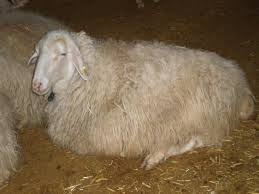
|
Acipayam sheep are a versatile and multi-purpose breed originating from Turkey, where they have been carefully developed over time through strategic crossbreeding of Awassi and Daglic sheep. This deliberate breeding program has resulted in a breed that excels in various agricultural roles, including wool production, milk production, and meat yield.
Mature Acipayam rams typically reach an average weight of 65 kg (140 lb), while ewes rea
...
|
|
 Adal Adal
|
|
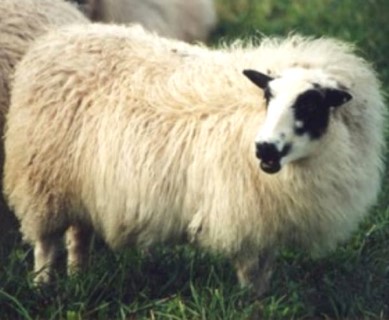
|
Adal are raised for meat and are from Ethopia. They are mainly
found in the region surrounding Dancalia in northeastern Ethiopia. They are a hair
sheep breed.
Adal sheep are smaller sized and unicolored from white to
dark brown. Occasionally they are also pied or dark brown. They generally have
short ears, and often earless. Both rams and ewes are generally polled (without
horns).
Their average birth weight is around
...
|
|
 Afghan Arabi Afghan Arabi
|
|
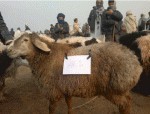
|
Afghan Arabi sheep, native to northern Afghanistan, are renowned for their suitability for both meat and milk production. These fat-rumpled sheep are predominantly polled and are characterized by their distinctive long, pendulous ears.
In terms of appearance, Afghan Arabi sheep typically exhibit a coat coloration ranging from grey to black, often with white markings on their face. Mature ewes of this breed have an average height of app
...
|
|
 Africana Africana
|
|
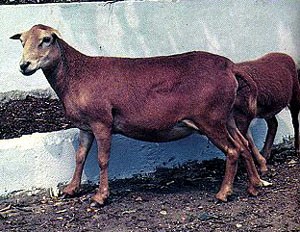
|
Africana sheep, also recognized by various names such as Pelona, Camura, Red African, Rojo Africana, Colombian Wooless, or West African sheep, are a breed primarily found in Colombia and Venezuela. These sheep bear a striking resemblance in terms of size and confirmation to Pelibuey sheep.
Typically, Africana sheep exhibit a range of brown hues, varying from tan to brown, cherry-red, and even dark red. Their distinctive coloring adds t
...
|
|
 Afrino Afrino
|
|
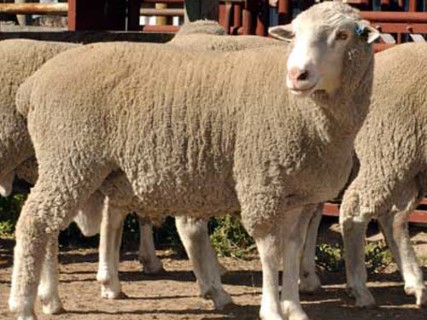
|
Afrino are a fine wool,
dual-purpose sheep.
During the late 1960s, a request
was made to the Department of Agriculture by the wool industry, via the South
African Agricultural Union, to develop a white-wooled breed for extensive sheep
grazing areas. In 1976, it was evident that the crossing of 25 percent Merino,
25 percent Ronderib Afrikaner, and 50 percent South African Mutton Merino best
fulfilled the requirements set for the
...
|
|
 Alai Alai
|
|
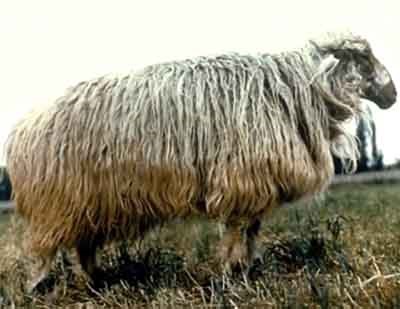
|
Alai sheep, originating from Kyrgyzstan, are a versatile dual-purpose breed prized for their meat and wool. These hardy animals are well-suited to thrive in the challenging conditions of the Alay Valley region, which lies at elevations exceeding 3 km (1.9 mi) above sea level.
These sheep typically display a white coat with occasional spots adorning their legs and heads. Their semi-coarse wool is highly valued, often finding use in the
...
|
|
 Alcarrena Alcarrena
|
|
|
Alcarrena sheep, a breed prized for its medium-wooled meat, originates from the La Alcarria, Guadalajara, and Cuenca regions of New Castille, Spain. Belonging to the Entrefino type, these sheep exhibit a distinctive appearance, with some individuals showcasing light-brown markings on their head and legs, while others may be entirely black in coloration. Notably, both male and female Alcarrena sheep are polled, lacking horns. This breed's adaptati
...
|
|
 Algarve Churro Algarve Churro
|
|
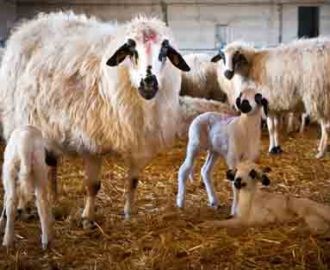
|
Algarve Churro sheep, native to Portugal, are primarily raised for their meat-producing capabilities. These sheep typically display a white coat adorned with distinctive black spots on their feet and heads. Interestingly, around 10% of Algarve Churro sheep feature a striking all-black coloration.
Mature rams of this breed typically reach an average height of 95 cm (37 inches) at the withers and weigh approximately 75 kg (170 pounds). I
...
|
|
 Algerian Arab Algerian Arab
|
|
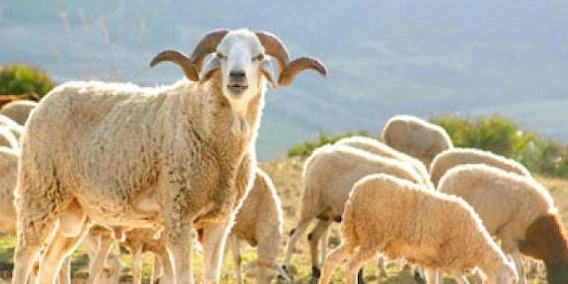
|
Algerian Arab sheep, also recognized as Ouled Jellal or Western Thin-tailed sheep, are a prevalent breed spread across Algeria, particularly thriving in arid climates. Thought to have evolved from the Tadmit sheep native to Algeria, they are well-suited to endure harsh environmental conditions.
Primarily bred for meat, Algerian Arab sheep also provide carpet-grade wool, though meat production is their primary purpose. They boast a whit
...
|
|
 Alpagota Alpagota
|
|

|
Alpagota, also known as Pagota, sheep hail from various regions of Italy, including Lamon, Vicentina, and Istriana in the provinces of Belluno and Venezia. These sheep are ideally adapted to thrive in the rugged terrain of the local hills and mountains.
|
|
 Alpines Steinschaf Alpines Steinschaf
|
|
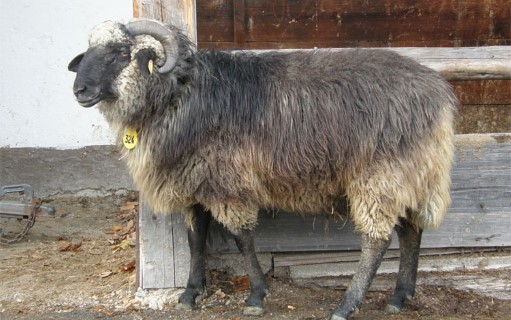
|
Alpines Steinschaf are mountain sheep
from the Eastern Alps of Austria and southern Germany. They are used for wool
and meat… and for keeping the grass down.
Alpines Steinschaf sheep are fine-boned
and small to medium sized. Rams weigh 55 to 80 kg (121 to 176 lb), and ewes 40
to 60 kg (88 to 132 lb).
They are found in all coat colors
and sometimes their face and ears are marked with black. Their face and lower
legs ar
...
|
|
 Altamurana Altamurana
|
|

|
Altamurana sheep, native to the sun-drenched landscapes of the Bari and Foggia Provinces in the Apulia Region of southern Italy, represent a resilient and versatile breed of medium-sized milk sheep.
Distinguished by their pristine white coats occasionally adorned with dark spots on their faces, Altamurana sheep exhibit a remarkable ability to thrive in arid soils, reflecting their adaptation to the challenging environmental conditions
...
|
|
 Altay Altay
|
|
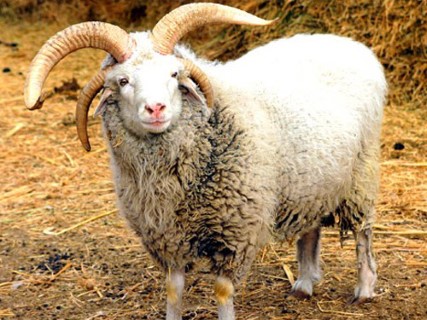
|
Altay sheep, native to the dry, cold mountain basins of China, are recognized for their unique characteristics and suitability for diverse purposes.
Primarily known for their fat-rumped structure, Altay sheep are commonly raised for their wool, which is often utilized for carpet production. Each shearing yields an average of 2.5 to 3.5 pounds (1.3 - 1.5 kg) of wool, prized for its quality and durability. Additionally, Altay sheep are v
...
|
|
 American Blackbelly American Blackbelly
|
|

|
American Blackbelly sheep are a
composite breed resulting from the crossing of Barbados Blackbelly with Mouflon
and Rambouillet breeds. As the name implies, the underbelly of the American
Blackbelly is black, as is the inside of the legs, the back part of the thighs,
and the hair inside the ears. Two black facial barbs extend down the muzzle
medial to the eye, giving the breed an exotic appearance.
Through selective breeding, the
Ame
...
|
|
 Ancon Ancon
|
|
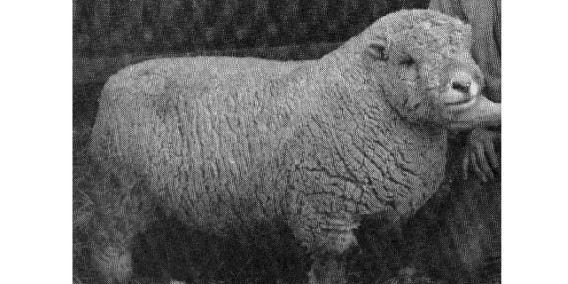
|
Ancon sheep have long bodies with short legs. Their
fore-legs are crooked. This type of sheep was bred from a single Massachusetts,
USA, lamb. The Ancon sheep are quite desirable because they cannot jump over
fences. The Ancon name has been applied to other strains of sheep. Scientists
used the Ancon for genetic research and after it was no longer needed for study
it was allowed to become extinct. Excavations of the Ancon have been done in
...
|
|
 Apennine Apennine
|
|

|
Apennine sheep
(also known as Appenninica, Bariscianese, Chietina Varzese, or Perugina del
piano) are white sheep that were found in the 1970s in central Italy, mainly
in Toscana, Emilia, Umbria, arche, Abruzzi regions of Italy. They were
developed by crossbreeding the local breed with other Italian or exotic breeds
such as: Bergamasca and Ile-de-France. There are an estimated 250,000 heads,
spread out over central and southern Italy.
|
|
 Arabi Arabi
|
|
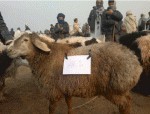
|
Arabi, also known as Afghan Arabi, Sheep are fat-rumped
sheep from Northern Afghanistan. They typically have long pendulous ears; they
also generally have black or white faces. The Arabi rams have horns and the
ewes are polled (hornless). They are raised for meat and wool production.
Most likely Arabi sheep are descended from very ancient
importations from Arabia across the narrow Bal-el-Mandeb Straits at the mouth
of the Red Sea
...
|
|
 Aragonesa Aragonesa
|
|
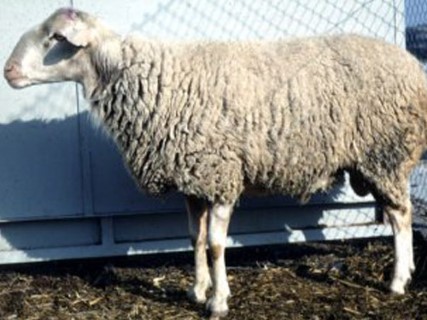
|
The Aragonesa sheep, a breed renowned for its dual-purpose utility, strikes a harmonious balance between meat production and medium wool quality. Nestled within the rustic landscapes of Spain, they emerge as a prominent figure in the nation's agricultural tapestry, holding the distinguished title of the second most significant breed following the esteemed Merino lineage.
Rooted in a rich heritage of Spanish sheep husbandry, the Aragone
...
|
|
 Arapawa Arapawa
|
|

|
Historical accounts trace the presence of sheep on Arapawa Island in the Marlborough Sounds of New Zealand back at least 130 years. It is believed that the Arapawa feral sheep population originated from escapees of Merino sheep flocks. Despite their initial ungainly appearance and ragged fleece, Arapawa sheep exhibit unique characteristics that set them apart.
Arapawa sheep are relatively small in size, characterized by a lean and ligh
...
|
|
 Argentine Merino Argentine Merino
|
|
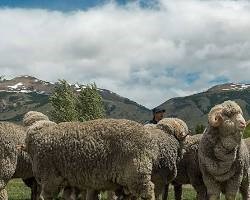
|
Argentine Merino sheep, originating from Argentina, are renowned as dual-purpose animals, valued for both their fine wool and meat production capabilities. This breed was meticulously developed through strategic crossbreeding programs that involved several breeds to attain desirable traits.
The foundation of the Argentine Merino breed began with Criollo sheep, the indigenous sheep of South America. These Criollo sheep were crossed with
...
|
|
 Arkhar-Merino Arkhar-Merino
|
|
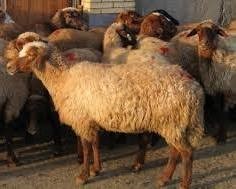
|
Arkhar-Merino sheep were
developed at the Kurmektinski research station between 1934 to 1949 in
Kazakhstan. They were produced by crossbreeding wild Arkhar rams and Precoce
merino ewes.
In 1994 Arkhar-Merino sheep were
transferred to Arasbaran research station which is attached to the Research
Center for Natural Resources and Domestic Animals of East Azerbaijan.
Arkhar-Merino sheep
have a firm and expanded skeleton
...
|
|
 Arles Merino Arles Merino
|
|
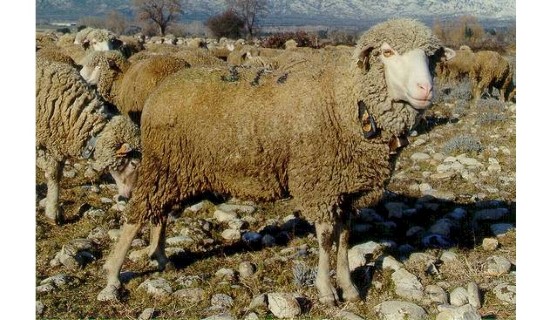
|
Arles Merino is one of worlds 20 merino sheep breeds. They
were developed in the South of France, by using local merino, Spanish merino
(Est a Laine Merinos) and Australian Booroola sheep. The sheep were first
selected by the greatest amount of wool and fine wool. However, currently the
primary breeding goal is milk production of ewes and the rapid growth of lambs.
In addition, those specimens are preferred for breeding who make the breed le
...
|
|
 Armenian Semicoarsewool Armenian Semicoarsewool
|
|
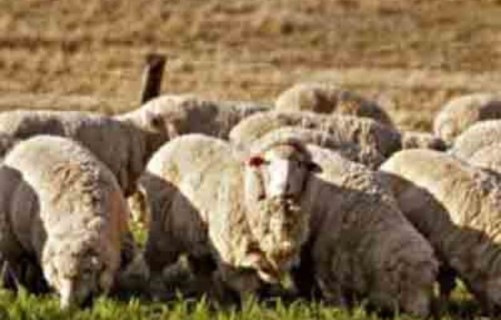
|
Armenian Semicoarsewool sheep, primarily found in Armenia, are a versatile dual-purpose breed renowned for their medium-wool fleece and fat tail. Developed through selective breeding, they represent a blend of Rambouillet and Lincoln sheep with Balbas sheep, resulting in a breed prized for both milk and meat production.
These sheep are typically medium to large in size, boasting a predominantly white coat with a matching white face. Bo
...
|
|
 Askanian Askanian
|
|
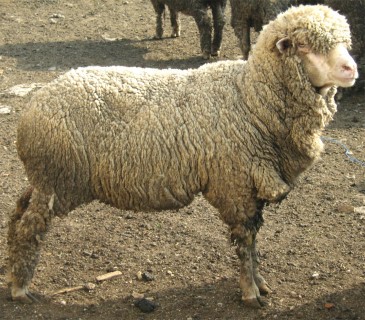
|
Askanian, also known as Askaniysky or Askanian Fine Fleece,
sheep are from Ukraine. They were developed in the early 1900s at Askania Nova
by crossing American Rambouillet with Merino sheep. There were over 1.6 million
Askanian sheep in 1980. Today the breed is raised mainly for it’s fine quality
wool.
They are medium to large sized sheep. They are mainly white
and are unicolored with a white face. Their face is generally free of
...
|
|
 Assaf Assaf
|
|
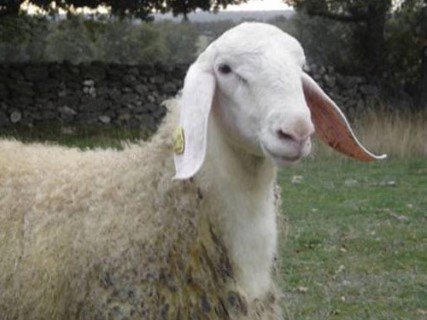
|
Assaf sheep are the
result of crossbreeding between Awassi and East Friesian Milk sheep. In 1955,
researchers of the Israeli Agricultural Research Organization (A.R.O) started
this project aiming to improve the fecundity of the Awassi sheep. A combination
of 3/8 East Friesian and 5/8 Awassi blood emerged as the best cross.
Most dairy sheep
breeders in Israel have adopted the Assaf, which is considered not only a top
quality dairy
...
|
|
 Aussiedowns Aussiedowns
|
|
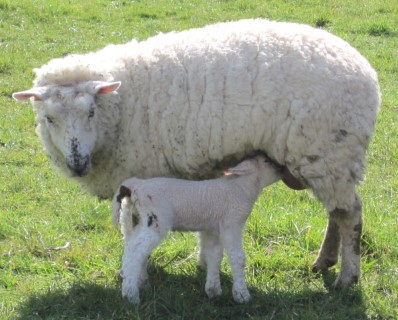
|
The Aussiedown breed, hailing from the pastoral landscapes of Australia, stands as a testament to the ingenuity of sheep breeding in the modern era. Emerging onto the agricultural scene in the early 1990s, these robust and sizable sheep have since carved out a niche for themselves, primarily thriving in the verdant pastures of New South Wales and Victoria.
Born from a strategic crossbreeding program, Aussiedowns are the successful outc
...
|
|
 Australian Merino Australian Merino
|
|
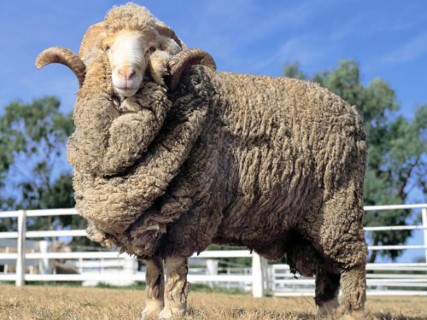
|
Although Australian Merino sheep derive their name and basic
appearance from the Spanish merino breed, they are a distinct breed in their
own right. They have been developed and adapted in Australia to the specific
conditions of this country.
More than 80 percent of all Australian sheep are pure
Merino, with most of the remainder at least part Merino blood. Merino is grown
primarily for its heavy fleeces of fine wool. Merino
...
|
|
 Australian White Australian White
|
|
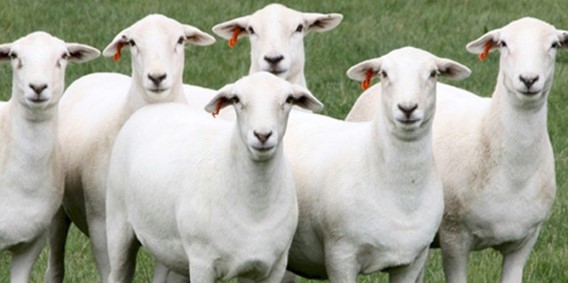
|
Australian Whites are Australian meat sheep which was
developed for Australian conditions. Australian White sheep are a stabilized
composite haired meat breed comprising White Dorper, Van Rooy, Poll Dorset and
Texel genetics. The development aim was to produce a unique Australian white,
shedding sheep breed to quickly produce large framed, heavy lamb carcases.
Additionally, walking or mobility ability, good fertility and mothering
instincts
...
|
|
 Avranchin Avranchin
|
|
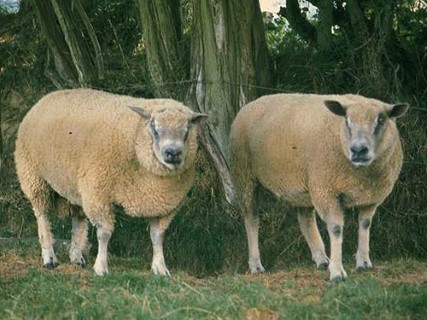
|
Avranchin are a grassland breed of sheep. They are hardy and
well-adapted to a ocean climate, usually living outdoors in small flocks. They
are one of the most prolific French breeds. They have a large or medium-sized
frame. They produce lambs of good butchering quality, with very fine textured
meat.
The selection of the Avranchin sheep breed tends towards the
maintenance of high prolificacy (the optimum sought is the ewe whi
...
|
|
 Awassi Awassi
|
|
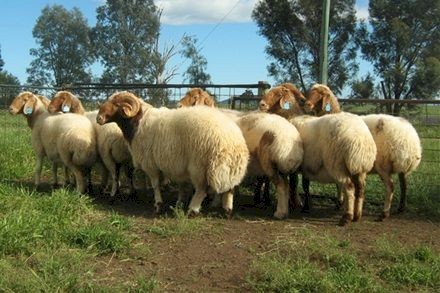
|
Awassi evolved as a nomadic sheep breed through centuries of
natural and selective breeding to become the highest milk producing breed in
the Middle East. They are similar to the Near Eastern fat-tailed type. They are
used for milk production and carpet wool.
The average Awassi ewe has single lactations over 300 liters
(650 pounds) per 210-day lactation, and it is not uncommon for outstanding
females to have 210 day lactations above 7
...
|
|
 Babydoll Southdown Babydoll Southdown
|
|

|
The Babydoll Southdown sheep, reminiscent of the early Southdown type, holds a significant place in agricultural history, tracing its lineage back to the 1800s and early 1900s when it was imported into the United States and observed in England. Standing at a modest height of 18" to 24" at the shoulder, these sheep embody the original characteristics and traits of the Southdown breed.
Originating from the picturesque South "Downs" of Su
...
|
|
 Bagnolese Bagnolese
|
|

|
Bagnolese Sheep
are an autochthonous breed from Campania, Italy that got its name from the
village of Bagnoli Irpino in the province of Avellino. They probably derives
from the crossbreeding of the Barbaresca breed and the local breeds of the
Apennines. Over time they spread from Irpinia to the entire region up to the
provinces of Caserta and Salerno.
They are
medium-large white sheep with black spots. There are excellent dairy p
...
|
|
 Balkhi Balkhi
|
|
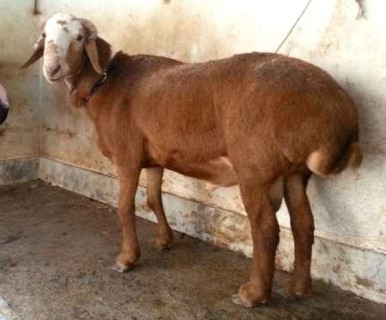
|
Balkhi are medium to large sized sheep
originated from Afghanistan and North-western Pakistan. They are a fat-tailed
mutton type sheep. They areraised
mainly for meat production, but they are also good for producing wool.
Balkhi sheep are hardy and are well adapted
to their native climates. They have a low fiber density, and they approximately
yield 2 kg of coarse wool with an average 43.5 micrometer diameter. The ewes
are pretty go
...
|
|
 Baluchi Baluchi
|
|
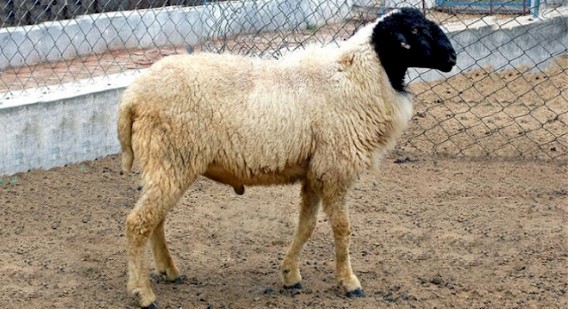
|
Baluchi are small sheep that originated in southern
Afghanistan, eastern Iran, and southwest Pakistan. They are a fat-tailed sheep
breed and are raised mainly for wool production. They are also known Araghi,
Baluchi Dumda, Farahani, Khorasani, Khurasani, Mengali, Neini, Naeini,
Shinwari, Taraki and Yazdi sheep.
They are raised mainly for wool production. Their wool is
coarse with modulation. The average annual fleece weight is betwee
...
|
|
 Balwen Welsh Mountain Balwen Welsh Mountain
|
|

|
The Balwen Welsh Mountain sheep, one of the original Welsh breeds, stands out as a versatile and visually striking rare breed. Known for its adaptability across various seasons, it boasts a base color of black, dark brown, or dark grey, accentuated by a distinctive white stripe extending from the pole of the head to the top of the nose. Additionally, it features four white feet and a tail that is half white. On average, mature ewes weigh between
...
|
|
 Barbados Blackbelly Barbados Blackbelly
|
|
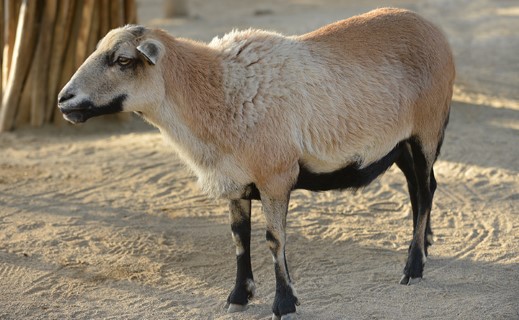
|
Barbados
Blackbelly sheep are indigenous to the Caribbean island of Barbados. They descend
from sheep brought to the islands from West Africa during the slave era.
Blackbellies are antelope like in appearance, brown tan or yellow in color,
with black points and under-parts. Both ewes and rams are polled or have only
small scurs or diminutive horns.
They may have
some visible fuzzy wool undercoat within their hair coat, but it should
...
|
|
 Barbaresca Siciliana Barbaresca Siciliana
|
|

|
The Barbaresca Siciliana, a distinct breed hailing from the sun-kissed landscapes of Sicily in southern Italy, emerged through a deliberate breeding program that combined the genetics of the Tunisian Barbary and the indigenous Pinzirita sheep.
Characterized by their coarse to medium wool, Barbaresca Siciliana sheep are prized for their dual-purpose capabilities, serving as reliable sources of both milk and meat in the agricultural prac
...
|
|
 Bardoka Bardoka
|
|
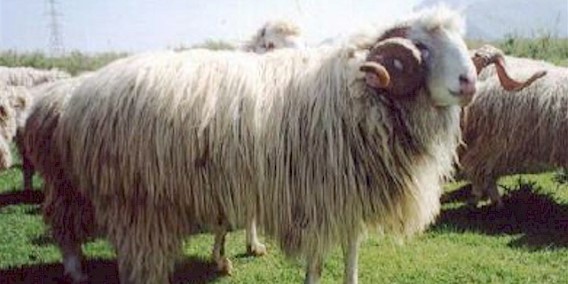
|
Bardoka are a multi-purpose sheep found mainly in the
Metohia region of Kosovo. Its name is derived from the Albanian word Bardoka which means white. They are mainly found in Kosovo and partially in Albania,
Montenegro, and Serbia.
They are medium-sized sheep. They are mainly white with a white
face. Their face is generally free of wool, and their skin color is pink. Both
rams and ewes are generally horned. Their horns are generally l
...
|
|
 Basco-bearnaise Basco-bearnaise
|
|
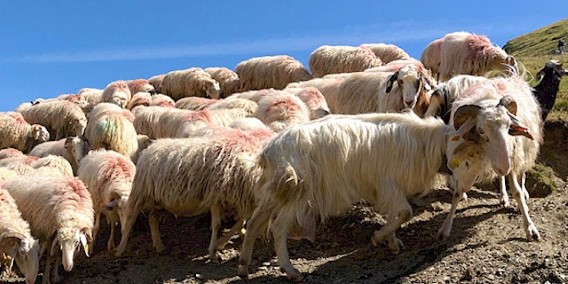
|
Basco-bearnaise sheep originated from the Basque country,
and also known as Vasca Carranzana, France. They were developed during the
1960s from Basque and Béarnaise sheep.
They mainly are raised as a milk breed, and an ewe on
average produces around 120 liters of milk per lactation. And their lactation
period is around of 130 days. Their milk is of good quality containing around
5.39 percent protein.
Basco-bearnaise sheep are
...
|
|
 Bavarian Forest Bavarian Forest
|
|
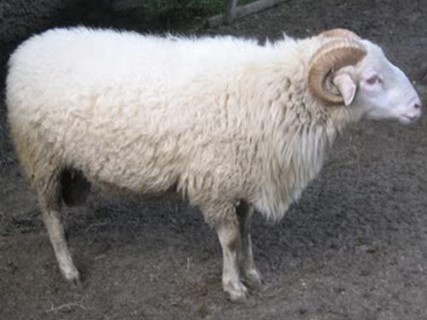
|
Bavarian Forest sheep are an old and once wide-spread breed from
Bavaria. Unfortunately they are decreasing in popularity. They are a small to
medium sized sheep. They are mostly white, though brown and black animals do
occur.
Their fleece contains a mixture of fibers: kemp, hetero
type, and wool fibers. Forest sheep are aseasonal: they usually lamb 3 times in
2 years. Their fertility amounts to about 180 percent. They are a
...
|
|
 Belgium Milk Belgium Milk
|
|
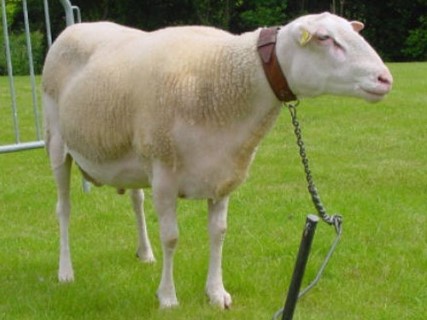
|
Belgium Milk Sheep are strongly influenced by Friesian Milk
Sheep. In all probability, the Belgium Milk Sheep descends from Flemish sheep.
Since the 19th century, Flemish sheep were selected for milk character. After
the Second World War, the other milk sheep breeds were added.
The Belgium Milk Sheep is a finely-built sheep which stands
on high legs. The body is wedge-shaped. The head is covered with fine white
hair. The abdomen is wo
...
|
|
 Bellary Bellary
|
|
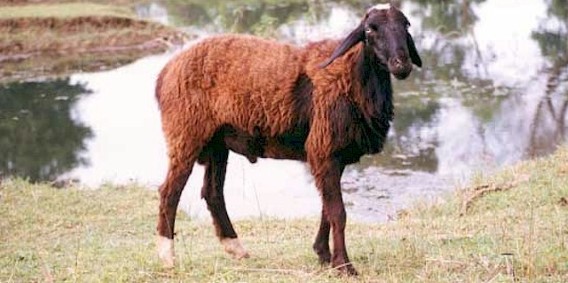
|
Bellary are medium-sized sheep native to the districts of
Bellary and Davanagere and the adjoining areas of Haveri and Chitradurga
districts of Karnataka, India.
They are medium-sized with body colors ranging from white
through various combinations of white and black to black. Most rams have horns,
though ewes are generally polled. Their ears are medium long, flat and
drooping, their tail is short and thin, their fleece is extreme
...
|
|
 Beltex Beltex
|
|
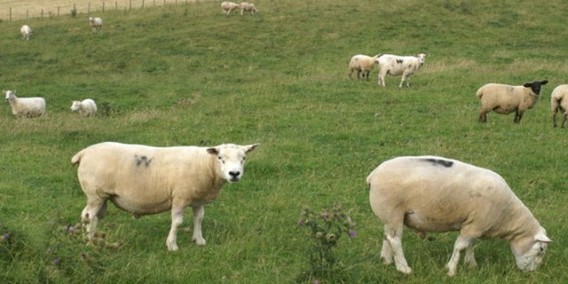
|
The Beltex sheep is characterized by its medium size and elongated body, presenting a distinctive wedge shape from a narrow shoulder to a robust hindquarter that boasts a double-muscled appearance. The head of the Beltex sheep typically displays a predominantly white coloration, although it may feature shadings or patches of black, blue, or brown. With a short and thick fore face, the Beltex sheep exudes a sturdy and robust demeanor.
I
...
|
|
 Bentheimer Landschaf Bentheimer Landschaf
|
|
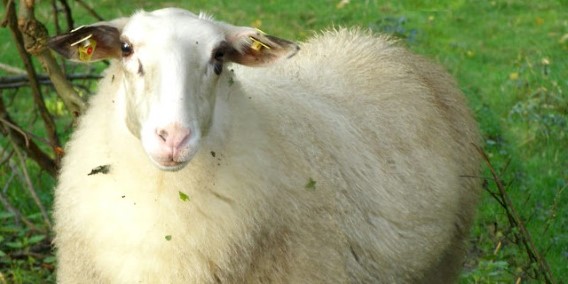
|
Bentheimer Landschaf (A.K.A The Landrace of Bentheim) are
medium-sized German sheep. They were developed by a cross between German and
Dutch heath sheep and marsh sheep. They have been bred in the northern German
Emsland area since 1934, especially in the county of Bentheim.
They are mainly white and have black around their ears,
eyes, and legs. They have a slender body, long head and Roman nose. Their ears
are small and the
...
|
|
 Bergamasca Bergamasca
|
|

|
Bergamasca sheep, also known by various names including Bergamasker, Gigante di Bergamo, and Bergamacia (in Brazil), are primarily valued for their coarse white wool and meat production.
Originating from the Lombardy region of northern Italy, Bergamasca sheep are categorized as a fundamental breed within the Lop-eared Alpine group. They are typically polled, meaning they do not have horns, and serve as the foundational breed for other
...
|
|
 Berrichon du Cher Berrichon du Cher
|
|

|
Berrichon du Cher sheep, originating from the Cher region of France, have been selectively bred for meat production since the 18th century. Through generations of careful breeding, this breed has developed into a well-conformed and highly prized sheep known for its early growth and exceptional meat qualities.
One of the standout features of Berrichon du Cher sheep is their natural ability to lamb out-of-season. Approximately 60% of lam
...
|
|
 Bibrik Bibrik
|
|
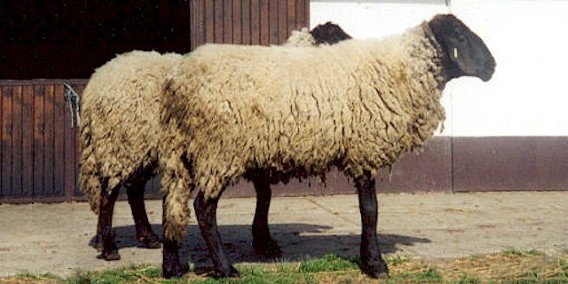
|
Bibrik are medium-sized sheep that originated from Pakistan.
They are a fat-tailed breed and are raised mainly for meat production. They are
found mainly in the parts of Sibi and Loralai districts in Baluchistan Province
of Pakistan.
They are mainly white with a black or brown head. Both rams
and ewes are generally horned, and the rams have pretty large and curved horns.
The rams generally weight around 2.8 kg at births, and the
...
|
|
 Biellese Biellese
|
|
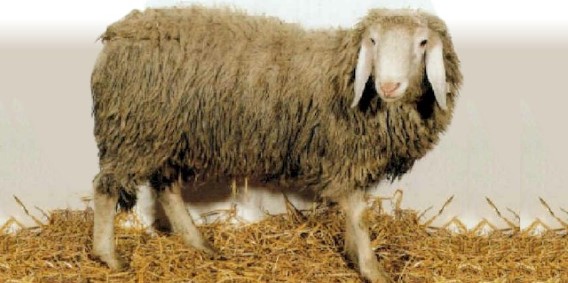
|
Biellese sheep, originating from the picturesque Piedmont region of northern Italy, are a distinct breed valued for their polled carpet wool and meat production capabilities. Belonging to the Lop-eared Alpine group of sheep breeds, Biellese sheep are characterized by their unique appearance and adaptability to the mountainous terrain of their native region. These sheep play a significant role in the local agricultural landscape, contributing to b
...
|
|
 Bizet Bizet
|
|
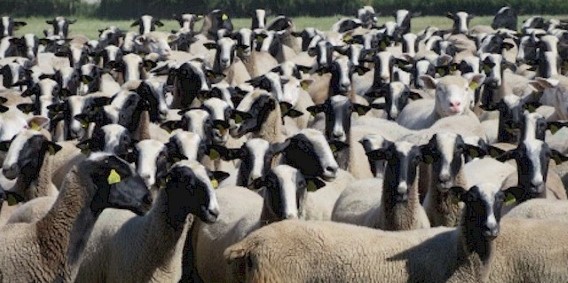
|
The Bizet sheep, originating in France, is a breed with a rich history dating back to the 19th century. Developed between 1830 and 1900, the Bizet sheep breed was established through a careful breeding program involving the crossbreeding of Caussenards sheep with Southdown and Dishley English sheep. This selective breeding process aimed to enhance desirable traits and establish a unique breed with distinct characteristics.
In 1905, eff
...
|
|
 Blackheaded Persian Blackheaded Persian
|
|
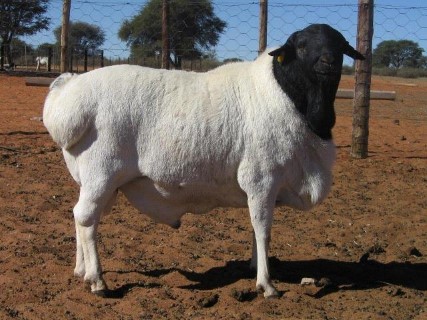
|
Blackheaded Persian sheep originated in the arid regions of
east Africa in what is now Somalia. They are a fat-rumped breed and both sexes are polled.
Blackheaded Persians have a white body and black head and neck with the two colors
sharply distinguished.
They found their way to the tropics of the Caribbean region
via South Africa many years ago. The Caribbean population has adapted well to
the humid tropics. Blackheaded Persian
...
|
|
 Bleu du Maine Bleu du Maine
|
|
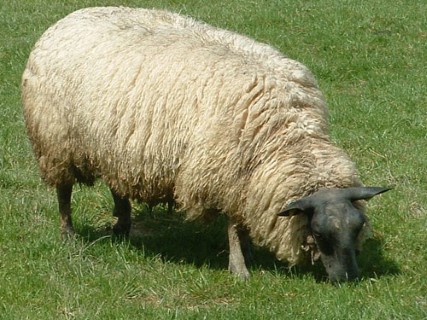
|
Bleu du Maine are a large grassland sheep with slate blue/grey
coloring heads. They originated in Western France in the region
of Mayenne. They were developed from crossing Leicester Longwool and
Wensleydale sheep. The breed has no wool on its head or legs.
They are similar to Texel sheep but they have a higher
litter size and age of sexual maturity. Their average daily gain, carcass
leanness, milk yield, and lambing interval are
...
|
|
 Blue Texel Blue Texel
|
|

|
Blue Texel sheep are a color variant of the normally white
Texel sheep. Blue Texel sheep come from white Texels who carry the color factor
"blue" with them. This factor is a recessive factor. From a mating of
two white Texels who both carry the factor for the blue color, there is a 25
percent chance blue lambs will be born while a mating between a Blue Texel and
another Blue Texel always gives blue lambs. Texel sheep evolved as a result of
...
|
|
 Bluefaced Leicester Bluefaced Leicester
|
|

|
The Bluefaced Leicester is the single most significant sheep
breed in the UK today, with nearly 50% of the UKs commercial breeding flock
being sired by the Bluefaced Leicester. Of the remaining 50% around
half are being mated with Bluefaced Leicester rams to produce Mule ewes.
The great strength of the Blueface, is that no matter what breed of sheep its
crossed with, its progeny the Mule proves a better commercial ewe than its
mother. Th
...
|
|
 Bond Bond
|
|
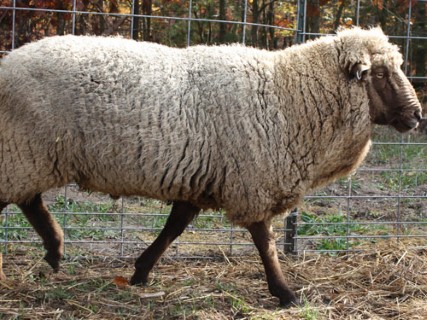
|
Bond sheep, which originated in Australia in 1909 through the strategic crossbreeding of Peppin Merinos and imported Lincoln rams, are renowned as a dual-purpose breed. These tall, long-bodied sheep are characterized by their robust constitution, heavy bone structure, and open faces. They are prized for their ability to thrive in various climatic conditions, particularly in the southeast region of Australia.
Bond sheep are valued for t
...
|
|
 Booroola Merino Booroola Merino
|
|
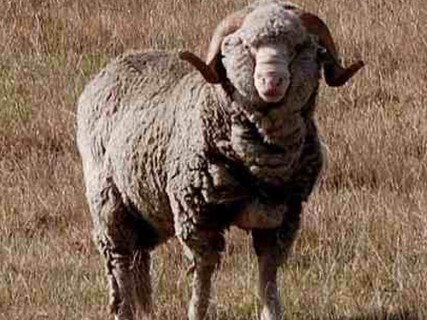
|
Booroola Merino sheep, originating from the Southern Tablelands of New South Wales, Australia, stand out for their exceptional fertility and unique breeding characteristics. Setting them apart from conventional Merino breeds, Booroola Merinos exhibit remarkable reproductive traits that have garnered global recognition.
Foremost among their distinctive attributes is their unparalleled fertility, ranking among the most fecund breeds worl
...
|
|
 Border Cheviot Border Cheviot
|
|
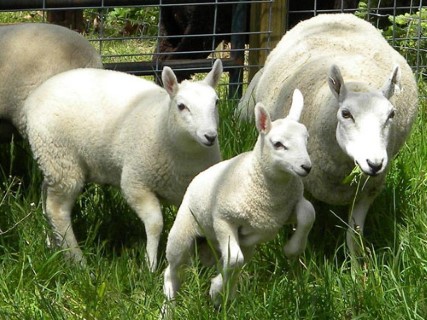
|
Border Cheviot sheep originated as a mountain breed, native
to the Cheviot Hills between Scotland and England, where the climate is harsh
and the conditions are rugged. Cheviots are extremely hardy and can withstand harsh
winters and graze well over hilly pastures. They were bred to look after
themselves. Recognized as early as 1372, the breed is reported to have
developed from sheep that swam ashore from shipwrecked Spanish ships that fled
...
|
|
 Border Leicester Border Leicester
|
|

|
Border Leicester sheep are one of three distinct
breeds of Leicester sheep.
Border Leicester sheep were developed in 1767 by George and
Matthew Culley of Fenton, Northumberland, England. They were friends of Robert
Bakewell and had access to his improved Leicesters. Some believe that the
Culley brothers developed the Border Leicester by crossing Bakewell's improved
Leicester rams with Teeswater ewes. Others argue that Cheviot blood wa
...
|
|
 Borderdale Borderdale
|
|
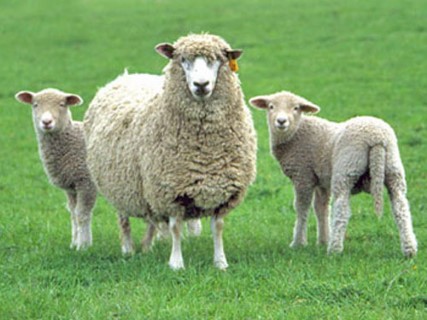
|
Borderdale sheep were
developed in New Zealand. They are the result of breeding the Border Leicester
and Corriedale breeds and interbreeding each generation until the F5 stage.
Borderdales are a medium-large, hardy, long-woolled breed, with a comparatively
low susceptibility to foot rot. They have a good growth rate.
Ewes are often used
for crossbreeding with terminal sires from the meat breeds. Borderdales are
found mainly on th
...
|
|
 Boreray Boreray
|
|
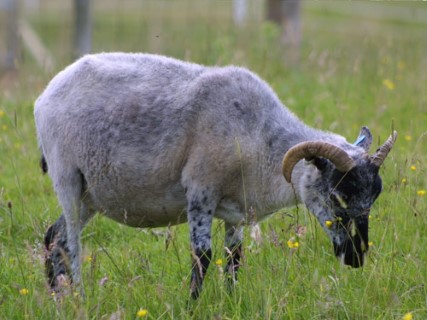
|
Boreray sheep originated on the island of Boreray in the St
Kilda archipelago off the west coast of Scotland. And the breed was named from
this island. It is also known by some other names such as Hebridean Blackface
and Boreray Blackface sheep.
They were developed during the late 19th century from
Scottish Blackface and a Hebridean type of Old Scottish Shortwool sheep. They
have been largely feral since 1930.
Their fleece
...
|
|
 Bovska Bovska
|
|

|
Bovska Sheep got their name from the small town Bovec that
lies in upper Soflorina valley which is in the Northwest part of Slovenia near
the Italian border. In Trenta valley this breed is also called trentarka or
pure trentarka if it has the short ears sometimes seen with this breed.
The Bovska sheep breed originated in the white sheep which
were once distributed throughout the Alps. Bleiweis (1871) mentioned the
Trbiska sheep br
...
|
|
 Bragna Bragna
|
|

|
The Bragna sheep, adorned in pristine white coats and boasting rosy-hued skin, epitomize rustic charm and versatility in the pastoral landscapes of the province of Verona, nestled within the Veneto region of Italy. These autochthonous sheep, shrouded in a veil of mystery regarding their precise origins, have carved out a niche for themselves as indispensable contributors to the agricultural heritage of the region, particularly in the picturesque
...
|
|
 Braunes Bergschaf Braunes Bergschaf
|
|
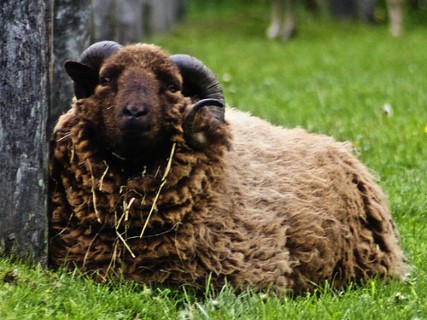
|
Braunes Bergschaf, or Brown
Mountain, sheep are from the alpine regions of Bavaria (Germany), Tyrol
(Austria), Southern Tyrol (Italy), and the Swiss Canton of Engadine. In recent
years, Braunes Bergschaf Sheep have gained popularity beyond their original
borders. Brown Mountain Sheep are descended from the Tyrolean Steinschaf (Stone
Sheep), which can be of all colors, one color per sheep, and is rarely white.
Braunes Bergschaf are
m
...
|
|
 Brecknock Hill Cheviot Brecknock Hill Cheviot
|
|
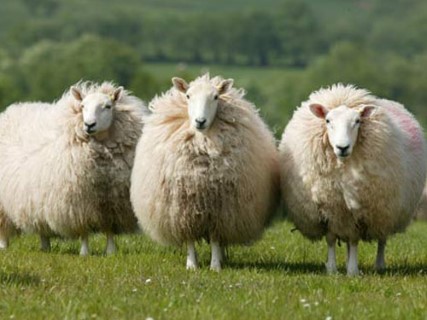
|
The Brecknock Hill Cheviot sheep trace their origins back to the Scottish Cheviot sheep, which were introduced to Wales during the 1850s. Renowned for their remarkable longevity, these sheep have become a distinct breed known for their hardiness and adaptability to rugged terrains.
Characterized by their white faces and legs, Brecknock Hill Cheviot sheep exhibit erect ears without a ruff of wool behind them. They possess a distinctive
...
|
|
 Brentagana Scelta Brentagana Scelta
|
|

|
Brentagana Scelta sheep are a large white breed originating from Italy and belonging to the Alpine group. They are primarily raised for both wool and meat production. One of their notable characteristics is their adaptation to local marginal conditions, indicating their ability to thrive in challenging environments. This adaptability is likely a result of selective breeding over generations to suit the specific geographic and climatic conditions
...
|
|
 Brianzola Brianzola
|
|

|
Brianzola sheep are a notable breed originating from the Brianza region of Lombardy, northern Italy. These sheep are renowned for their unique characteristics, which make them well-suited to the local environment and agricultural practices.
Brianzola sheep are medium-sized and have a distinct appearance characterized by their white fleece and compact build. They are known for their hardiness and adaptability to the hilly and mountainou
...
|
|
 Brigasca Brigasca
|
|

|
Brigasca sheep
are a local breed whose name is linked to the border territory between Liguria,
Piedmont and Provence. They are descended from the Frabosana breed and likely
crossbred with Langhe sheep. The Brigasca is a rustic animal, perfectly adapted
to the traditional rearing system of a minimum of six months in alpine
pastures.
Brigasca sheep
are used for milk and meat. Their milk is used to produce three different kinds
of
...
|
|
 Brillenschaf Brillenschaf
|
|
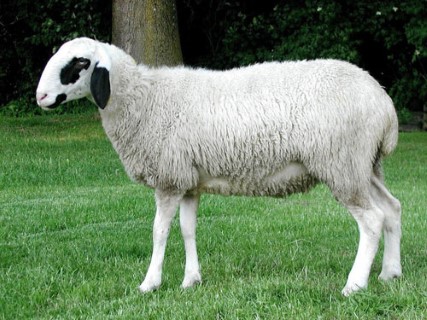
|
Brillenschaf sheep
are from Carinthia, Austria. They are a member of the Alpine Mountain Sheep
Breeds. They are named for their eyeglass marks around their eyes, under the
eyes, and on their ears. They are a cross between the Landschaf, Bergamasca,
and Paduaner Schaf sheep.
They are hardy
and frugal; they can cope with high precipitation and are experts in climbing,
therefore they are used for grazing high alpine areas which
...
|
|
 British Milk British Milk
|
|
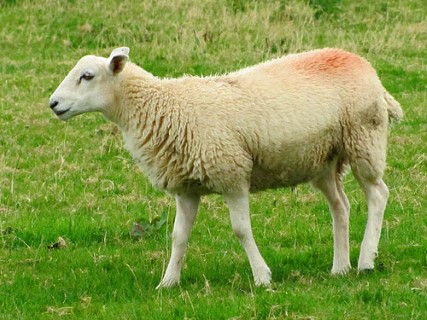
|
British Milk sheep are medium to large polled sheep with a
predominantly white face and legs. Their head is usually free from wool, the
muzzle broad and the ears long. The ewe is naturally prolific and is noted for
its quiet temperament which is important in the management of high performance
sheep. The conformation of the ewe, particularly the roomy pelvic area, ensures
that lambing is easy. The rams have a long body and good hindquarters.
...
|
|
 Brown Headed Meat Brown Headed Meat
|
|
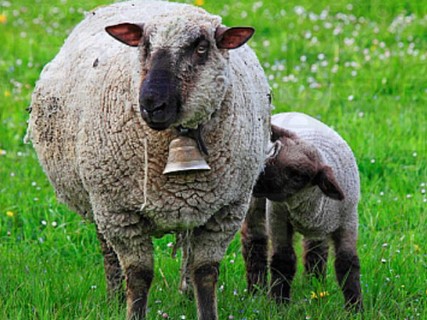
|
Originating as one of the four predominant sheep breeds in Switzerland, the Brown Headed Meat sheep, also known as Braunkopfiges Fleischschaf, occupies a prominent place in the country's rich agricultural heritage. Renowned for their substantial build, they claim the title of the heaviest breed among Swiss sheep varieties.
The lineage of the Brown Headed Meat sheep traces back to a deliberate breeding program that combined the genetic
...
|
|
 Bundner Oberland Bundner Oberland
|
|
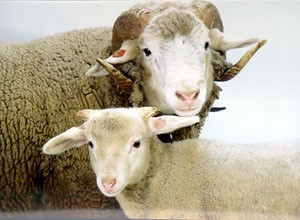
|
Bundner Oberland (also known as
Bunder Oberlanderschaf, Grisons, or Graubunden) sheep are from Switzerland.
They are found in white, brown,
or silver-grey. Their head is slender and bare. Rams have substantial horns
while ewes have small horns or are polled (hornless). Both sexes display rather
primitive behavior. Multiple births are common. When mature, rams weigh on
average 72 kg (159 lb) and ewes 50 kg (110 lb). After reaching
...
|
|
 Calabrese Calabrese
|
|
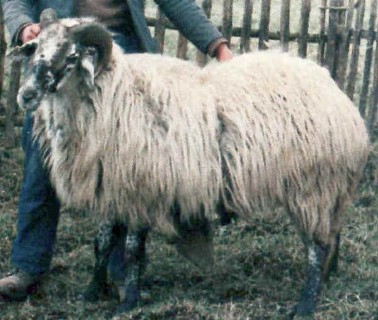
|
Calabrese sheep, alternatively referred to as Sciara or Moscia Calabrese, are indigenous to the provinces of Cosenza and Catanzaro in the Calabria region of Italy. Thriving in the rugged terrain of the high hills characterized by poor and steep grazing land, these sheep play a vital role in the local agricultural landscape.
Belonging to the group of sheep breeds with soft hanging woolly coats, Calabrese sheep exhibit a distinctive phys
...
|
|
 California Red California Red
|
|
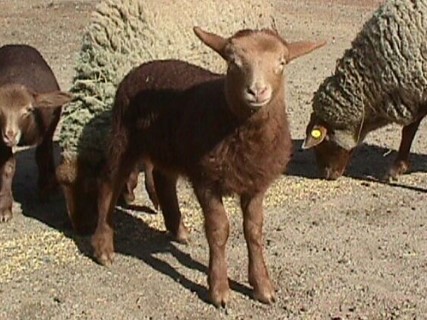
|
California Red are medium-wool meat and wool sheep developed
in 1970. They are a cross between Barbados and Tunis sheep.
Mature rams weigh 225 to 250 pounds and ewes range from 130
to 150 pounds. Both sexes are naturally hornless. Lambs are born a solid rust
or cinnamon red color, a color that is retained as they mature.
At maturity, their fleeces turn a beige or oatmeal color.
Their legs and faces are free of
...
|
|
 California Variegated Mutant California Variegated Mutant
|
|
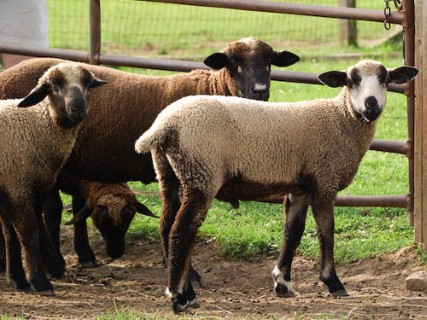
|
California Variegated Mutant Sheep, or simply C.V.M. Sheep,
are the result of many crossbreeding started in 1915.
In 1915 A.T. Spencer developed the Romeldale breed. He
purchased several New Zealand Romney Rams in 1915 that were brought to the
Pan-American exposition in San Francisco. He felt the Romney breed would
increase the staple, length, and carcass quality of his Rambouillets. Through
many years of selection, the Romeldale bre
...
|
|
 Cambridge Cambridge
|
|

|
The Cambridge sheep, renowned for its exceptional prolificacy, stands as a beacon of crossbreeding excellence in the realm of ovine husbandry. With its distinctive dark-faced visage adorning a medium-sized frame, the Cambridge epitomizes versatility and productivity in the pastoral landscape.
Mature rams and ewes of the Cambridge breed boast formidable weights of 100 kg and 67 kg, respectively, embodying robustness and sturdiness chara
...
|
|
 Cameroon Cameroon
|
|
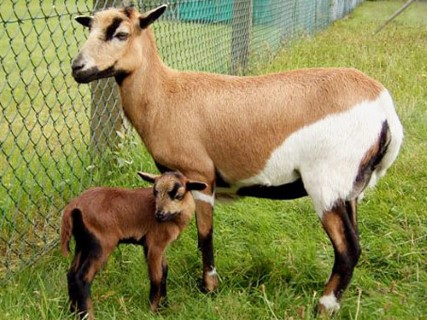
|
Cameroon sheep, originating from West Africa, are renowned for their unique hair coat, which eliminates the need for shearing. Unlike traditional wool sheep, Cameroon sheep possess a hair coat that undergoes seasonal changes, particularly in autumn when it develops an additional undercoat. This undercoat is naturally shed after the winter months, showcasing the breed's self-sufficient grooming mechanism.
Renowned for their high reprodu
...
|
|
 Campbell Island Campbell Island
|
|

|
The first sheep were landed on sub Antarctic Campbell Island
(over 600 kilometers south of the New Zealand mainland) in 1895 after a grazing
lease had been taken up. Two thousand more were introduced in 1901, and a
further thousand in 1902. Both of the first introductions are known to have
been Merinos, but the last was of an unknown breed - at least some must have
been longwools such as Lincolns or Leicesters.
As a result, the Ca
...
|
|
 Canadian Arcott Canadian Arcott
|
|
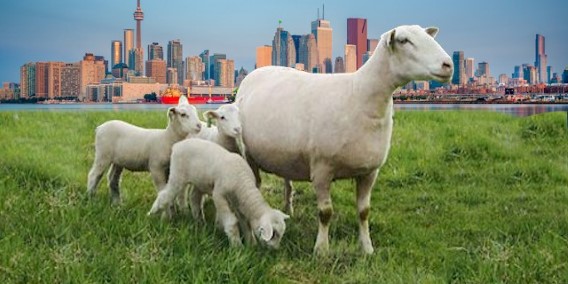
|
Canadian Arcott sheep are
raised primarily for meat. As the name suggests, they were developed in Canada.
And the later half of their name, ARCOTT, is an acronym for the Animal Research
Center in Ottawa. They were developed from crossbreeding Romnelet (6%), North
Country Cheviot (7%), Leicester (14%), Ile de France (28%) and Suffolk (37%)
sheep. The remaining 8 percent was contributed from Shropshire, Lincoln,
Corriedale, East Friesian, Fin
...
|
|
 Castlemilk Morrit Castlemilk Morrit
|
|
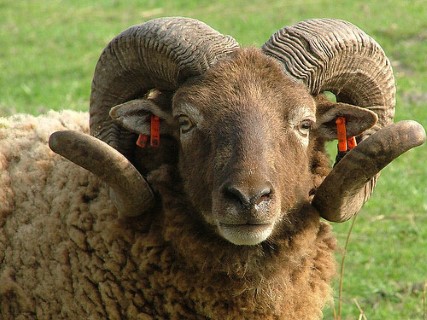
|
Castlemilk Morrit Sheep were developed during the the early
years of the 20th century. The late Sir Jock Buchanan-Jardine began a breeding
program on his Castlemilk Estate in Dumfriesshire. Using Manx Loghtan, moorit
Shetland, and wild Mouflon, he developed a breed to beautify his parkland and
provide fine, kemp-free moorit colored wool. On the death of Sir John
Buchanan-Jardine the flock was dispersed in 1970, and six ewes and a ram were
b
...
|
|
 Charmoise Charmoise
|
|

|
Charmoise sheep are characterized by their polled (hornless) nature, white faces, and white legs. They boast a deep body covered in a dense fleece of excellent quality. Known for their outstanding conformation, Charmoise sheep have short necks, well-muscled loins, and robust gigots (hindquarters). Despite their substantial build, they are light-boned, displaying agility and liveliness from birth.
On average, mature ewes of the Charmois
...
|
|
 Charollais Charollais
|
|

|
Charollais Sheep are a medium to large sized sheep. They are
long and well-muscled with thick, deep gigots. The body is long with a
well-muscled broad loin and wide deep chest. The head is free from wool,
pinkish/grey in color sometimes with spots. The line of the shoulders should
retain a wedge shape which is so important for ease of lambing. The legs are
clean, quite short, colored but never very dark. The front legs should not be
set too
...
|
|
 Chatham Island Feral Chatham Island Feral
|
|
 www.rarebreeds.co.nz)" width = "180" align = "left" hspace="20"/> www.rarebreeds.co.nz)" width = "180" align = "left" hspace="20"/>
|
Near the southwest corner of the main island of the Chatham group in New Zealand, there exists a small flock of feral sheep exhibiting certain Merino characteristics, suggesting that they may predate the islands' transition to longwool breeds.
It is believed that these feral sheep on Chatham Island have been living wild for almost a century, possibly originating from Saxon Merinos that were taken to South East Island (another island in
...
|
|
 Cheviot Cheviot
|
|

|
Cheviot Sheep, characterized by their distinctive white faces, are a breed of Hill sheep originating from the Scottish Borders. Known for their hardiness and adaptability to rugged terrains, Cheviots have several distinctive physical features.
In particular, the ewes of this breed exhibit fine, hard white hair on their faces over the crown, giving them their characteristic appearance. Additionally, their legs are adorned with a similar
...
|
|
 Cheviot Cheviot
|
|
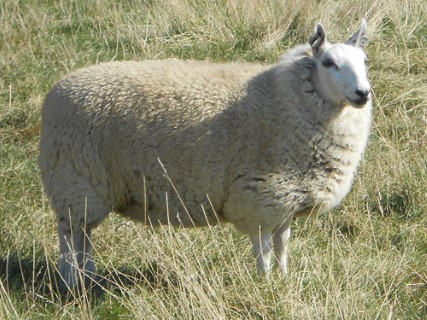
|
Cheviot
sheep originated in the Cheviot Hills between England and Scotland. They were
introduced to the U.S. in 1838. Border Cheviots are small, hardy sheep that
spend their lives on the moors. In the U.S., they have become larger than their
ancestors from the UK, so the Brecknock Hill Miniature Cheviot registry was
formed to preserve the original size. The registry recently dropped
"Brecknock Hill" from its name to differentiate American M
...
|
|
 Chios Chios
|
|
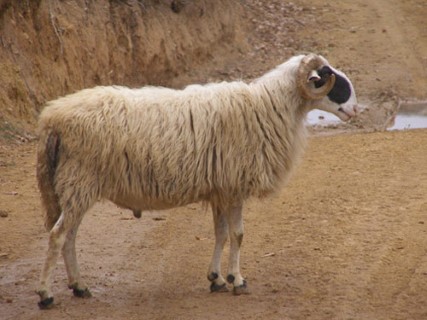
|
Chios are semi-fat-tailed milk Mediterranean sheep. Like
many breeds, the exact origin of the Chios is unknown. Some sources suggest it
is the result of crossbreeding between local sheep of the island of Chios
(Greece) and breeds from Anatolia (Turkey). The Chios is typically white with
black, occasionally brown, spots around the eyes, and on the ears, nose, belly
and legs. The entire head is often black.
Female conformation
...
|
|
 Cholistani Cholistani
|
|
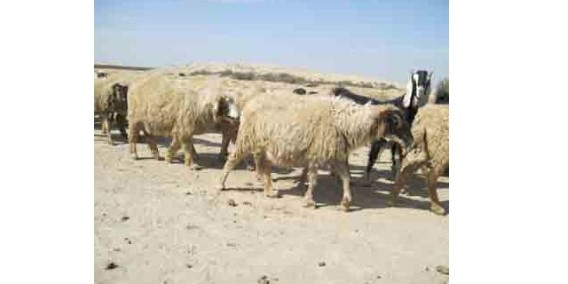
|
Cholistani sheep are from Pakistan. Though they grow wool, they
are raised primarily for meat.
They have a black to brown head and ears with a white body.
They have stubby, small ears and a long tail.
Mature rams weigh 48.5 kg (107 lb) and ewes weigh 34 kg (75
lb). Their average height at the withers of mature rams is 75 cm (30 in) and
ewes is 66 cm (26 in). At birth and on average, rams weigh 3.5 kg (7.7 lb) a
...
|
|
 Churra Churra
|
|
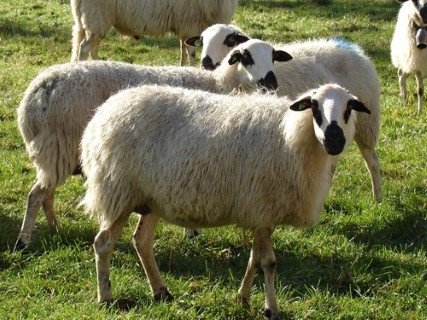
|
Churra sheep, raised in the region of Castile and Leon in northwestern Spain, are primarily known for their role in milk production. This breed is esteemed for its remarkable hardiness, making it well-suited to the continental climate characterized by long, severe winters, brief springs, and hot, dry summers prevalent in the region.
The milk of Churra sheep holds particular significance in Spanish culinary traditions, notably in the pr
...
|
|
 Ciavenasca Ciavenasca
|
|

|
Ciavenasca sheep are a distinctive breed known for their unique characteristics and historical significance. Originating from the Lombardy region of northern Italy, Ciavenasca sheep are an integral part of the local agricultural landscape.
These sheep are medium-sized and have a notable white fleece, which is prized for its quality and versatility. The fleece is typically fine and dense, making it suitable for various textile applicati
...
|
|
 Cikta Cikta
|
|
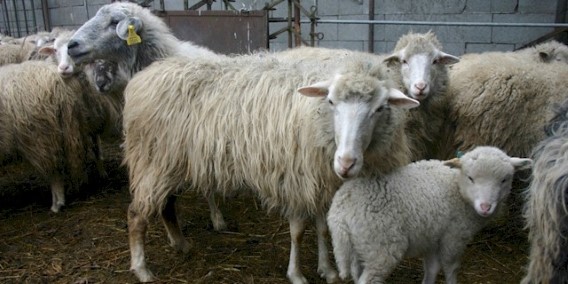
|
Cikta sheep, introduced to Hungary by German settlers during the 18th century, have established themselves as a prominent breed in the region. While they do produce wool, their primary focus is on meat production, aligning them with the preferences of local agricultural practices. Belonging to the Mountain Group of sheep breeds, Cikta sheep exhibit characteristics that make them well-suited for the terrain and climate of Hungary.
These
...
|
|
 Cine Capari Cine Capari
|
|
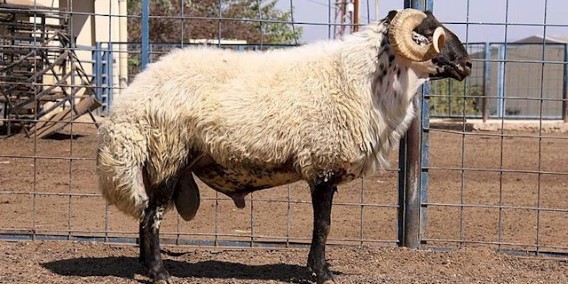
|
The Cine Capari sheep, originating from the Aydin Province in Turkey, are a notable fat-tail breed known for their distinctive characteristics. While they are predominantly white in color, it is not uncommon to find individuals with light brown to dark black spots on their feet and belly, adding to their unique appearance.
At maturity, ewes of the Cine Capari breed typically weigh around 38 kg (84 lb), reflecting their moderate size. H
...
|
|
 Ciuta Ciuta
|
|

|
The Ciuta sheep, once a proud emblem of the Italian mountain landscape, stood as a testament to the resilience and adaptability of livestock in challenging environments. Bred primarily for their succulent meat, these white-coated sheep were revered for their robust constitution and ability to thrive amidst the rugged terrain of the Italian mountains.
However, despite their historical significance and intrinsic value to local agricultur
...
|
|
 Clarence Reserve Clarence Reserve
|
|

|
Clarence Reserve Sheep, shrouded in the mystique of their Marlborough origins, emerge from the shadows as a breed steeped in the rugged heritage of New Zealand's pastoral landscapes. Born from the remnants of a feral flock nestled within the Clarence Reserve, these enigmatic sheep trace their lineage to a bygone era of European settlement, where intrepid Merino ancestors roamed the untamed wilderness.
Bearing the hallmarks of their res
...
|
|
 Clun Forest Clun Forest
|
|

|
Clun Forest Sheep are a very adaptable breed, living equally
happily in the down lands of the South of England or the hills of Wales and
Scotland. They have a low mortality rate and are highly resistant to disease.
They have an alert appearance with a clean open dark-brown face, with a
characteristic covering of wool on the top of the head and ears that are
carried high and forward. The body has a strong muscular neck carried high from
fine
...
|
|
 Coburger Fuchsschaf Coburger Fuchsschaf
|
|
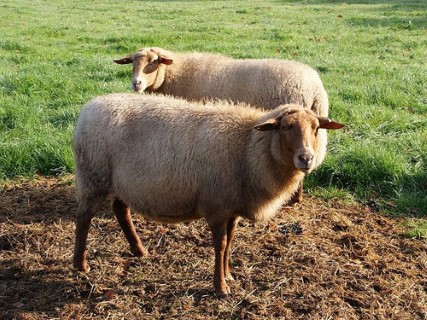
|
Coburger Fuchsschaf are a breed of landrace sheep that were
almost extinct.
In the 19th century Coburger Fuchsschaf populated the
European hilly ranges abundantly. These red fox-colored sheep could be found
under names that indicated their color or living area, such as Golden Fox,
Eisfelder Fox Sheep, Eifeler Sheep, Ardenais Solognotes, or Rousse Tetes. In
the beginning of the 20th century, 60% of the sheep in the German Coburg area
...
|
|
 Columbia Columbia
|
|

|
Columbia sheep were one of the first sheep to originate in
the United States. They are the
result USDA and university research. Development began in 1912 in Laramie,
Wyoming. Lincoln rams were crossed with Rambouillet ewes. In 1918, the
foundation flock was moved to the U.S. Sheep Experiment Station near Dubois,
Idaho, for further refinement.
Though originally bred for range conditions, the Columbias
have found widespread a
...
|
|
 Comeback Comeback
|
|
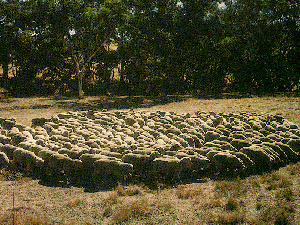
|
Comeback sheep originated in Australia. They were first
developed by crossing a British long-wool cross back to a Merino sheep. But
more recently, the type has been produced by crossing some popular sheep breeds
such as Corriedale and Polwarth with Merino. The main aim of the cross was to
develop a finer, better style of wool. Wool of the Comeback sheep style is also
produced by Cormo, Bond, and Polwarth sheep. And these breeds may prove eas
...
|
|
 Comisana Comisana
|
|

|
The Comisana sheep, revered as milk producers hailing from the picturesque landscapes of southeastern Sicily, embody a rich heritage shaped by centuries of meticulous breeding. Originating from the fusion of Maltese and Sicilian sheep during the late 19th and early 20th centuries, these resilient creatures have become synonymous with dairy farming traditions across Italy.
Adorned in a pristine white fleece that symbolizes purity, Comis
...
|
|
 Coolalee Coolalee
|
|
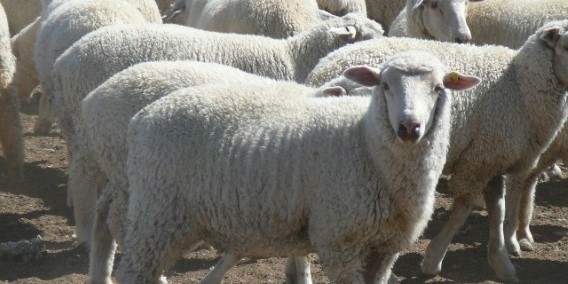
|
Coolalee sheep are Australian short wool, meat sheep breed,
developed from an eight-year breeding program commenced in 1968. The breed
resulted from the crossing of the Wiltshire Horn, Suffolk, Hampshire Down, Poll
Dorset, Lincoln and English Leicester sheep.
The first Coolalee rams became commercially available in
1983. These rams are used as terminal sires for prime lamb production.
Coolalee sheep have shown considerable promi
...
|
|
 Coopworth Coopworth
|
|
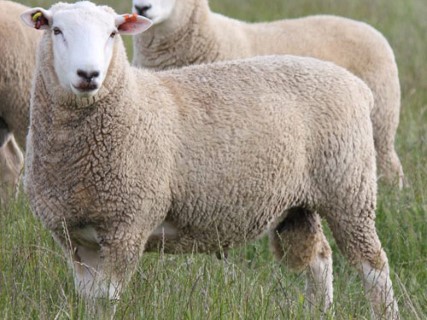
|
Coopworth sheep are medium-sized, dual-purpose animals characterized by their white faces and an alert yet calm temperament. Originating in New Zealand during the 1960s, Coopworth sheep are the result of crosses between Border Leicester and Romney breeds. They were later introduced to the United States in the late 1970s and have since become one of the most prominent breeds in New Zealand.
Known for their high productivity, Coopworth s
...
|
|
 Cormo Cormo
|
|

|
Cormo Sheep were developed in Tasmania by I.K. Downie through a systematic breeding program. Mr. Downie crossed Corriedale Rams with 1200 carefully selected superfine Saxon Merino Ewes to create the Cormo breed.
The breeding program for Cormo sheep emphasizes scientific measurement of commercially desirable characteristics such as clean fleece weight, fiber diameter, growth rate, and fertility. The name "Cormo" is derived from the comb
...
|
|
 Cornella Cornella
|
|

|
In the picturesque landscapes of the Bologna Province in Northern Italy, amidst the rolling hills and verdant plains of Emilia Romagna, roams the Cornella sheep, also affectionately known as Cornella White or Cornella Bianca dell Emilia Romagna. These woolly denizens of the Italian countryside are a common sight, blending seamlessly into their pastoral surroundings.
Draped in pristine white coats, the Cornella sheep are emblematic of p
...
|
|
 Cornigliese Cornigliese
|
|

|
Cornigliese sheep, hailing from the picturesque town of Corniglio in the Emilia Region of Italy, embody a rich tapestry of ancestry and purpose. Descended from Vissana sheep infused with traces of Merino and Bergamasca lineage, these resilient creatures epitomize the pastoral traditions of their storied homeland.
Clad in a pristine white fleece adorned with dark spots on their face and legs, Cornigliese sheep exude a rustic charm that
...
|
|
 Corriedale Corriedale
|
|
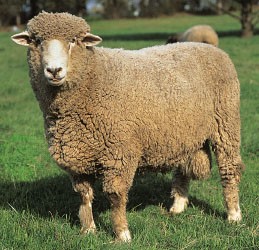
|
Corriedale
sheep were developed in New Zealand and Australia during the late 1800s by
crossing Lincoln or Leicester
rams with Merino females. The breeds is now widely found
worldwide and are the most common breed of sheep in South America and are
widely used throughout Asia, North America, and South Africa. They are,
perhaps, the second most populous breed of sheep in the world, after Merinos.
Corriedale sheep are a dual-purpose shee
...
|
|
 Corteno Corteno
|
|
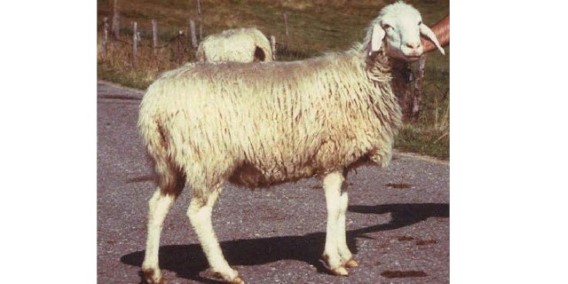
|
Corteno sheep, also known as Pecora di Corteno, emerge as stalwart members of the Alpine lineage, embodying the rugged spirit of their mountainous habitat. These medium-sized sheep, cloaked in pristine white wool, epitomize the enduring essence of Italian pastoral tradition.
Bred primarily for their succulent meat, Corteno sheep exemplify the harmonious interplay between nature and husbandry in the Alpine regions. With a heritage steep
...
|
|
 Cotswold Cotswold
|
|

|
Cotswold Sheep, characterized as a large, polled, and longwool breed, possess distinct features that contribute to their imposing appearance. With a head carried proudly upward and a long back, coupled with strong frames and legs, Cotswold Sheep exude a commanding presence. Notably, their head is adorned with a prominent forelock of wool, and they boast a white face with dark skin on the nose, adding to their unique visual appeal.
One
...
|
|
 Criollo Criollo
|
|
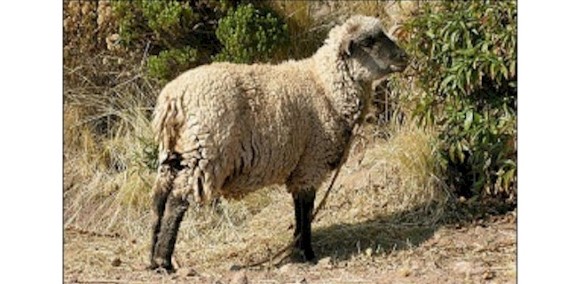
|
Criollo sheep are the highlands of Colombia, Ecuador,
Mexico, Bolivia, Peru, Venezuela and Guatemala over hundreds of years. They are
known by some other names such as Venezuelan, Uruguayan, Tarhumara, Colombian,
Lucero, Creole, Chilludo, and Pamba. Spanish settlers brought the Churra with
them in the mid sixteenth Century. The Churra is believed to be the ancestor of
the modern day Criollo sheep. Today, they are raised mainly for meat
prod
...
|
|
 Daglic Daglic
|
|
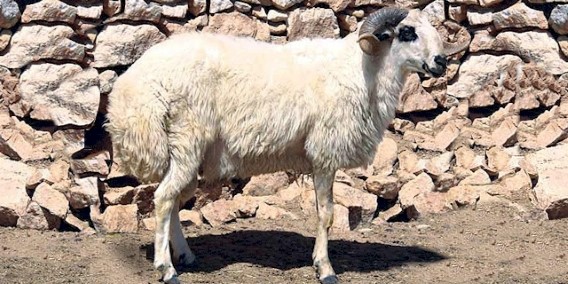
|
Daglic sheep are found
primarily in western Anatolia in Turkey. They are a carpet wool breed used for
both meat and dairy production. Typically they have black spots on their head
and legs, the rams are usually horned and the ewes are polled. They are thought
by some to be the origin of both the Chios and Kamakuyruk breeds.
Daglic sheep have been adapted
to live in a steppe climate. They are unicolored with a white body and black
...
|
|
 Dala Fur Dala Fur
|
|
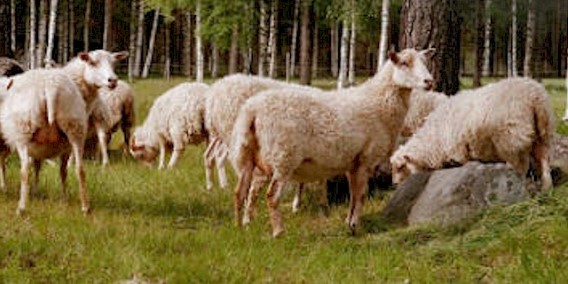
|
Dala Fur, known as Dala
palsfar, sheep originated in Sweden and are one of several sheep
breeds that are remnants of the old Swedish landrace breed. They are a
Northern European short-tailed sheep breed.
Dala Fur sheep are short but
very hardy. They are used for both meat and wool production.
The wool is very curly and finer than most
other Swedish
sheep breeds. The lambs were traditionally slaughtered at 2 months and 10 days
of a
...
|
|
 Dalesbred Dalesbred
|
|

|
Dalesbred sheep are found in the Upper Wharfdale and Central
Pennines in England. They were developed from the Swaledale and Scottish
Blackface breeds.
Dalesbred are a hill sheep with a black face and distinctive white
marks on each side of their nostrils with their nose-end becoming grey. Their
legs also have clear black and white markings. The average mature ewe weighs up
to 45-60kg, rams 55-75kg (depending on environment)
...
|
|
 Damani Damani
|
|
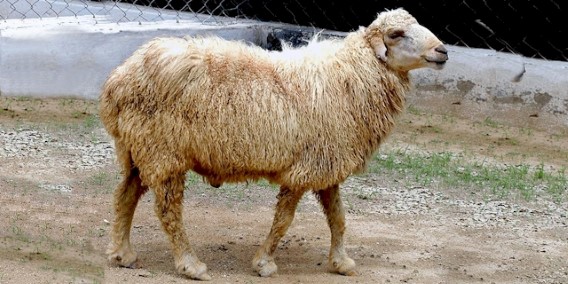
|
Damani sheep are
a dual-purpose (meat and wool) sheep from Pakistan. They are mainly found in
the Dera Ismail Khan district and part of the Bannu district in the Khyber
Pakhtunkhwa province of Pakistan.
Damani are small
to medium sized, strong, and well adapted to their local environments. They are
generally with white with a black or tan colored head and camel-colored legs.
Their ears are small, and the udder and teats of the ewes a
...
|
|
 Damara Damara
|
|

|
Although there are claims that
the Damara breed of sheep originated in Egypt as long ago as 3000 BC, its
recognition as a named breed is more realistically dated to the early twentieth
century. In 1904, this long-legged sheep breed was seen by German explorers in
the northern region of Namibia, which was then called Gross Damaland - hence it
became known as the Damara Sheep. At one time, local farmers who used copper in
their traditional at
...
|
|
 Danish Landrace Danish Landrace
|
|

|
Danish Landrace (also known as dansk landfar or klitfar )
sheep are native to Jutland in Denmark. They were developed from the Merino and
Heath sheep, with early specimen interbreeding in the nineteenth century with
Leicester and Oxford Down sheep.
They are medium sized and are generally white with a gray
head. They are mostly polled, with only around 10 percent horned rams. They are
double-coated and long tailed. Generally their
...
|
|
 Debouillet Debouillet
|
|
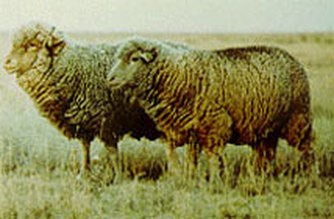
|
Debouillet sheep, a breed developed in New Mexico around 1920, are the result of a cross between Delaine Merino and Rambouillet sheep. This breeding effort aimed to create a sheep well-suited for the range conditions prevalent in the southwestern United States.
Characterized as medium-sized sheep, Debouillets typically exhibit white hair on their faces and legs, adding to their distinct appearance. Beyond their physical traits, these s
...
|
|
 Decanni Decanni
|
|
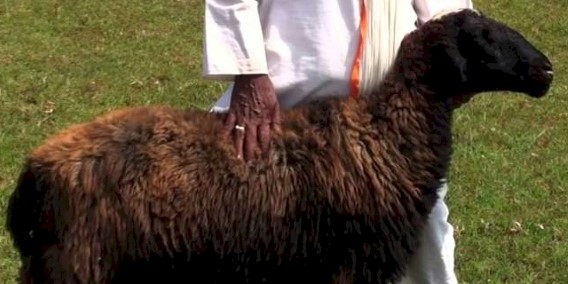
|
Decanni sheep, a small dual-purpose breed known for their meat and wool production, originate from [insert origin or region]. These hardy and adaptable sheep are valued for their distinctive characteristics and contributions to the agricultural landscape.
One of the defining features of Decanni sheep is their unique wool, which comes in shades of black or ash. The wool is notable for being separated and grained, adding to its visual ap
...
|
|
 Delaine Merino Delaine Merino
|
|
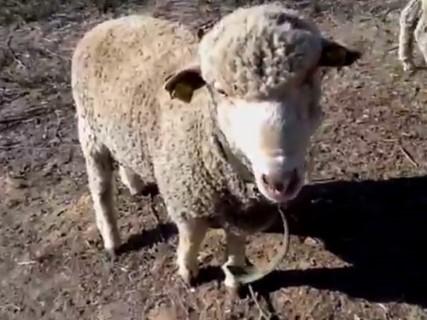
|
In the United States, several strains of Merino sheep have evolved to suit various breeding objectives and environmental conditions. Among these strains, the "A" type Merino emerged in Vermont through a process of careful selection and inbreeding. Characterized by a heavy, wrinkly hide, the type A Merino possesses an angular form with limited carcass value, making it less suitable for commercial lamb and wool production.
On the other h
...
|
|
 Derbyshire Derbyshire
|
|

|
Derbyshire Sheep are characterized by their distinctive black and white marked faces and legs, which are free of wool. They are naturally polled, meaning both males and females lack horns.
The Derbyshire Gritstone variety of this breed is particularly notable for its striking appearance and aristocratic lineage. These sheep have large, flat bones, indicating strength and sturdiness, and they are known for their alert and attentive deme
...
|
|
 Desert Sand Desert Sand
|
|
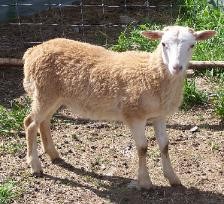
|
Desert Sand are hybrid sheep created in Texas, USA around
1900 with Mouflon Sheep influence in their ancestry. Desert Sand Sheep are a
naturally shedding, and are generally light to dark shades of champagne,
cinnamon or copper colored. All rams must have horns, and the ewes are allowed
to have horns although most ewes are polled.
According to the United Horned Hair Sheep Association,
"The Corsican Group of Sheep (Painted Desert, Texas
...
|
|
 Devon Closewool Devon Closewool
|
|

|
The Devon Closewool Sheep breed is characterized by its medium size, white-faced appearance, and hornless disposition. These sheep exhibit a compact and robust build, with a dense fleece of medium length and staple that is prized for its hardiness and quality. The dense fleece serves as protection against harsh weather conditions, contributing to the breed's resilience and adaptability to various environments.
On average, mature Devon
...
|
|
 Devon Longwooled Devon Longwooled
|
|

|
Devon Longwooled Sheep are known for their distinctive appearance, characterized by a well-covered head adorned with long curly wool. This breed exhibits a polled trait in both sexes, contributing to their clean and uniform appearance. The body of Devon Longwooled Sheep is enveloped in long, curly white wool, which adds to their unique aesthetic and practical value in wool production.
In terms of body structure, Devon Longwooled Sheep
...
|
|
 Diggers Hill Diggers Hill
|
|

|
Diggers Hill sheep are named after the locality in western
Southland, NZ, evolved in a feral state. They have, somewhat confusingly, also
been referred to as Takitimu, Dean Forest and Fiordlander, but the term
Diggers Hill is preferred and used here.
They appear to be basically of Merino origin, but are
distinct enough to be a recognizable breed, although there is some variation in
type. They are also typical of New Zealand feral
...
|
|
 Djallonke Djallonke
|
|
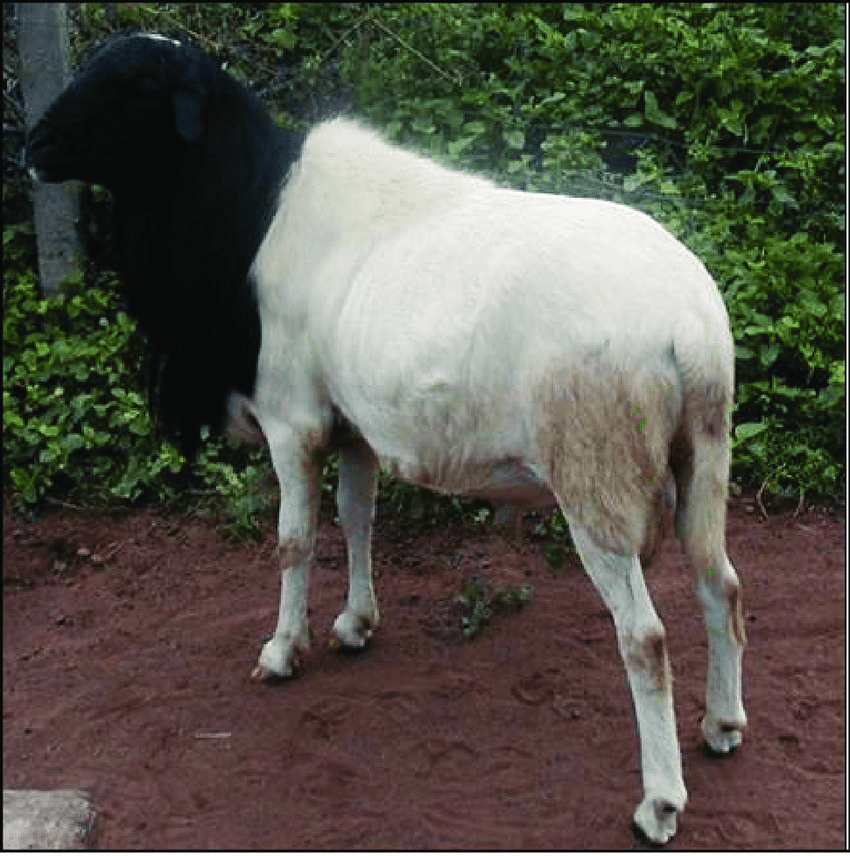
|
Djallonke are a hairy thin-tailed type of
sheep that originated in western Asia, and entered Africa through the Isthmus
of Suez and Bab el Mandeb. Until the third Millennium BC, the hairy thin-tailed
sheep was the only type of sheep on the African continent. Domestic sheep had
reached Egypt and other parts of North Africa by 5000 BC (Epstein 1971).
Djallonke sheep inhabit the area south of latitude 14 degrees N including the coastal
areas o
...
|
|
 Dohne Merino Dohne Merino
|
|
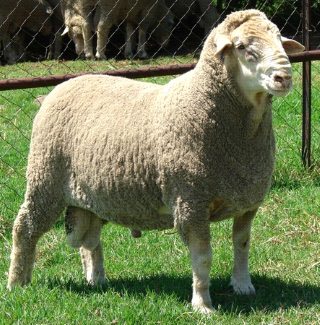
|
Dohne Merino are a synthetic, dual-purpose Merino developed
by the South African Department of Agriculture using Peppin-style Merino ewes
and German Mutton Merino sires. The progeny were interbred and selected for
high-fertility, rapid lamb growth rate, and fine Merino wool under commercial
rangeland conditions.
The breeding program was initiated in 1939 and the Breed
Society was formed in 1966. Selection since 1970 has been
...
|
|
 Dormer Dormer
|
|

|
Dormer sheep are a cross between Dorset Horn rams and German
Merino ewes (presently known as the South African Mutton Merino). They were developed
through a series of extensive slaughter lamb experiments carried out at the
Elsenburg Research Station of the Department of Agriculture since 1927 over a
period of more than ten years. The name Dormer is shortening of the name
Dorset-Merino.
The main object with the development of
...
|
|
 Dorper Dorper
|
|

|
Dorper Sheep are renowned for their distinctive coloration, appearing predominantly white with a striking black head. Despite their white appearance, they are genetically black sheep, characterized by a large white spot covering their entire body except for the head. This unique color pattern is commonly referred to as "black headed Dorper."
In addition to their striking appearance, Dorper Sheep are highly valued for their superior mea
...
|
|
 Dorset Dorset
|
|

|
Dorset ewes are characterized by their medium size and natural prolificacy, making them valuable for breeding purposes. They typically have pink skin, while their face, legs, and ears exhibit a distinctive white coloration. Rams, on the other hand, boast a bold and masculine appearance, with well-developed musculature and good fleshing throughout their bodies.
One of the notable attributes of Dorset sheep is the exceptional quality of
...
|
|
 Dorset Down Dorset Down
|
|

|
Dorset Down Sheep are renowned for their active nature and medium-sized stature, making them a versatile breed suited for various farming environments. These short-woolled sheep are valued for their robust build and high-quality fleece, making them a prized breed among sheep farmers.
One of the distinguishing features of Dorset Down Sheep is their strong legs, which provide sturdy support for their deep-chested and long-bodied frame. T
...
|
|
 Drysdale Drysdale
|
|
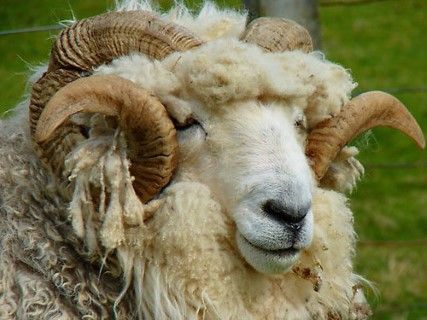
|
Drysdale sheep are a dual-purpose breed prized for their unique wool, which finds its primary use in carpet manufacturing. Renowned for their distinctive wool quality, Drysdales carry the dominant Nd gene, a genetic mutation initially observed in the Romney breed. This genetic characteristic results in the production of a specific type of fiber known as halo-hairs, which are coarse and very hairy.
The wool of the Drysdale sheep is dist
...
|
|
 East Friesian East Friesian
|
|

|
The East Friesian breed originated in the
Friesland area in the north of Holland and Germany. In Europe it has been used
either purely as a milking breed - it is considered to be the worlds highest
producing dairy sheep - though it is often crossed with other breeds to improve
fecundity and milk production in breeds that are bred for their meat or for
their milk production. The East Friesian is described as a large-framed,
high-fertility br
...
|
|
 Easy Care Easy Care
|
|
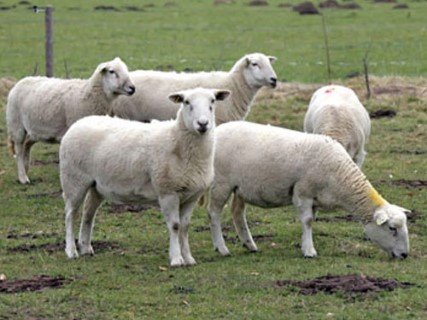
|
Easy Care Sheep are a revolutionary breed of sheep which requires
minimal shepherding and veterinary care, sheds its wool in the summer, does not
need shearing and yet offers excellent meat yields and lambing ratios. The
breed is now well established in Britain and abroad and is proving extremely
popular and successful with breeders in todays farming environment.
The guiding principle behind Easy Care is
straightforward. Centurie
...
|
|
 Elliottdale Elliottdale
|
|
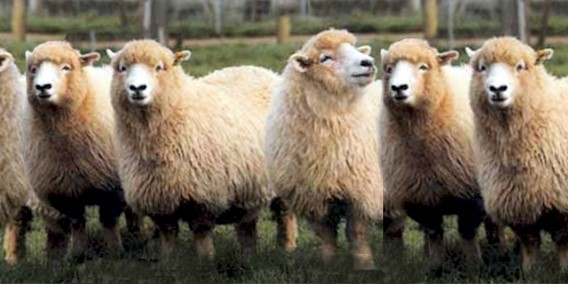
|
Elliottdale are a dual-purpose (meat and wool) sheep
developed at the Elliott Research Station in Tasmania during the 1970s. They
were commercialized in 1986, which helped established the Australian Carpet
Wool Industry. The effect of the EI gene (Elliottdale) is similar to the
Drysdale, Tukidale, and Carpetmaster genes in the Romney breed, and are at a
different locus on the chromozone. Today, the Elliottdale sheep breed is rare
and is at
...
|
|
 English Leicester English Leicester
|
|
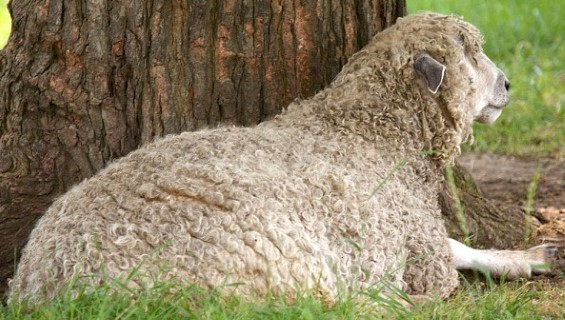
|
English Leicester (also known as Bakewell
Leicester, New Leicester, Dishley Leicester, Leicester Longwool, Improved
Leicester, and simply as Leicester) sheep were developed by the eighteenth
century breeding innovator Robert Bakewell.
At first they were pretty slow-growing and
closely boned. But over time they have been developed to gain weight quickly
and grow very fast. In 1826 they were one of the first pure sheep breeds
...
|
|
 Epynt Hardy Speckled Epynt Hardy Speckled
|
|

|
The Epynt Hardy Speckled Sheep is a robust and versatile breed, specially bred to thrive in the challenging conditions of mountainous terrains throughout the year, with minimal supplementary feeding. This commercial breed is renowned for its resilience and adaptability, making it an excellent choice for farmers seeking an easy-care solution for their flocks.
These sheep are known for their longevity, demonstrating a remarkable ability
...
|
|
 Est a Laine Est a Laine
|
|
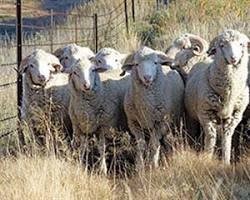
|
During the late 18th century, a significant infusion of Merino blood was introduced into German sheep breeds along the borders with France. Over time, these crosses developed into what is now known as the Est a Laine breed, primarily concentrated in the Alsace Lorraine region of France.
Est a Laine sheep are renowned for their robust build, large frame, and fine white wool. Unlike their Merino ancestors, they are naturally polled, mean
...
|
|
 Est à Laine Merino Est à Laine Merino
|
|
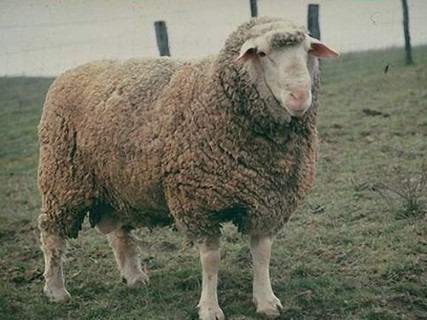
|
During the late 18th century, the infusion of Merino genetics into German sheep flocks along the border with France marked the inception of a new breed that would eventually thrive in the Alsace Lorraine region of France. This new breed, known as the Est à Laine Merino, derives its name from the French phrase meaning "East and Wool."
Est à Laine Merinos are distinguished by their impressive stature, exhibiting a robust and large-framed
...
|
|
 Estonian Ruhnu Estonian Ruhnu
|
|
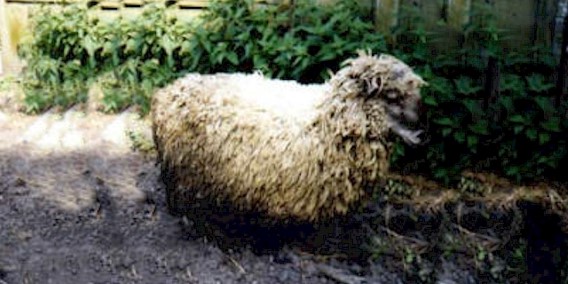
|
Estonian Ruhnu (also known as Eesti
Maalammas) sheep were found on the small Estonian island of Ruhnu in the Gulf
of Riga in the Baltic Sea. They are thought to have developed from sheep left
on Ruhnu island by Swedish-speaking inhabitants who settled on the island in
the fourteenth century.
Their total population was documented as
300 in 1944. Currently they are rare, and their total population is around 30
animals. They are a
...
|
|
 Exmoor Horn Exmoor Horn
|
|

|
Exmoor Horn Sheep, an ancient and revered hill breed originating from the rugged landscapes of the west of England, have stood the test of time, proving their adaptability to both traditional and modern farming practices.
These sheep are characterized by their distinctive white faces adorned with horns, which are a hallmark feature of the breed. Their cherry-colored skin adds to their unique appearance, contributing to their resilience
...
|
|
 Fabrianese Fabrianese
|
|

|
Fabrianese sheep are renowned for their robust stature and suitability for meat production, making them a valued breed within the agricultural landscape of the Ancona Province in the Marche Region of Italy. These medium-large sheep are characterized by their distinctive appearance and desirable traits for meat farming.
One of the notable features of Fabrianese sheep is their polled nature, meaning they lack horns, which enhances their
...
|
|
 Faroe Faroe
|
|
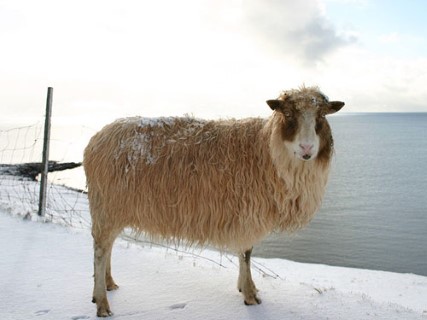
|
Faroes, or Faeroes, sheep are related to Old Norwegian,
Icelandic, and perhaps Shetland breeds. They are not gregarious and tend to be
territorial. Faroes forage in small groups, spreading to cover the entire area,
behaving somewhat like Icelandic sheep. They are small and well adapted to
mountainous terrain. Their color varies from white, grey, light red, dark red,
chestnut brown, to black.
However, due to the low price of w
...
|
|
 Finarda Finarda
|
|

|
Finarda Sheep, a breed primarily raised for meat production, are large white sheep found in the Piedmont and Lombardy Regions of Italy. They are recognized for their robust size and are a result of crossbreeding between Bergamasca and Biellese sheep. With a focus on meat quality, Finarda sheep are valued for their efficient meat production and adaptability to the local climate and environmental conditions of the region. They play a significant ro
...
|
|
 Finnsheep Finnsheep
|
|
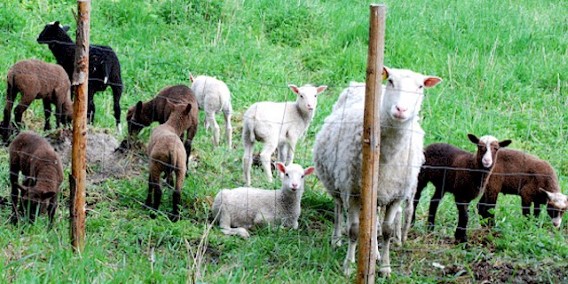
|
The Finnsheep, also known as the Finnish Landrace, hails from the northern reaches of Finland in Europe, where it has earned a reputation for its hardy nature and adaptability to diverse environments. Renowned for its multifaceted contributions to sheep farming, the Finnsheep is primarily utilized for crossbreeding to enhance fertility within standard flocks, making it a sought-after choice among breeders seeking to improve reproductive rates.
<
...
|
|
 Florida Crackers Florida Crackers
|
|
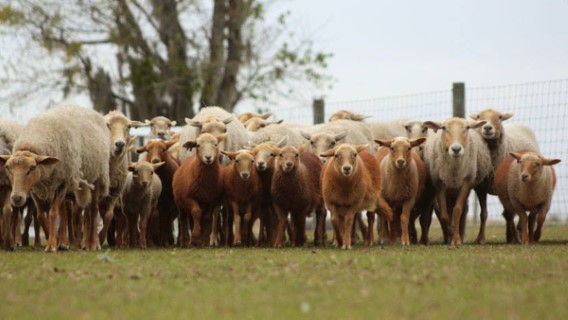
|
Florida Crackers are one of the
oldest breeds of sheep in North America. It is believed that they were
developed from sheep that the Spanish first brought to the southeastern United
States in the 1500's. They developed largely through natural selection under
humid semitropical range conditions in Florida. Prior to the end of open range
in 1949, they were allowed to free range.
In the middle of the last
century, the emphasis
...
|
|
 Frabosana Frabosana
|
|

|
The Frabosana sheep, native to the picturesque Ligurian Alps in the Province of Cuneo, nestled within Italy's Piedmont Region, are a distinctive breed cherished for their unique characteristics and vital contributions to local agriculture.
Medium-sized and predominantly white, with occasional variations in color to a soothing brown hue, Frabosana sheep exude an understated elegance that reflects the rugged beauty of their mountainous h
...
|
|
 Gaddi Gaddi
|
|
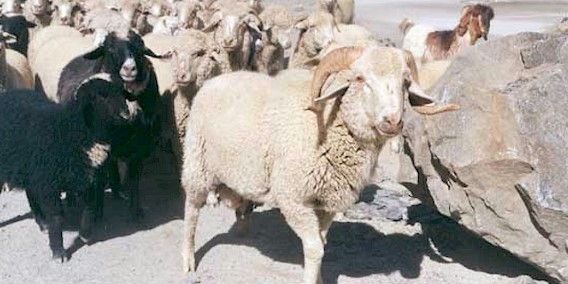
|
Gaddi are medium-sized sheep native to India. They are one
of the 8 different sheep breeds found in the northern temperate area of India. They
are raised mainly for wool production. They are mainly found in Kistwar and
Bhadarwah tehsils in Jammu province of Jammu and Kashmir, Ramnagar, Udampur and
Kullu and the Kangra valleys of Himachal Pradesh and Dehradun. Nainital,
Tehri-Garhwal and Chamoli districts of Uttar Pradesh.
They ar
...
|
|
 Galician Galician
|
|
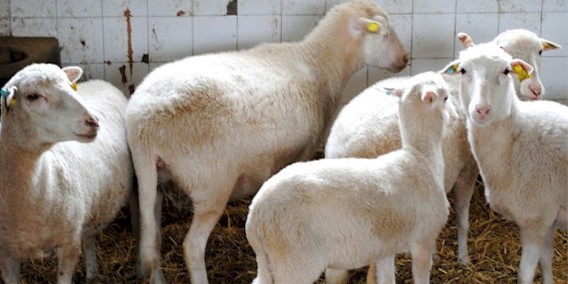
|
Galician, or Ovella galega, sheep are from Galicia region of
Spain.
They are small sheep. Their coat is either all white or
black. The ewes have smaller horns and those are generally diminutive if they
exist at all. While the rams have relatively large horns, in the form of
double-spirals. There are two separate ecotypes, Montana, of the high areas as well as Marinano of the low areas.
Their total population has dwindle
...
|
|
 Galway Galway
|
|

|
Galway sheep are from Galway, in the west of Ireland. They
were developed in the West of Ireland, as a result of the importation of
English Longwools from the late 17th century onwards. From the middle of the
18th century Robert Bakewell's Dishley Leicester, also known as the New or
Improved Leicester, was exported to Ireland in large numbers, in particular to
the estate of Bakewell's associate, Lord Roscommon, and later Lord Sheffield.
<
...
|
|
 Ganjia Ganjia
|
|
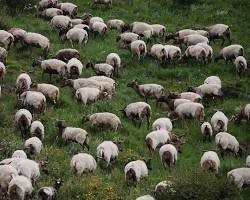
|
Ganjia sheep, also known as Ganjam sheep, are a hardy and resilient breed native to the Ganjam district of Odisha, India. These sheep are well adapted to the local environmental conditions, which include hot and humid climates with seasonal monsoons.
Physically, Ganjia sheep are medium-sized with a compact body structure. They possess a distinctive appearance characterized by a dense and coarse coat of wool that provides insulation aga
...
|
|
 Gansu Alpine Finewool Gansu Alpine Finewool
|
|

|
Gansu Alpine Finewool sheep is one of a number of finewool
breeds in China related to Xinjiang Finewool, as well as Russian Merino sheep.
Gansu Alpine Finewools were initially based on Mongolian and Tibetan ewes and
was developed through backcrossing to Merino type, followed by selection.
They were developed in the Huangchen District of Gansu
Province, China, which has an altitude of 2,600 to 4,000 m (8,530-13,123 ft),
an ann
...
|
|
 Garessina Garessina
|
|

|
The Garessina sheep, also known as Muma or Garessio, are a transhumant meat breed indigenous to southeastern Cuneo Province in Piedmont, Italy, primarily found in Val Tanaro and Val d'Inferno. Classified as an Apennine breed, they exhibit ancestry traces from Merino and French Alpine sheep. Predominantly raised for meat, with approximately 90% slaughtered as lambs, while the remaining 10% are utilized for wool production. Cheese production from t
...
|
|
 Garfagnina White Garfagnina White
|
|

|
The Garfagnina White sheep, a product of the enchanting landscapes of the Appennine group, seamlessly blend the characteristics of their ancestral breeds from the Garfagnana and North-western Toscana regions. These diminutive yet resilient creatures are revered for their dual-purpose nature, excelling in both milk and meat production while harmonizing effortlessly with their rugged hillside environment.
Draped in pristine white coats t
...
|
|
 Gentile di Puglia Gentile di Puglia
|
|

|
Gentile di Puglia sheep, also recognized as Merino di Puglia, Pugliese Migliorata, Merino d'Italia, or Merino Gentile, represent a fine-wooled breed originating from the Puglia region of southern Italy. While their initial development dates back to the 15th century, their primary improvement occurred from the 18th century onwards. These sheep were refined through crosses between Spanish Merino and local breeds, with further enhancement introduced
...
|
|
 German Blavkhead German Blavkhead
|
|
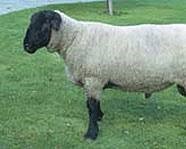
|
German Blavkhead mutton, or Schwarzkopf Fleischschaf, are from Westphalia,
Germany.
They are medium-sized, white sheep that are wide and long with
dark-brown to black head, ears, and legs. They grow crossbred wool with a tight
and firm staple that protects them in a wet climate.
In 1850, blackheaded meat breeds, such as
Leicester, Southdown, and Hampshire were imported from England into Saxony to
be crossed with
...
|
|
 German Gray Heath German Gray Heath
|
|
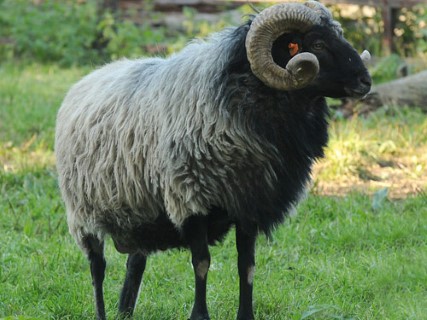
|
German Gray Heath sheep are the symbol of the Lueneburger Heide in
Germany. Their ancestors, the Mouflon were at home in Corsica. Single lambs are
born in spring with a curly, black fleece. After the sheep’s first yearly
shearing, its wool turns silver gray with a black bib. Head and legs are black
and free of wool. Rams weigh up to 80 kg (176 lbs) and have imposing horns that
curl close to the face. Ewes weigh about 45 kg (100 lbs) and have
...
|
|
 German Merino German Merino
|
|
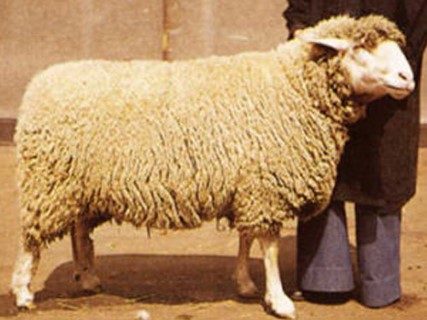
|
German Merino sheep have a large frame, a straight head with a
small woolly tuft on top, no horns, and rough, large ears that stick out to the
side, with legs free of wool.
In the 18th century, Southern German Landsheep were crossed with
French and Spanish Merinos, which produced the German Merino, or Merinolandschaf.
They are the most common sheep breed in Germany today, at 40% of the total
German sheep population.
German
...
|
|
 German Mutton Merino German Mutton Merino
|
|
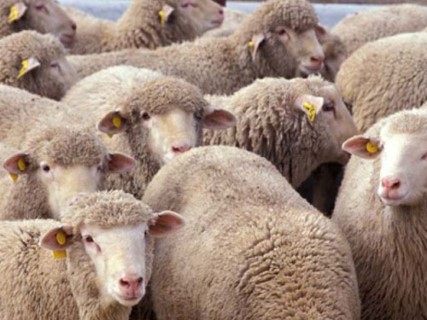
|
The German Mutton Merino, specifically the Merinofleischschaf breed, is exceptionally well-suited for intensive production systems, particularly in arid or agricultural regions. Renowned for its high resistance to various environmental stresses, this breed demonstrates remarkable adaptability to diverse climates and husbandry conditions. Its robust nature and adaptiveness make it an ideal choice for farmers seeking a resilient and productive shee
...
|
|
 German Whiteheaded Mutton German Whiteheaded Mutton
|
|
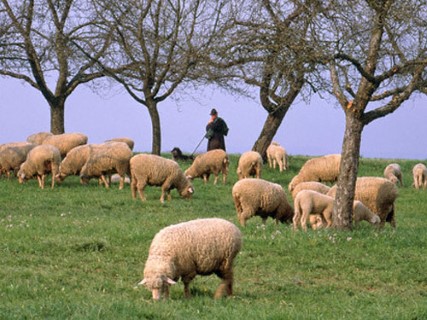
|
German Whiteheaded Mutton, or Deutsches Weisskopfiges
Fleischschaf,was developed along the
North Sea coast in the middle of the last century. English Leicester, Cotswold,
Hampshire, and Oxfordshire were imported and crossbred with the local
Wilstermarschschaf, a northern German marsh sheep. Breeders succeeded in
retaining the wanted qualities of the marsh sheep, such as high fecundity, fast
development, and large size. In the 1930s, a new b
...
|
|
 Ghezel Ghezel
|
|
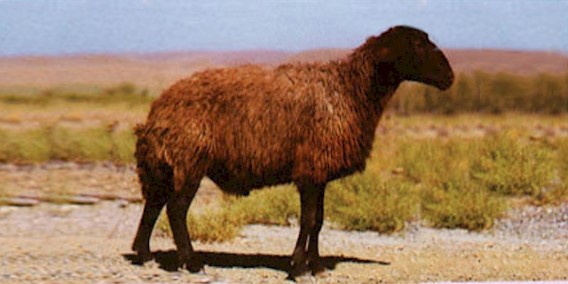
|
Ghezel sheep, known by a myriad of names including Kizil-Karaman, Mor-Karaman, Dugli, Erzurum, Chacra, Chagra, Chakra, Gesel, Gezel, Kazil, Khezel, Khizel, Kizil, Qezel, Qizil, and Turkish Brown, trace their origins to the rugged landscapes of northwestern Iran and northeastern Turkey. This hardy breed has garnered attention for its distinctive red fleece, which often exhibits captivating variations ranging from deep shades of black-red to lighte
...
|
|
 Gotland Gotland
|
|

|
Gotland Sheep are fine-boned and medium-sized. They have ahornless black head, free from wool,
sometimes with white markings. Bold eyes, alert medium sided ears. Small, neat
muzzle with even jaw. Slender neck and shoulders set smoothly into a level back
with generous length, good depth and reasonable breadth of body. Slender black
legs well-spaced and upright. Short hair-tipped tail. Dense long lustrous grey
fleece, occasionally black, white
...
|
|
 Grey Troenders Grey Troenders
|
|
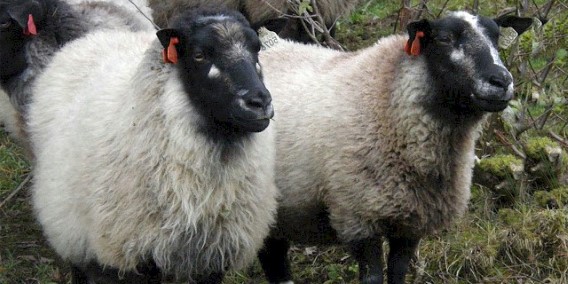
|
Grey Troenders are medium-sized sheep from Trondelag region
of Norway. They were developed, in the late 19th century, from
the crossbreeding of native landrace sheep with the now extinct Tautra sheep.
They are most commonly found in shades of grey with
distinctive white markings under their eyes. Although, brown, black, and white
woolled animals are also occasionally seen. Their wool is uniform with a minimum
fiber diam
...
|
|
 Greyface Dartmoor Greyface Dartmoor
|
|
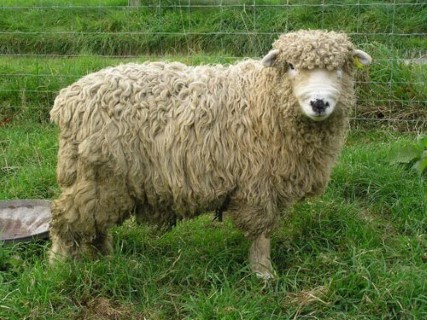
|
The Greyface Dartmoor, also recognized as the Dartmoor or Improved Dartmoor, sheep breed traces its lineage to the local breeds that historically roamed the lowlands in and around Dartmoor. These sheep have developed exceptional resilience and vigor, honed through generations of enduring the harsh winters and exposed conditions prevalent in the Dartmoor region. The breed underwent significant enhancements during the 19th century, leveraging the i
...
|
|
 Gromark Gromark
|
|
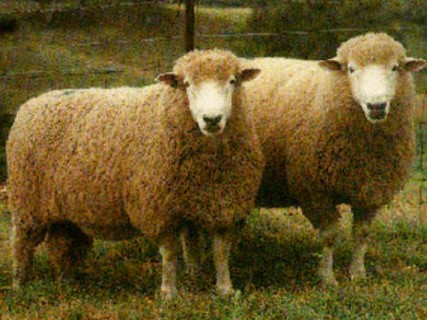
|
The development of Gromark Sheep traces back to 1965 in northern New South Wales, Australia. Gromark Sheep are the result of a strategic breeding program that combined approximately 50 percent Corriedale and 50 percent Border Leicester genetics. This deliberate hybridization aimed to create a dual-purpose sheep breed with a strong emphasis on high growth rate and fertility.
Through rigorous selection processes, Gromark Sheep were bred
...
|
|
 Guirra Guirra
|
|
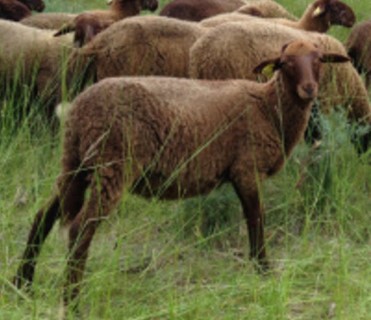
|
Guirra, also known as Sudat and Levant Red, sheep are from
Spain. They are found mainly in the Mediterranean coast of the Spanish
provinces of Alicante, Castellon de la Plana and Valencia. Their early history
is unknown; but according to some authors, they were developed from crossings
of Manchega with thin-tailed North African sheep brought to the Mediterranean
coast. In the past they were bred to produce meat, milk, and wool. But today, th
...
|
|
 Gulf Coast Native Gulf Coast Native
|
|
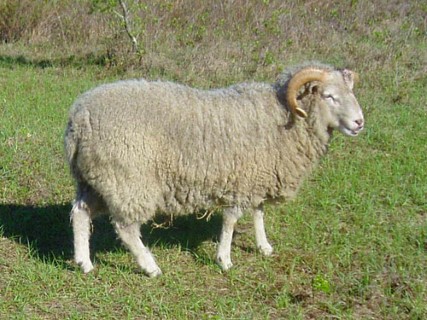
|
Spanish sheep made their debut in the lush pastures of Florida during the 16th century, marking the beginning of a rich history of ovine presence in the region. Over time, subsequent introductions of Spanish sheep, along with other breeds, intermingled with the native population, giving rise to a distinctive lineage that adapted and thrived in the unique environmental conditions of Florida and neighboring Gulf Coast states. This amalgamation of d
...
|
|
 Gute Gute
|
|
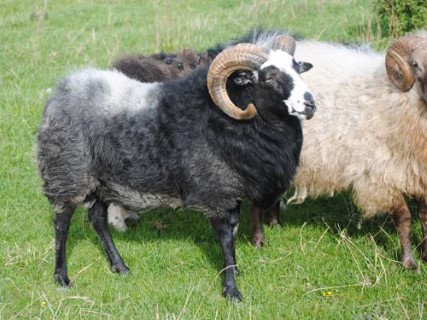
|
Gute sheep are the most primitive breed in the collection of
breeds that make up the Swedish Landrace breed group. These breeds belong to
the North European Short Tailed Breeds and are related to such breeds as the
Finnsheep, Romanov, Spelsau, Shetland, Faroe, Orkney, and Icelandic sheep.
Both rams and ewes have two well-developed, slightly turned,
converging or diverging, symmetrical horns which are strongly curved and deeply
...
|
|
 Hampshire Hampshire
|
|

|
The Hampshire Sheep is characterized by its distinctive appearance, with a face and ears that exhibit a rich, dark brown coloration, often nearing black. These features are complemented by a woolly covering over the poll and forehead. The wool of Hampshire Sheep is predominantly white, boasting an average staple length.
In terms of body conformation, Hampshire Sheep are notable for their deep and symmetrical build. They feature well-sp
...
|
|
 Han Han
|
|

|
Han sheep, a breed native to Mongolia, were developed in the semi-humid agricultural regions of China, specifically in provinces such as Henan, Hebei, Shandong, Anhui, and Jiangsu. Originally classified as a single breed, Han sheep were later recognized as comprising two distinct types, officially designated as the Large-tail Han and Small-tail Han breeds in 1982.
The Large-tail Han sheep are characterized by their polled nature and di
...
|
|
 Hanzhong Hanzhong
|
|
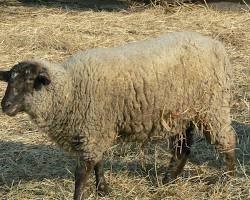
|
Hanzhong sheep, primarily found in Ningqiang, Lueyang, and Mianxian counties of Shanxi province, China, are renowned for their suitability for meat production.
Adult Hanzhong rams typically weigh around 35 kilograms, while adult females weigh approximately 31 kilograms. Their wool is characterized by its moderate fineness, with a diameter ranging between 30 to 38 microns, and an average length of 8 to 10 centimeters.
These s
...
|
|
 Hardiness Hardiness
|
|

|
Hardiness and self-reliance are the outstanding features of
this ancient breed. Hill flocks of this breed, in normal conditions, require no
supplementary feeding, they thrive on the short rough grasses and herbage of
the unploughable uplands. They are an ideal breed for the smallholder as well
as being used in their natural environment on the hill. They are a good breed
for children to work with as they are shown on halters and the lambs are
...
|
|
 Harnai Harnai
|
|
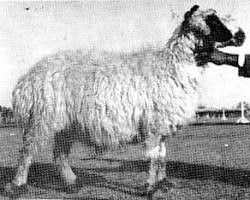
|
Harnai sheep, known for their unique combination of mutton and wool attributes, represent a prominent breed found in select regions across the Baluchistan Province, specifically in areas spanning Loralai, Quetta, Sibi, and Zhob districts. These medium-sized sheep exhibit distinctive features that set them apart within the sheep farming landscape.
In terms of appearance, Harnai sheep boast a striking white body coat that serves as a can
...
|
|
 Hasht Nagri Hasht Nagri
|
|
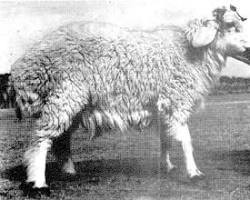
|
Hasht Nagri sheep, named after the Hasht Nagar tract in the North-West Frontier Province of Pakistan, are a distinct breed known for their fat-tailed characteristics and suitability for both mutton and wool production. Medium in size, these sheep possess a predominantly white body coat, often complemented by a head and face that are partially or completely black or tan in color.
In terms of wool production, Hasht Nagri sheep offer a mo
...
|
|
 Hazaragie Hazaragie
|
|
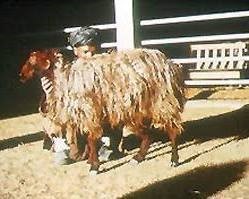
|
Hazaragie sheep originate from Central Afghanistan and are known as a fat-tailed meat breed with high-quality wool suitable for carpets. They typically have a reddish-brown coloration, although individuals with black or white fleece and a brown belly are also observed. Both males and females of the breed are naturally polled, meaning they do not have horns.
|
|
 Hebridean Hebridean
|
|

|
Hebridean Sheep are a small, hardy breed with fine bones and a
tail reaching no lower than the hocks. Both sexes are horned, and about 10% of
animals have four or more horns. Occasionally polled ewes are to be seen but
these are genetically four horned and usually produce horned lambs. The animals
are entirely black, though the fleece usually goes grey with age. Lambs may
have a dark brown appearance because the tips of the fleece have been
...
|
|
 Heidschnucke Heidschnucke
|
|
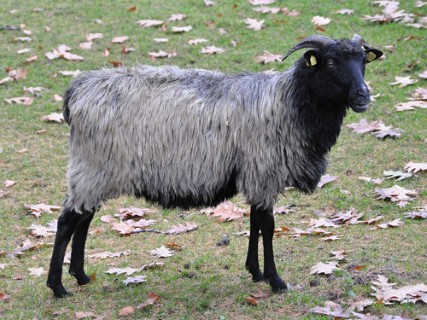
|
Heidschnucke, a distinctive breed of sheep originating from the region of Niedersachsen in Germany, is renowned for its unique characteristics and historical significance within northern Germany. This breed encompasses several distinct varieties, each with its own distinct traits and attributes, including the grey horned Heidschnucke, the white horned Heidschnucke, and the moorschnucke, also known as the marsh sheep.
Historically, Heid
...
|
|
 Herdwicks Herdwicks
|
|

|
Herdwicks Sheep are a sturdy, strong boned breed. The rams
in particular have a broad chest, noticeably thick-set legs and may have strong
horns, although as many as 20% are polled or have relatively small amounts of
horn growth. The female sheep are somewhat finer boned and should not have any
sign of horns. Purebred Herdwick lambs are born largely black often with tips
of white on their ears.As they age, the
heads and legs become white an
...
|
|
 Herik Herik
|
|
|
Herik sheep, also known as Amasya Herik or Heregi, are short, fat-tailed sheep originating from northern Anatolia in Turkey. They are a breed valued for their carpet wool, as well as for meat and dairy production. Similar to Daglic sheep, they typically have a white coat with dark spots on their head. While males of the breed are horned, females are usually naturally polled, meaning they do not have horns.
|
|
 Hill Radnor Hill Radnor
|
|
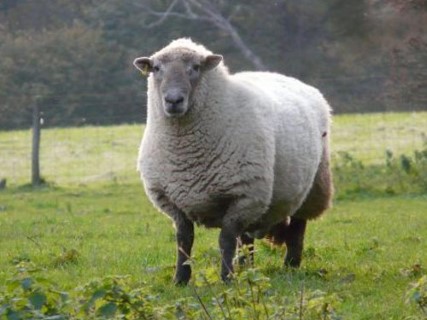
|
Hill Radnor Sheep, a native hill or mountain breed, are primarily found in the Border counties extending from the northern region of Powys down to southwestern Herefordshire and Monmouthshire. Renowned for their robust build and adaptability to rugged terrains, Hill Radnor Sheep are esteemed for their substantial body length and width, particularly in their hindquarters. These sheep stand on sturdy legs with ample bone structure, ensuring their r
...
|
|
 Hog Island Hog Island
|
|
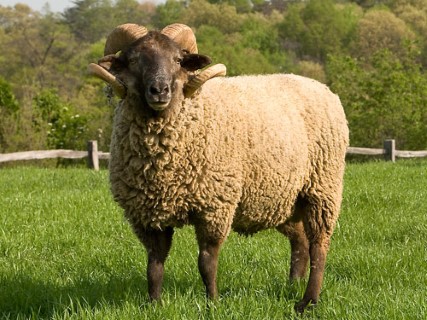
|
About 200 years ago, a unique flock of sheep found its home on Hog Island, one of Virginia's barrier islands nestled off its Eastern Shore. These sheep were already indigenous to the area and were believed to possess a significant amount of Merino bloodline. Over the years, there were sporadic introductions of new genetic influences, with the most recent addition occurring in 1953 when a Hampshire ram was brought to the island.
In 1974
...
|
|
 Hokonio Hokonio
|
|

|
Hokonio Sheep are from the Hokonui hills in the heart of
Southland, New Zealand, where they have made the rugged and isolated Hokonui
Hills their home for more than a century.
At one time more than 2000 Merino sheep roamed the hills.
Today only about 100 remain feral. Another 100 to 150 are being retained in
domestic flocks.
Wild sheep were known to occur in this area as early as 1863 - only a few years after the first M
...
|
|
 Hu Hu
|
|
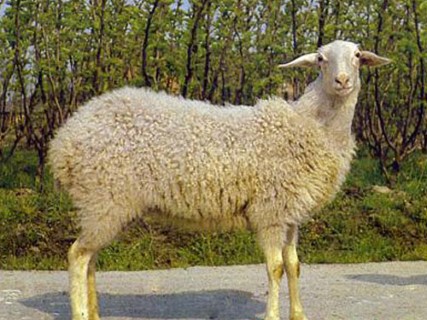
|
Hu sheep originated from Mongolian sheep. They are
distributed in the Zhejiang Jiangsu provinces of China and the suburbs of
Shanghai. Hu sheep are well recognized for their beautiful wavy lambskins,
early sexual maturity, aseasonal breeding, prolificacy, and the adaptability to
a hot and humid climate. Hu sheep are raised indoors all year round. The
lambskins taken from lambs slaughtered within the day of birth have distinctive
wave-like s
...
|
|
 Icelandic Icelandic
|
|
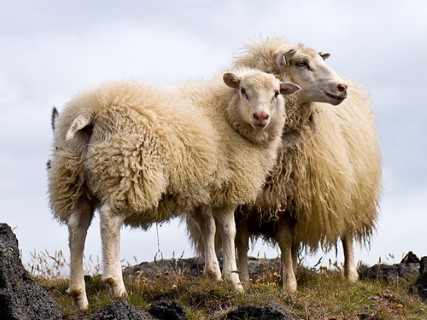
|
Icelandic Sheep are a medium-sized, upstanding sheep, with a light
frame and a naturally short fluke-shaped tail. Although the majority of them
are horned in both sexes, polled rams and ewes are common. The horns of the ram
are strong and well rounded; the ewe's horns are finer and usually swept back.
Four horned sheep are found occasionally in Iceland, but none have occurred in
the UK. The fleece consists of a dual coat of very fine under-w
...
|
|
 Ile-de-France Ile-de-France
|
|
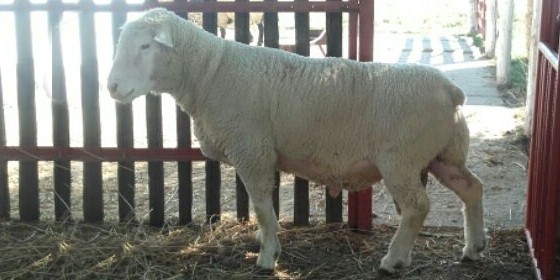
|
The Ile-de-France Sheep is characterized by its robust and imposing appearance, featuring a strong head with a broad forehead and thick lips and nose. These sheep are typically polled, with protruding eye sockets and a face of medium length. The profile is straight, with a slightly concave appearance in rams, and large ears that may be horizontal or slightly angled upwards, covered in thin short hair.
In terms of body structure, Ile-de
...
|
|
 Imrov Imrov
|
|
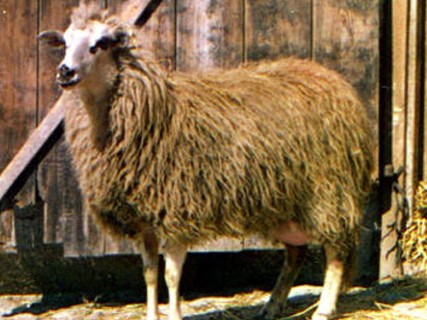
|
Imrov Sheep are among the smallest sheep breeds in Turkey.
They are raised for meat, milk, and wool. They are predominantly white, with
black marks around the mouth, nose and eyes, on the ears and rarely on the tip
of the legs.
Their tail is thin and long, usually reaching below the
hocks. Rams have strong spiral horns extending sideways; ewes are usually
polled, but up to 30% of the ewes may have small scurs. Their head are
...
|
|
 INRA 401 INRA 401
|
|
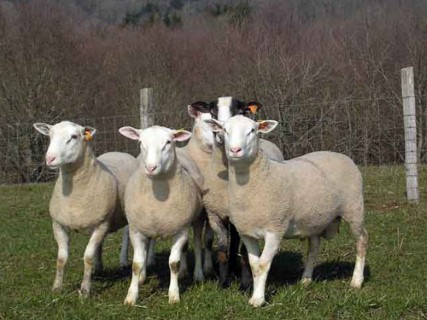
|
The INRA 401 sheep bloodline traces its origins back to France in 1970, following a carefully orchestrated breeding program initiated in 1963 that involved crossing the Berrichon du Cher and Romanov breeds.
Throughout the breeding process, meticulous attention was paid to maintaining the genetic integrity of the foundation generation. Matings were meticulously conducted over several successive generations, prioritizing the selection
...
|
|
 Istrian Milk Istrian Milk
|
|
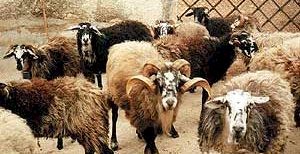
|
Istrian Milk,
or Istriana or Carsolina, sheep are milk sheep from the Istria and Karst regions of Italy. The Istria sheep
breeders have traditionally bred domestic, autochthonous (indigenous) sheep which they called Istriana or
Carsolina. Through the years they have bred Istrian sheep mainly for their
unusual and distinct long-stepping walk and the ability to graze in rocky
terrain. While they will graze even on dry old grass, they are quite
...
|
|
 Jacob Jacob
|
|
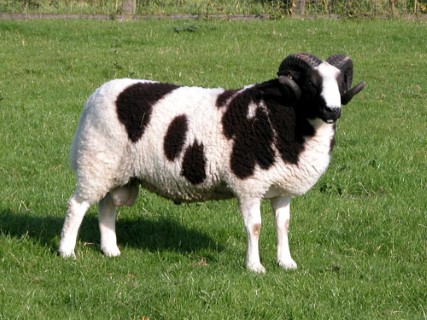
|
Jacob Sheep, originally a parkland breed, have become widespread, being found in various regions across the British Isles and several countries worldwide. These sheep are known for their alert and attractive appearance, standing upright with a deep-bodied build.
Their distinctive fleece is white with well-defined black patches, particularly noticeable on the head and neck where black coloration dominates, often accompanied by a white b
...
|
|
 Jezersko-Solcava Jezersko-Solcava
|
|
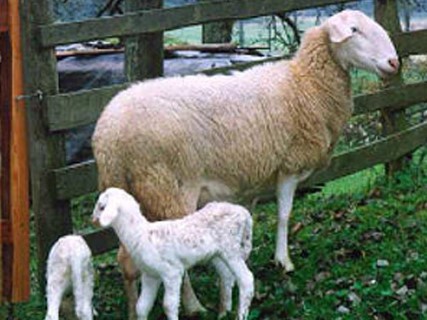
|
Jezersko-Solcava, or Jezerskosolflorinavska, sheep were
developed by the crossbreeding of native white sheep with Bergamasca and Padova
sheep. They resemble the Austrian Bergschaf that has a similar origin. They got
their name from the breeding centers of Jezersko and Solflorinava. Their head
has a convex profile and hanging ears. Their legs are long and strong. Jezersko-Solcava
sheep are very convenient for lamb
production in the Alpine an
...
|
|
 Kamieniec Kamieniec
|
|
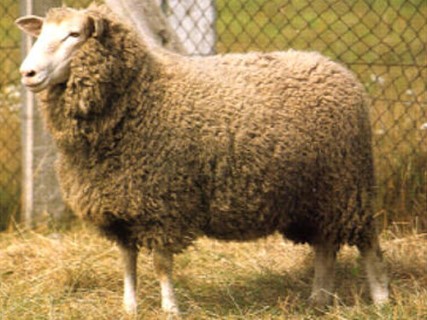
|
Kamieniec are a dual-purpose medium-wool sheep from Poland.
They were developed between 1954 and 1965 in the Kamieniec farm of the Breeding
Center in Susz, near Olsztyn. The starting point was a flock of primitive ewes
of the Pomeranian type, from individual farms in the regions of Gdansk and
Koszalin or brought from settlers from the East. They were initially crossed
with Leine and Texel rams, and then mated to Romney Marsh rams.
Aft
...
|
|
 Karakul Karakul
|
|

|
Karakul Sheep are a fat-tailed (and fat-rumped) sheep
characteristic of the Middle East as well as southern Asia and North Africa
(although they were found as far south as the African Cape by the seventeenth
century). As the general name implies, they are distinguished by an
accumulation of fat in the tail and around the rump which evolved as a store of
food necessary for survival in a harsh, drought-prone environment.
Description
...
|
|
 Karayaka Karayaka
|
|
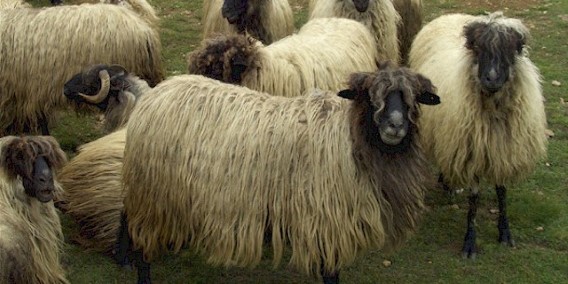
|
Karayaka are multi-purpose sheep from Turkey. They are good for producing both meat and milk, and their wool is also used in carpets. They are mostly found in the northern Anatolia in Turkey, and are strongly identified with the village of Karayaka. They are also found along the eastern half of the Black Sea coast, especially in Giresun, Ordu, Sinop, Samsun, and Tokat. And they are also raised in Duzce, in the region of Western Black sea. The qua
...
|
|
 Katahdin Katahdin
|
|
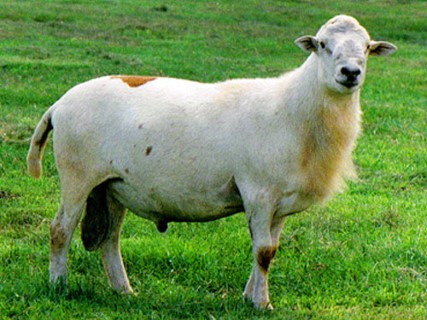
|
The Katahdin sheep breed has an intriguing and unique history, originating from the innovative breeding efforts of Michael Piel in Maine during the late 1950s. Piel, recognizing the potential benefits of eliminating wool as a major factor for selection, embarked on a mission to combine the desirable traits of Caribbean hair sheep, such as their hair coat, prolificacy, and hardiness, with the meat conformation and growth rate of wool breeds.
...
|
|
 Kelso Kelso
|
|
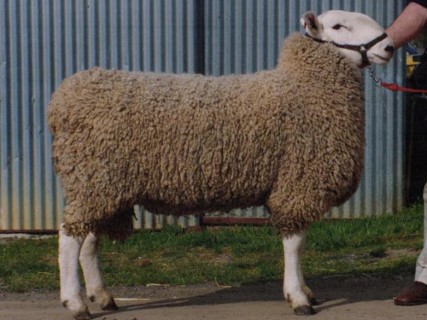
|
Kelso sheep represent a notable example of composite breeds cultivated in New Zealand, distinguishing themselves from traditional breeds by their exclusive focus on productive traits rather than appearance. Developed to meet evolving market demands, Kelso sheep are subject to continual upgrading and modification, ensuring their alignment with contemporary agricultural requirements.
At the forefront of the development of Kelso sheep is
...
|
|
 Kerry Hill Kerry Hill
|
|
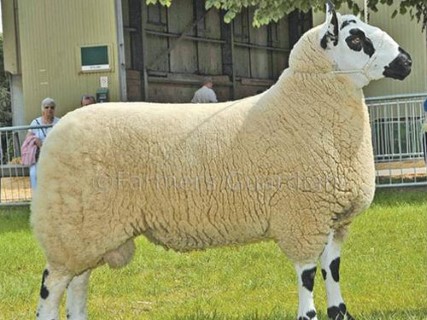
|
Kerry Hill Sheep are renowned for their robust and well-proportioned build, exhibiting a sturdy frame and a balanced physique. They are characterized by ears that are set high on their heads, ensuring they remain free from wool and enhancing their alert appearance. A distinguishing feature of Kerry Hill Sheep is their striking black nose, along with sharply defined black and white markings adorning their head and legs.
Both ewes and ra
...
|
|
 Kivircik Kivircik
|
|

|
Kivircik sheep, native to the northwestern regions of Turkey, are highly valued for their dual-purpose capabilities, providing both milk and meat production for local communities. These sheep are esteemed for their distinctive characteristics, including their unique fleece and robust physical attributes.
The fleece of Kivircik sheep is categorized as a carpet-wool type, renowned for its superior quality compared to other indigenous she
...
|
|
 Kooka Kooka
|
|
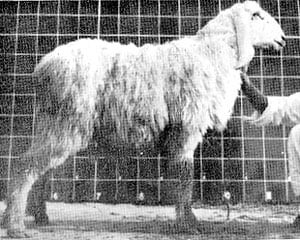
|
The Kooka sheep breed, originating from Pakistan, is primarily raised for both meat and wool production, making it a valuable dual-purpose breed for farmers.
These sheep are known for their distinctive characteristics, including a heavy head with a wide forehead, long hanging ears, small horns, and a medium-sized mouth. These features contribute to their unique appearance and overall robust build, which is well-suited for their dual-pu
...
|
|
 Lacaune Lacaune
|
|
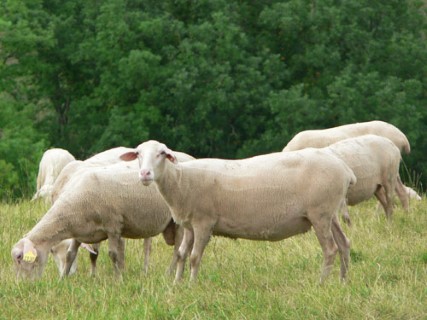
|
Lacaune sheep are the most
numerous sheep breed in France. They have been selected in France for increased
milk production under a sophisticated selection program incorporating
artificial insemination, milk recording, and progeny testing of sires for
longer than any other dairy sheep breed in the world.
Annual genetic improvement for
milk yield in the French Lacaune is estimated at 2.4% or 5.7 kg (12.5 lbs).
Lacaune ewes pro
...
|
|
 Lamon Lamon
|
|

|
The Lamon sheep, a robust and resilient Alpine breed, have long been cherished for their valuable contributions to the pastoral traditions of northern Italy. With their large, polled frames and distinctive lop-ears, they epitomize the rugged beauty of mountain-dwelling livestock. Adorned in coats of yellow-white wool, occasionally adorned with speckles of brown or black on their face and legs, they present a striking sight against the backdrop of
...
|
|
 Landschaf Landschaf
|
|
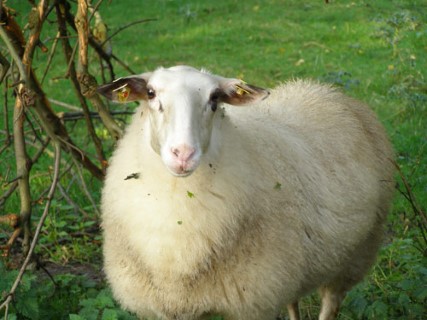
|
Landschaf sheep are a distinctive breed resulting from a cross between German and Dutch heath sheep with a marsh sheep lineage. Originating in the northern German Emsland area, particularly in the county of Bentheim, Landschaf sheep have been bred since 1934 with a primary focus on landscape preservation efforts.
This breed is considered highly endangered, emphasizing the importance of conservation efforts to protect its genetic divers
...
|
|
 Langhe Langhe
|
|

|
Langhe sheep, also known as Delle Langhe, are esteemed medium-large dairy sheep known for their high-quality milk production. Originally hailing from the picturesque Langhe region in the Piedmont area of Italy, they have a rich history and are highly regarded for their valuable contributions to the dairy industry.
These sheep are predominantly white in color and exhibit a robust and well-proportioned build characteristic of medium-larg
...
|
|
 Lati Lati
|
|
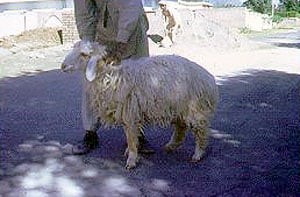
|
Lati sheep, alternatively known as Salt Range sheep, are primarily bred for both meat and wool production in the vicinity of the Salt Range hills situated in the Punjab Province of Pakistan. Characterized by their medium size and distinctive physical features, Lati sheep contribute significantly to the local agricultural landscape.
These sheep typically exhibit a medium-sized build, adorned with a fleece of white wool, creating a visua
...
|
|
 Laticauda Laticauda
|
|

|
The Laticauda sheep, known for their distinctive white coats, trace their ancestry back to Northern African sheep. Over time, these sheep have undergone significant development, acquiring many of their modern traits through crossbreeding with sheep from the Apennines region of Italy. It is believed that they were introduced to Italy during the reign of Charles III, a period marked by cultural exchange and trade between regions.
Renowne
...
|
|
 Latvian Dark-headed Latvian Dark-headed
|
|
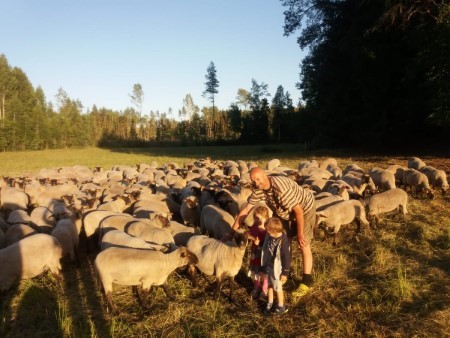
|
Latvian Dark-headed Sheep, also recognized as the Latvian Brown Sheep, are a medium-sized breed with a brown body complemented by a distinctive black head. Renowned for its dual-purpose capabilities, they are prized for both their succulent meat and quality wool. The wool harvested from the Latvian Dark-headed Sheep are used in an array of products, from cozy sweaters and durable socks to snug blankets. Meanwhile, its delectable meat frequently g
...
|
|
 Latxa Latxa
|
|
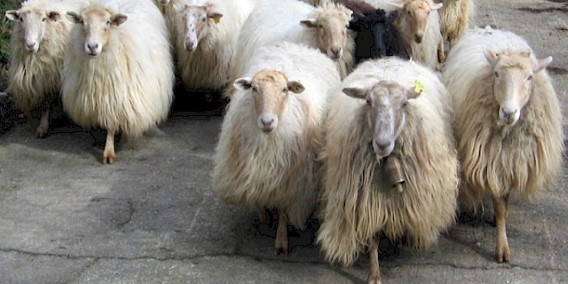
|
Latxa sheep are a
milk sheep breed from the Basque Country of Spain. They are mostly raised
within the provinces of Biscay, Gipuzkoa, and Navarre. They are known for excellent
quality milk production. Their unpasteurized milk is used for producing
Idiazabal and Roncal cheeses.
Latxa sheep have
been managed traditionally by moving the flock to the mountain pastures in the summer
when the ewes have finished lactating, with cheese-makin
...
|
|
 Leccese Leccese
|
|

|
The Leccese, affectionately known as the Moscia Leccese, sheep, trace their lineage to the ancient Zackel sheep of Asia, a testament to their storied ancestry steeped in centuries of pastoral tradition. Characterized by their distinctive not-so-curled woolly hanging coat, they exude an air of rustic charm that harkens back to their nomadic origins.
With a visage marked by rosy skin and a pristine white coat adorned with striking black
...
|
|
 Leicester Longwool Leicester Longwool
|
|
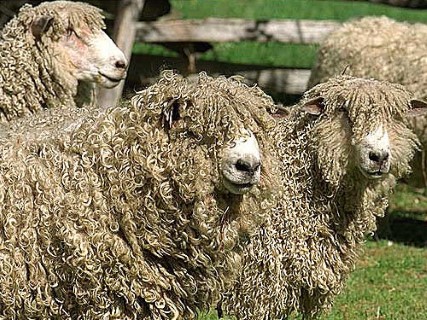
|
Leicester Longwool Sheep are perhaps the most historically
significant of all sheep breeds in its British homeland, and it is certainly
the most famous of the longwools. It was the breed selected for development by Robert Bakewell, the most renowned and successful of all the early workers in
the field of livestock improvement. Working at Dishley Grange in Leicestershire
from 1755, he produced the New - or Dishley - Leicester, which combined t
...
|
|
 Leineschaf Leineschaf
|
|
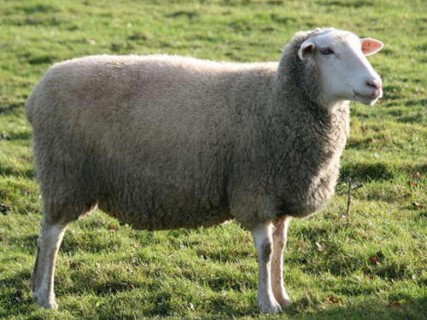
|
Leineschaf, also known as Leine sheep or simply Leine, is a breed originating from the Nordheim region of Hannover, Germany, specifically from the picturesque Leine river valley from which it takes its name. This breed holds a significant place in the local agricultural heritage, embodying the culmination of careful crossbreeding efforts and adaptation to the region's unique environmental conditions.
The development of Leineschaf invol
...
|
|
 Limousine Limousine
|
|
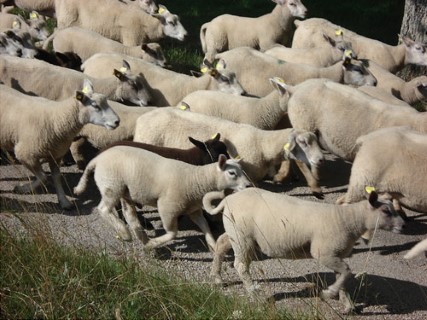
|
Limousine sheep, originating from Limousin, France, are renowned for their remarkable hardiness and adaptability across diverse environments, particularly thriving on non-chalky, acidic soils. This breed is notably distinguished by its exceptional female qualities, which include early sexual maturity, a reliable aptitude for off-season breeding, strong maternal instincts, and high milk value. Limousine sheep have demonstrated their resilience and
...
|
|
 Lincoln Longwool Lincoln Longwool
|
|
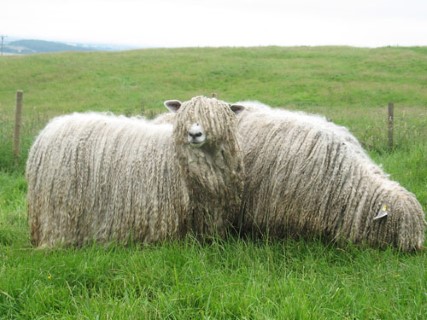
|
The Lincoln Longwool sheep holds a distinguished position in British agricultural history as the oldest known longwool breed, with roots tracing back to the marshy fenlands of Lincoln County as early as 1749. Revered for its luxurious fleece and robust build, the Lincoln Longwool played a pivotal role in shaping the development of other British longwool breeds.
Throughout its storied lineage, the Lincoln Longwool maintained a close rel
...
|
|
 Lithuanian Black-Headed Lithuanian Black-Headed
|
|
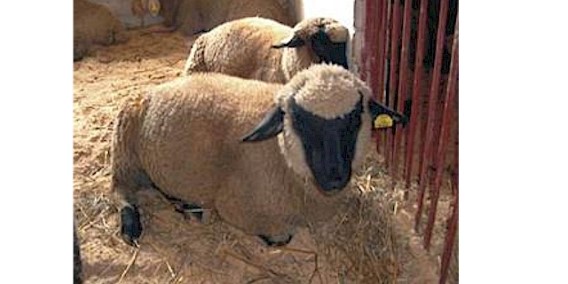
|
Lithuanian Black-Headed are multipurpose
sheep developed in Lithuania during the mid-20th century. They were developed
by crossing local sheep with English Shropshire and meaty German black-headed
rams, with the goal of combining the best characteristics of both.
Lithuanian Black-Headed sheep
mature early and supply homogenous semi-fine wool. They have short and white
wool, while their head, ears, and legs are covered with black
...
|
|
 Litla Dimun Litla Dimun
|
|
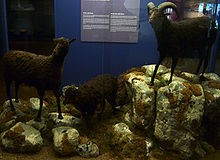
|
Litla Dimun sheep were a primitive, short-tailed, small,
black, short-wooled breed of sheep that lived in Litla Dimun (a small island between the islands of Suouroy
and Stora Dimun in the Faroe Islands of Denmark). They became extinct
during the mid-19th century.
They were a feral sheep, probably derived from the earliest
sheep brought to Northern Europe in the Neolithic Period. The last of these
sheep were shot in the 1860s.
<
...
|
|
 Livo Livo
|
|

|
The Livo sheep, indigenous to the picturesque Valle di Livo nestled within the Lombardy Region of northern Italy, embody the rugged beauty and pastoral charm of their ancestral homeland. Medium-sized and robust, these sheep possess a distinctive appearance and a rich heritage deeply intertwined with the cultural fabric of the region.
Clad in lustrous coats of yellow wool that evoke the golden hues of the surrounding landscape, Livo she
...
|
|
 Llandovery Whiteface Hill Llandovery Whiteface Hill
|
|
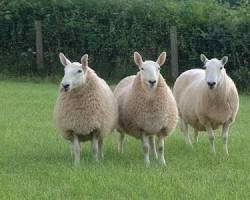
|
Llandovery Whiteface Hill Sheep are an
elite hill breed of sheep. The rams have tremendous scale for a hill breed
possessing good length and depth and can be either horned or moiled (without
horns). The sheep have a dense fleece
able to withstand the elements of the harsh upland environment. Both rams and ewes have a clean white
face. For generations the Llandovery
Whiteface Hill Sheep has been bred to live and thrive in the areas surrou
...
|
|
 Llanwenog Llanwenog
|
|

|
Llanwenog sheep are a distinctive breed known for their characteristic black faces and polled nature, devoid of horns. They typically exhibit a tuft of clean wool on the forehead, adding to their unique appearance. These sheep are recognized for their compact build, featuring well-sprung ribs, a robust loin, and strong thighs.
The fleece of Llanwenog sheep is predominantly white, contributing to their overall appearance. Their wool is
...
|
|
 Lleyn Lleyn
|
|

|
The Lleyn Sheep is a medium-sized lowland breed known for its exceptional hardiness, prolificacy, and ease of handling. At maturity, they typically weigh up to 70 kilograms, making them suitable for various farming conditions. Renowned for their easy lambing and strong mothering instinct, Lleyn ewes are valued for their milkiness and ability to rear lambs efficiently.
One of the distinguishing features of Lleyn Sheep is their white woo
...
|
|
 Lohi Lohi
|
|
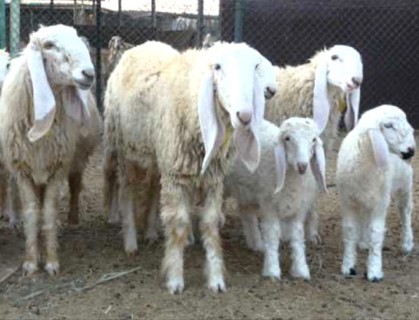
|
Lohi sheep, renowned for their distinctive characteristics, are a large breed of sheep known for their exceptional meat quality and unique physical features. Originating from Pakistan and parts of northern India, Lohi sheep have garnered recognition for their valuable contributions to the local agricultural landscape and the culinary preferences of the region.
One of the most striking features of Lohi sheep is their large size, which d
...
|
|
 Lonk Lonk
|
|
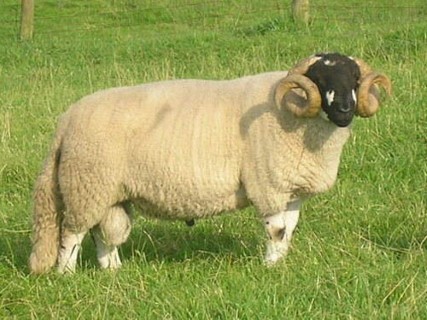
|
Lonk Sheep, renowned as one of the largest native hill breeds, epitomize ruggedness and hardiness in their distinctive appearance and versatile characteristics. Their striking face and legs are adorned in contrasting hues of pure black and white, adding to their allure amidst the rolling hills. The Lonk's fleece, meticulously maintained and evenly distributed from head to skirting, boasts a pristine white hue and is notably devoid of kemp, reflec
...
|
|
 Manchega Manchega
|
|
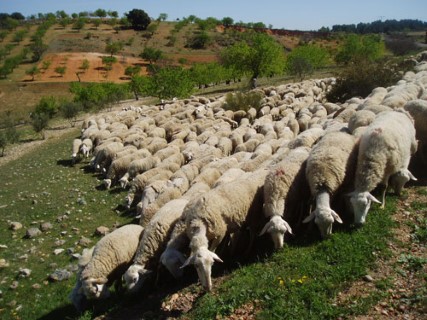
|
Manchega sheep, developed from the Entrefino breed, are prized for their dual-purpose use in milk and sheep meat production. Within this breed, two recognized varieties exist: black and white, with the latter comprising over 90% of the population.
These sheep are renowned for their milk production, with an average yield of 100 liters (26.4 gallons) per animal annually. Milk production is notably seasonal, peaking during the months of A
...
|
|
 Manx Loaghtan Manx Loaghtan
|
|
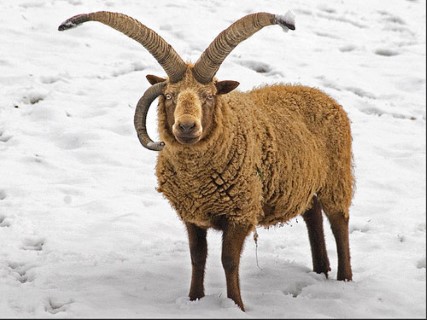
|
Manx Loaghtan sheep, indigenous to the Isle of Man off the coast of Great Britain, belong to the Northern Short-tailed group, sharing similarities with breeds like the Hebridean but slightly larger in size. Their distinctive wool is characterized by a rich chocolate brown hue with paler tips, reflecting their unique heritage and natural coloring. These sheep are direct descendants of primitive breeds once prevalent throughout Scotland and the coa
...
|
|
 Marrana Marrana
|
|

|
The Marrana sheep, esteemed for their succulent meat and distinctive wool, epitomize the rugged charm of the Ligurian Alps in Italy. Embraced by the rolling hills and pristine landscapes of this picturesque region, Marrana sheep stand as a testament to the rich tapestry of Italian pastoral heritage.
Draped in a resplendent coat of yellow or light brown wool, Marrana sheep exude an aura of rustic elegance, their fleece mirroring the gol
...
|
|
 Marwari Marwari
|
|
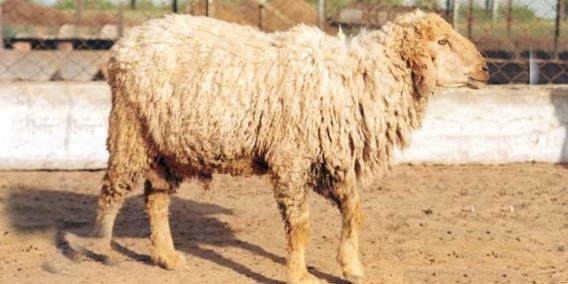
|
Marwari sheep, native to the Marwad region of India, are a distinctive breed known for their unique characteristics and adaptation to the arid climate of Rajasthan. Resembling the black-headed Persian sheep, Marwari sheep exhibit differences in size and fleece quality, distinguishing them as a separate breed.
These sheep are primarily found in various districts of Rajasthan, including Jodhpur, Jalore, Nagaur, Pali, and Barmer, and their dist
...
|
|
 Masham Masham
|
|
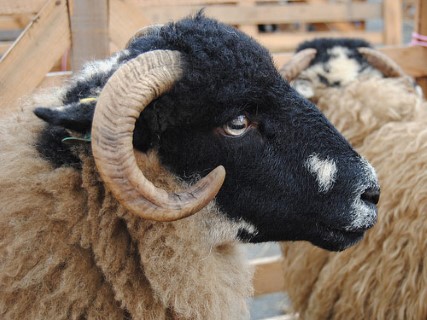
|
Masham sheep have been bred for over a century on the hill
farms in the Northern Counties of England. They are produced by crossing a
Teeswater ram onto either a Dalesbred or Swaledale ewe, both hardy hill breeds.
It is from these parent breeds that the Masham gains its hardiness, longevity,
heavy milking qualities, strong mothering instincts and high prolificacy.
Masham ewes are medium-sized and hornless. They have a good
r
...
|
|
 Massese Massese
|
|

|
Massese sheep, originating from the Versilia region in north-western Toscana, central Italy, are a versatile breed raised for their valuable contributions to carpet wool, milk, and meat production. Belonging to the Apennine group, Massese sheep share similarities with Garfagnina sheep, another breed from the region.
These medium-sized sheep are known for their distinctive characteristics. They typically have grey or brown wool with a d
...
|
|
 Matesina Matesina
|
|

|
The Matesina sheep, a treasured heritage breed originating from the sun-kissed province of Caserta in Campania, southern Italy, proudly trace their lineage to the esteemed Gentile di Puglia and Appenninica sheep. Nestled amidst the picturesque landscapes of the region, these indigenous sheep epitomize the enduring agricultural traditions of southern Italy.
Characterized by their medium size, with males standing at 65 cm and females at
...
|
|
 Meatlinc Meatlinc
|
|
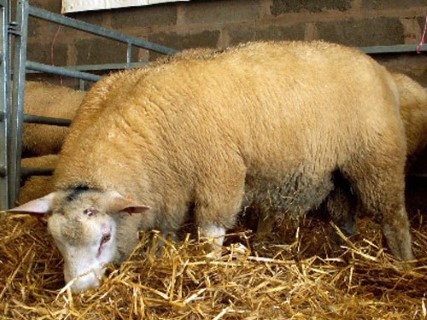
|
Meatlinc Sheep, a distinguished British breed falling into the terminal sire category, emerged from a meticulous breeding program initiated by Henry Fell in 1963. The breed's foundation was laid upon a careful selection process, initially comprising individuals from five distinct breeds—two British and three French. Over the years, this program evolved through rigorous performance recording conducted under stringent commercial conditions, resulti
...
|
|
 Meatmaster Meatmaster
|
|
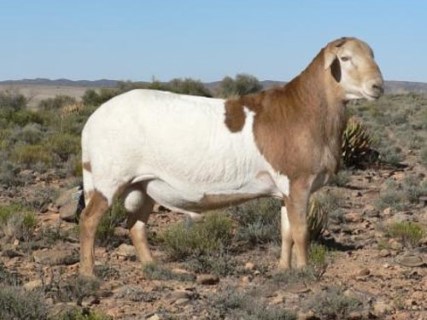
|
The Meatmaster breed of sheep originated in South Africa in the early 1990s through a deliberate crossbreeding program. Farmers aimed to combine the advantages of indigenous fat-tailed hair breeds with those of well-muscled British and European breeds, creating a composite breed with superior meat qualities. Various fat-tailed breeds were crossed with well-muscled breeds to achieve this goal.
Meatmaster sheep are selected based solely
...
|
|
 Mehraban Mehraban
|
|
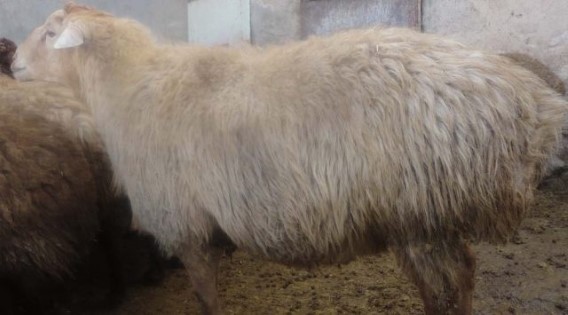
|
Mehraban sheep, originating from the western province of Hamadan in Iran, hold a significant presence in the region as the predominant breed. Primarily raised for meat production, with an estimated population of around 3 million heads, Mehraban sheep are renowned for several key attributes.
One of the notable characteristics of Mehraban sheep is their exceptional reproductive performance. They are known for their high fertility rates a
...
|
|
 Merinizzata Italiana Merinizzata Italiana
|
|

|
Merinizzata Italiana sheep represent a captivating and recently cultivated breed, arising from a deliberate breeding program that sought to combine the desirable traits of several distinct lineages. The foundation of this breed involved the strategic interbreeding of Italian Merinos, Gentile di Puglia, and Sopravissana with renowned European Merino varieties such as Ile de France, Berichonne du Cher, and Merinolandschaf.
This meticulou
...
|
|
 Merino Merino
|
|
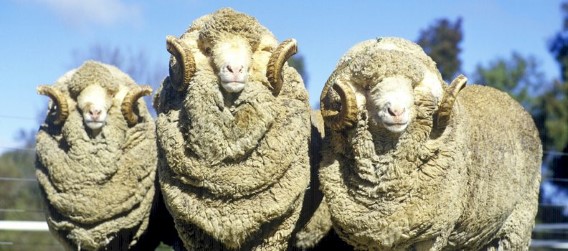
|
Merino Sheep are one of the most popular breeds of
sheep worldwide. Merino Sheep are raised predominately for wool production.
Their wool is prized for being very soft and comfortable against the skin. Merino
Sheep originated in Spain, but the modern Merino was domesticated in Australia.
Merino Sheep are excellent foragers and very adaptable. Merino
Sheep need to be shorn at least once a year because their wool does not stop
growing
...
|
|
 Merino Merino
|
|
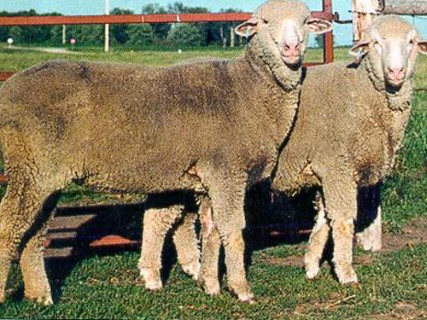
|
A number of sheep breeding nations, including Phoenicia,
Italy, and Spain, are believed to have played a part in the development of the
Merino sheep. However, it is generally agreed upon that the Moors, who
dominated Spain through the eighth to thirteenth centuries, were primarily
responsible for selectively breeding the animals to such an extent that the
wool they produced became superior to that of all other sheep.
Indeed, the word
...
|
|
 Merino Landschaf Merino Landschaf
|
|

|
Merino Landschaf, also referred to as Wurttemberger sheep, represents a prominent German variety within the Merino lineage. Comprising approximately 30% of the overall sheep population in Germany, they hold the distinction of being the predominant commercial breed in the country. Their lineage traces back to the Merino sheep introduced to Saxony in 1765, marking the inception of a breed known for its significant economic contributions to the Germ
...
|
|
 Mirror Mirror
|
|
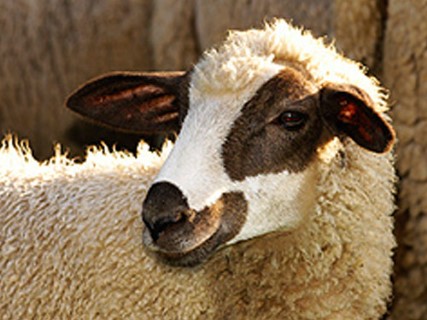
|
Mirror Sheep, medium-sized and visually striking, are distinguished by their unique head design. Despite their predominantly white coat, they feature distinctive black markings around the eyes, on the ear points, and at the nostrils, giving them a striking appearance reminiscent of a mirrored pattern.
These sheep trace their lineage back to ancient Bundner sheep breeds such as the Prattigauer sheep, with potential influences from other
...
|
|
 Mohaka Feral Mohaka Feral
|
|

|
The Mohaka feral sheep flock is just one of
several of Merino type known to have occurred at various times in Hawkes Bay,
New Zealand. They evolved around the Mohaka River area behind the historic
Tutira sheep station.
Mohaka Sheep are probably of considerable age - feral
Merinos were described from this area as early as the 1880s and Merinos were no
longer being farmed there to any extent by 1900.
In 1976, scientist T
...
|
|
 Montadale Montadale
|
|

|
Montadale sheep stand as a testament to the innovative vision of E.H. Mattingly, a prominent figure in the American sheep industry renowned for his foresight in breeding practices. Developed in the United States through a strategic crossing of Cheviot and Columbia sheep, the Montadale breed embodies a fusion of desirable traits from both lineages.
Mattingly's pioneering efforts aimed to amalgamate the robust size and distinctive appear
...
|
|
 Morada Nova Morada Nova
|
|
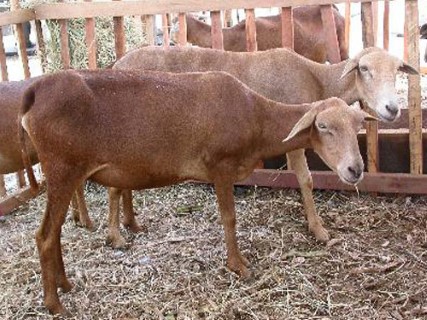
|
Morada Nova sheep, primarily found in northeast Brazil, likely have African origins and may also have genetic ties to the Portuguese Bordaleiro breed. These sheep are believed to have descended from selected individuals of the Brazilian Woolless breed, contributing to their unique characteristics.
One notable trait of Morada Nova sheep is their polled nature, with both males and females lacking horns. Rams of this breed typically do no
...
|
|
 Mouflon Mouflon
|
|
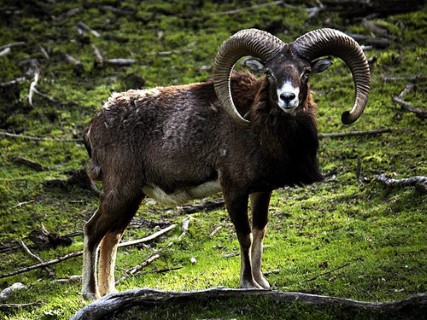
|
The Mouflon is considered one of the two ancestors of all modern sheep breeds. It typically has a red-brown coat with a dark back-stripe, light-colored saddle patch, and underparts. Males of the species are usually horned, while females can be horned or polled.
Though now rare, the Mouflon has been successfully introduced into central Europe, including countries such as Germany, Austria, Czech Republic, Slovak Republic, and Romania.
|
|
 Najdi Najdi
|
|
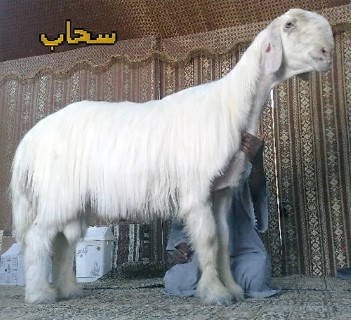
|
Najdi sheep are native to the Najd region
of the Arabian Peninsula, from where it got their name. They are raised
primarily in Saudi Arabia, but they are also present in Oman, Kuwait and
Jordan. They are highly priced in their native area. And some top Najdi ewes
can sell for around US$5,300-8,000. And the rams which can sire many more
offspring can fetch hundreds of thousands. Najdi sheep are very important
animals in their native area, an
...
|
|
 Navajo-Churro Navajo-Churro
|
|
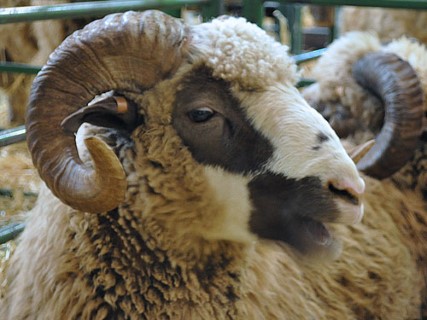
|
Navajo-Churro sheep, recognized as the first domesticated sheep introduced to North America, have a rich history intertwined with the cultures of Southern Spain and the indigenous peoples of the American Southwest. Brought from Southern Spain in 1514, Churro sheep quickly became integral to Spanish ranches and settlements along the Rio Grande.
Indigenous peoples acquired flocks of Churro sheep through various means, including raids and
...
|
|
 Nelson South Wales Mountain Nelson South Wales Mountain
|
|

|
The Nelson South Wales Mountain Sheep shares a striking resemblance with other Welsh Mountain breeds, characterized by their hardy and resilient nature. However, there are notable distinctions that set them apart.
One prominent feature is their larger size compared to other Welsh Mountain varieties. Additionally, these sheep typically exhibit tan markings on their face and legs, along with a distinctive brown collar, adding a touch of
...
|
|
 Nera di Arbus Nera di Arbus
|
|

|
The Nera di Arbus, or Pecora Nera di Arbus ("black sheep of Arbus"), sheep are a distinctive medium-small breed originating from the southwestern coast of Sardinia, Italy, specifically from the town of Arbus. This unique breed is primarily found in the provinces of Cagliari, Nuoro, Oristano, and Sassari, where it has established itself as a cherished part of the local agricultural landscape.
Distinguished by their striking black hair,
...
|
|
 New Mexico Dahl New Mexico Dahl
|
|
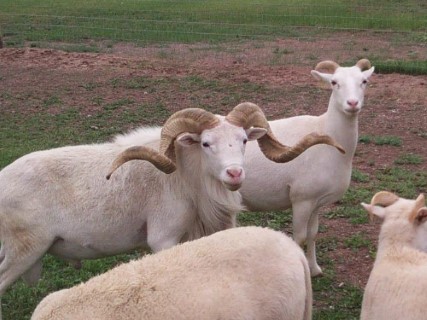
|
New Mexico Dahl Sheep are an almost
extinct Spanish Colonial heritage hair sheep breed under development at Terra
Patre Wildlife Preserve and Teaching Farm in Colorado and New Mexico. The goal
in developing these unique sheep was to produce a truly multi-marketable,
low-maintenance product. These hardy, no-shear sheep are beautiful and majestic
with the rams supporting magnificent horns. They are also very excellent
sources of lean, less mu
...
|
|
 New Zealand Halfbred New Zealand Halfbred
|
|
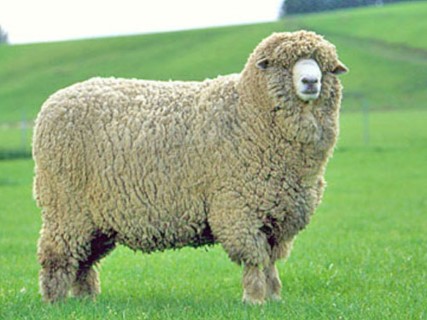
|
New Zealand Halfbred sheep represent a registered breed that emerged in the 19th century through a strategic crossbreeding program. The breed was developed by crossing one of the English longwool breeds, such as Lincoln, English Leicester, or Romney, with the Merino breed.
These sheep are primarily raised in the foothills of the South Island high country in New Zealand, where they have adapted well to the local environmental conditions
...
|
|
 Nolana Nolana
|
|
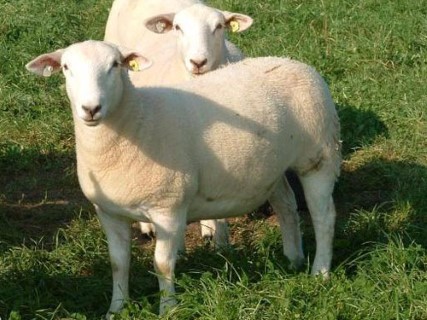
|
The Nolana sheep breed is specifically bred to combine the favorable traits of hair sheep with those of native wool sheep. Nolana sheep are classified as hair sheep, meaning they do not produce traditional wool but instead have a smooth coat during summer months. However, during winter, they develop a thick pelt measuring approximately 4-5 cm (1.6-1.8 inches) in thickness, which they naturally shed in spring. As a result, Nolana sheep do not requ
...
|
|
 Norfolk Horn Norfolk Horn
|
|
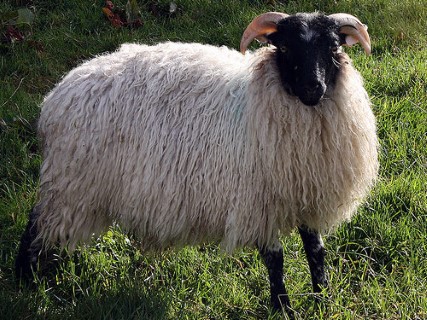
|
Norfolk Horn sheep, hailing from the Norfolk, Suffolk, and Cambridge regions of England, are among the ancient Heath breeds that are experiencing a resurgence in small populations. Historically, Norfolk Horn sheep played a significant role in the development of other breeds, including the renowned Suffolk sheep, alongside Southdown sheep.
These medium-sized sheep are characterized by their long body and legs, which contribute to their
...
|
|
 North Country Cheviot North Country Cheviot
|
|

|
North Country Cheviot (NCC) Sheep are a big, long rugged, white
sheep which combines thriftiness and healthiness with prolificacy and strong
maternal qualities. The largest of all the UK hill breeds, it is particularly
suited to grassy hills and uplands. Average mature ewe weighs 55-65kg hill,
75-90kg upland, rams 75-85kg hill, 95-100kg upland.
Content and Photo Source: National Sheep Association.
|
|
 North of England Mule North of England Mule
|
|
hudson8web.jpg)
|
The North of England Mule Sheep, affectionately known as 'The Original Mule', stands as a cornerstone of British lowland farming, revered for its exceptional qualities and unmatched versatility. Renowned across the pastoral landscapes of Britain, this esteemed breed has rightfully earned its place as the most popular lowland ewe in the country.
Bearing testament to its esteemed reputation, the North of England Mule excels in crossbreed
...
|
|
 North Ronaldsay North Ronaldsay
|
|
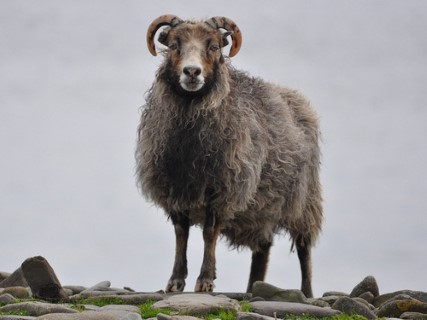
|
North Ronaldsay sheep, a small and rare breed belonging to the Northern short-tailed group, are characterized by their unique diet and adaptation to a specialized seashore environment on their native island. These sheep have remained virtually unchanged over time, preserving their primitive and fine-boned characteristics.
One of the most distinctive features of North Ronaldsay sheep is their diet, which primarily consists of seaweed. T
...
|
|
 Nostrana Nostrana
|
|

|
The Nostrana sheep, an indigenous Italian breed with roots tracing back to the majestic Apennine Group, embodies the rich agricultural heritage of the provinces of Massa-Carrara in Tuscany and Parma in Emilia-Romagna.
Medium-sized and adorned in pristine white wool, Nostrana sheep grace the rolling hills and verdant pastures of their native landscape with an air of timeless elegance. With males standing at around 65 cm and females at 6
...
|
|
 Noticiana Noticiana
|
|

|
Noticiana sheep are predominantly recognized by their white coat, accented by a distinctive thin red-brick colored light head. Primarily bred for milk production, these autochthonous Sicilian sheep trace their origins back to the Comisana sheep breed.
Known for their resilience and adaptability, Noticiana sheep thrive in harsh environments, showcasing their rustic and frugal characteristics. Their ability to withstand challenging condi
...
|
|
 Old Norwegian Old Norwegian
|
|

|
Old Norwegian
Sheep are a small primitive type of sheep which inhabited Norway and the rest
of Scandinavia as well, including Iceland and Faeroes. They are small framed,
with good legs and a fleece varying in color from almost white to greyish, dark
brown, badger-faced, muflon pattern and black.
Adult males weigh
on average 43 kg (95 lbs) and females 32 kg (70 lbs). The fleece is remarkably
fine and in contrast to the mouflon, the in
...
|
|
 Omahaki Omahaki
|
|

|
In 1976, Omahaki feral sheep were reported to be found
around the confluence of the Ngaruroro and the Taruarau Rivers, in the Eastern
Ruahine State Forest, and on the Big Hill and Omahaki stations, New Zealand.
There appeared to be several hundred sheep spread over an area of some 7000
hectares of scrubland, screes and bluffs.
Scientist Tony Whitaker noted that the origin of this flock
was uncertain but it was known to have existe
...
|
|
 Ossimi Ossimi
|
|

|
Ossimi sheep, originating from the Ossim village in the Giza Governorate of Egypt, hold a prominent position among the Nile and Delta sheep breeds, renowned for their adaptability and widespread popularity. These sheep are believed to be expanding their range, potentially displacing other breeds in the process.
Adapted to variable conditions, Ossimi sheep are commonly raised under intensive cropping systems. They are characterized as m
...
|
|
 Ouessant Ouessant
|
|
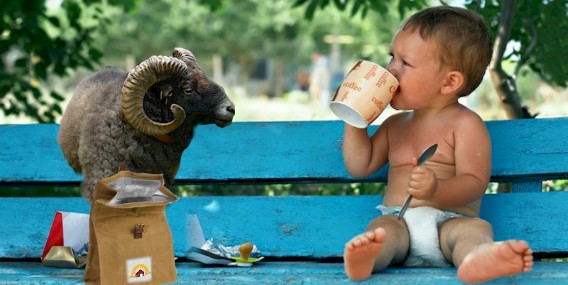
|
Ouessant (also known Ushant, Breton Island Dwarf, and Mouton
d Ouessant) sheep are a Northern European short-tailed sheep breeds and are one
of the smallest sheep in the world. They originated on Ile d Ouessant, a small
island off the coast of Brittany, France. The average body height of the mature
ewes is around 18 inches at the shoulder. And the mature rams stand around 19
inches tall at the shoulder. Most of them are dark brown o
...
|
|
 Oxford Oxford
|
|

|
Oxford, also known as Oxford Down, Sheep are recognized as the largest and heaviest of the Down breeds. Renowned for their fast growth and early maturity, they are highly valued as crossing rams, particularly for early lambing flocks aiming to capitalize on favorable market prices.
These sheep are known for their ability to produce light carcasses in early lambing systems, allowing producers to access markets when prices are at their p
...
|
|
 Pagliarola Pagliarola
|
|

|
Pagliarola sheep, native to the regions of Abruzzo, Molise, and Campania in Italy, are renowned for their adaptability and versatile utility in agricultural settings. These medium-sized sheep play a crucial role in the agricultural landscapes of their native regions, where they are valued for their contributions to meat, milk, and wool production.
Characterized by their distinctive physical features, Pagliarola sheep typically exhibit
...
|
|
 Painted Desert Painted Desert
|
|
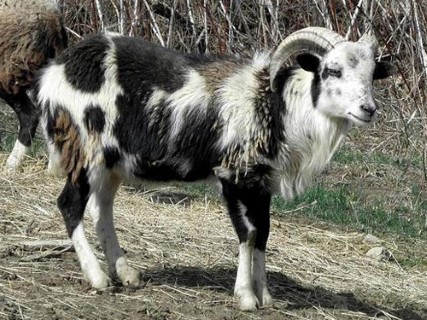
|
Painted Desert Sheep are
spotted hair sheep that receive most of their influence from Mouflon sheep.
Before being established as a separate breed, they were considered by many to
be a parti-colored Corsican. Other early influence came from Merino and Rambouillet
sheep, and a few four-horned individuals stem from Jacob or Churro ancestry.
Long desired by hunters because of the large horns and aesthetic, flashy looks,
the Painted Desert is no
...
|
|
 Panama Panama
|
|
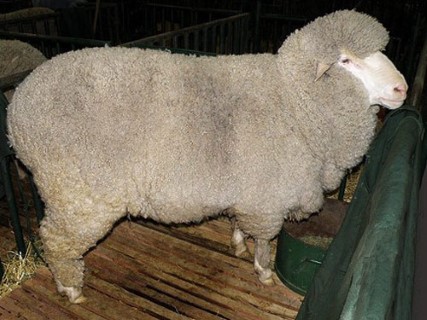
|
Panama sheep are a notable breed developed in the United States during the early 1900s, originating in Idaho. They are recognized as one of only two sheep breeds in the country developed by private sheep breeders. The breed's development began with a cross between Rambouillet rams and Lincoln ewes, which was conducted over approximately five years. Following this initial crossbreeding phase, subsequent matings between Panama rams and ewes were ca
...
|
|
 Pecora Pomarancina Pecora Pomarancina
|
|

|
The Pecora Pomarancina sheep, characterized by its medium size and distinctive white fleece, is believed to have evolved from the Appenninica sheep lineage. This breed is primarily found in the picturesque regions of Tuscany and Siena, nestled in the heart of Italy.
Renowned for its high-quality milk, Pecora Pomarancina sheep contribute to the dairy industry with their milk boasting a commendable fat content ranging between 6% to 7%. T
...
|
|
 Pedi Pedi
|
|
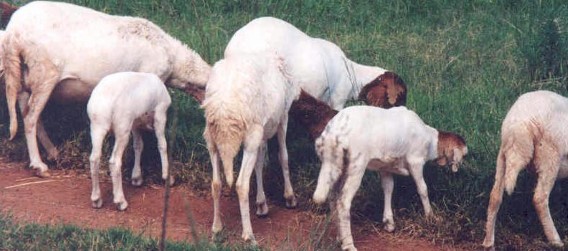
|
Pedi sheep, indigenous to South Africa, are an integral part of the rich agricultural heritage of the region. Belonging to the Nguni type, along with the Zulu and Swazi breeds, Pedi sheep have been a presence in the area for centuries, dating back to the period between 200 to 400 AD. These sheep derive their name and distinctive characteristics from their primary association with the Bapedi people, who traditionally inhabit the northern regions o
...
|
|
 Pelibuey Pelibuey
|
|
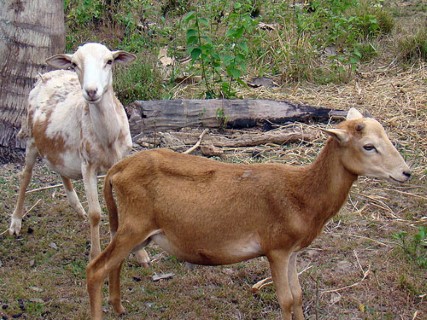
|
Pelibuey sheep, known for their distinctive hair rather than wool, are believed to share close ancestry with the West African, Red African, African, or Africana breeds found in Colombia and Venezuela. These sheep trace their lineage back to the West African Dwarf breed and are primarily distributed in regions such as Cuba, the coastal areas of Mexico, and various Caribbean locales. Impressively, Pelibuey sheep constitute a significant portion, ap
...
|
|
 Perendale Perendale
|
|
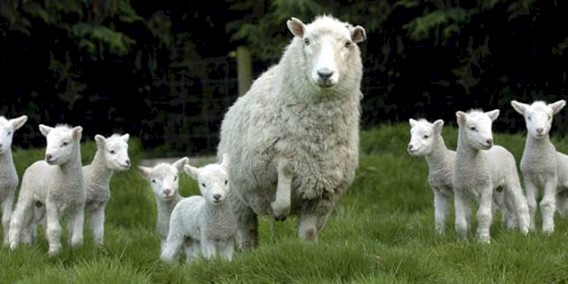
|
Perendale sheep, a breed developed in New Zealand during the 1950s at Massey University, emerged as a response to the specific needs of hill country farmers in developing regions. Since its inception, the Perendale has remained a cornerstone of New Zealand's agricultural landscape, renowned for its adaptability, productivity, and resilience in diverse environmental conditions.
The Perendale breed was meticulously crafted through a stra
...
|
|
 Pinzirita Pinzirita
|
|

|
Pinzirita sheep are a breed primarily found in the region surrounding Sicily in southern Italy. They are classified as a coarse-wool breed and are typically raised for both milk and meat production purposes.
Characteristic features of Pinzirita sheep include black or brown markings on the face and legs. Additionally, males of this breed are known to possess horns, while females are generally polled, meaning they do not have horns.
|
|
 Pitt Island Pitt Island
|
|

|
The feral flock of sheep on Pitt Island in the Chatham group of New Zealand, which existed in the nineteen-seventies, likely originated from Saxony Merinos that were initially introduced to South-East Island, another island in the Chatham group, in 1841. Later, these sheep were transferred to Pitt Island, where they formed a feral population that thrived for almost a century.
In 1981, recognizing the significance of this unique populat
...
|
|
 Plezzana Plezzana
|
|

|
Plezzana sheep (also
known as Bovska sheep in Slovenia) descend from Zaupel sheep, which were spread
all over Europe during the middle ages. They are medium-small sheep (males: 64 cm, females: 60 cm, at the withers). They are multi-purpose sheep. The milk is
used for cheese production. The mixed wool is used for the production of loden,
felt, and tweed. They are medium framed, thin-legged and finely boned sheep.
They have a narrow head and a
...
|
|
 Polish Merino Polish Merino
|
|
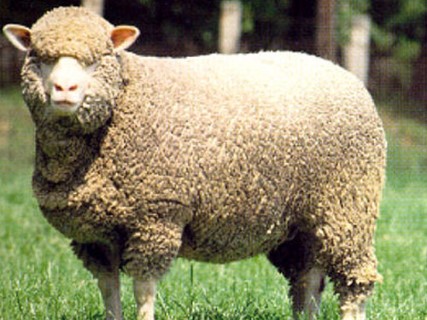
|
Merino sheep made their debut in Poland in 1786, with the first introduction from Spain. Subsequently, in the early 19th century, Electoral Merinos were imported, adding to the genetic diversity of the breed. By 1860, Poland saw the arrival of Merinos of the Rambouillet and Precoce types, further enriching the sheep population.
During this period, efforts were initiated to develop a dual-purpose type of sheep in Poland, focusing on bot
...
|
|
 Polish Mountain Polish Mountain
|
|
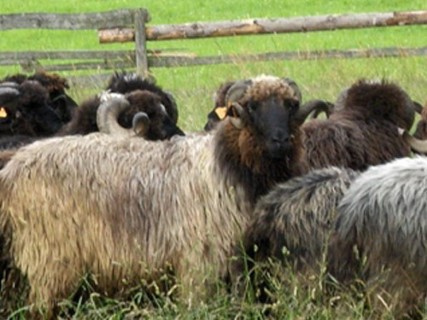
|
Polish Mountain Sheep evolved from the old Carpathian
Cakiel, and especially one of its varieties - the primitive Podhale sheep. They
can be found in the whole Polish part of the Carpathian mountains; however, they
are most frequently found in the Podhale region near the town of Nowy Sacz,
where the breed traditionally originates. They have a light build, thin but
strong legs, and narrow rump.
Polish Mountain sheep are milked
...
|
|
 Poll Dorsets Poll Dorsets
|
|
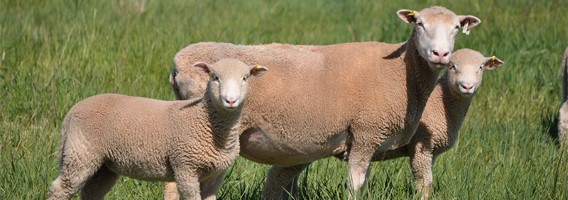
|
Poll Dorsets are short wool, meat producing
sheep that were developed in Australia between 1937 and 1954 with the aim of
breeding a true Dorset type sheep without horns. They were developed at a
property called Valmore in Whitemore, Tasmania, a noted center for pedigree
livestock stud farms. Poll Dorset resulted from the introduction of Corriedale
and Ryeland blood into the Dorset Horn.
Their main distinguishing features are its
...
|
|
 Polled Dorset Polled Dorset
|
|
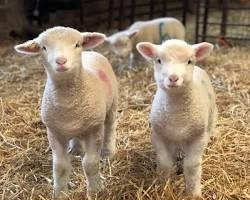
|
Polled Dorset is a breed of sheep developed for meat at the
North Carolina State University Small Ruminant Unit in 1956. Their name refers
to the fact that they area hornless variation of the Horned Dorset sheep. Polled
Dorsets are the result of a genetic mutation by which some of the offspring of
a certain ram grew no horns. After some years of breeding work, a strain of
Dorset was developed which had lost the characteristic horns and which
...
|
|
 Polwarth Polwarth
|
|
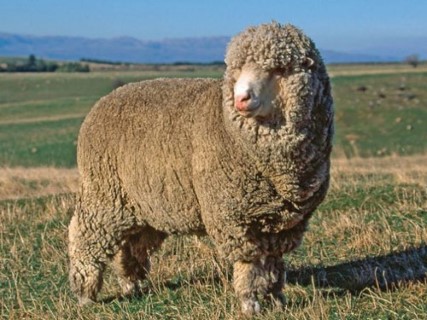
|
Polwarth sheep, a testament to the ingenuity and foresight of Australian sheep breeders, emerged onto the pastoral stage in Victoria in the year 1880. Developed as a dual-purpose breed, they embody a harmonious blend of Merino and Lincoln ancestry, with a genetic composition consisting of 75 percent Merino heritage and 25 percent Lincoln lineage.
Thriving amidst the fertile landscapes of Victoria, Polwarths have proven themselves to be
...
|
|
 Polypay Polypay
|
|
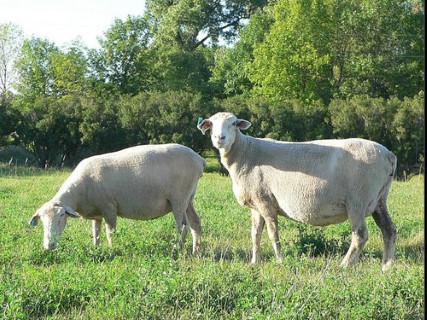
|
Polypay are synthetic sheep, developed in the 1970s at the
U.S. Sheep Experiment Station in Dubois, Idaho, and Nicholas Farms at Sonoma,
California. Targhee x Dorset and Rambouillet x Finnsheep crosses were mated to
form a 4-breed composite that could produce two lamb crops and one wool crop
per year.
Polypays are a medium-sized, prolific breed with an extended
breeding season. Good mothers and milkers, they produce lambs with accepta
...
|
|
 Pomeranian Coarsewool Pomeranian Coarsewool
|
|
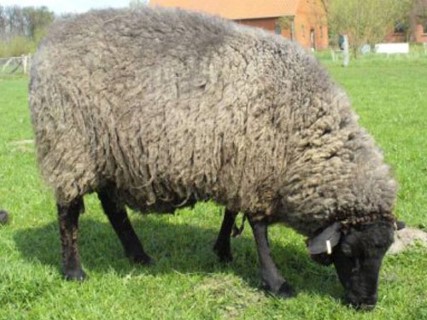
|
Pomeranian Coarsewool Sheep, also
known as just Pomereranian, or Pommersches Rauhwollschaf; Pommernschaf; or Rauhwolliges
Pommersches Landschaf) is an old domestic sheep breed from the Pomerania region
(split between Germany and Poland). The first records of similar sheep in
Pomerania can be traced to more than 3000 years ago. They are raised primarily
for meat and vegetation management.
Pomeranian Coarsewool Sheep are
polled (ho
...
|
|
 Portland Portland
|
|

|
The Portland sheep, hailing from the heathlands of the Dorset region in the UK, distinguishes itself as a member of the esteemed tan-faced group of breeds native to the South West. Contrary to its namesakes in Oregon or Maine, this diminutive yet hardy breed is deeply rooted in the pastoral landscapes of rural England.
Characterized by its modest size, the Portland sheep embodies resilience and adaptability to the rugged terrain of its
...
|
|
 Priangan Priangan
|
|
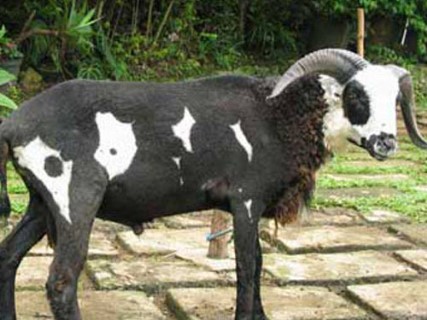
|
Priangan Sheep are from Priangan(a mountainous region in West Java province on the island of
Java in Indonesia). They are raised for meat and sport fighting.
Priangan rams are selected for size, horn size, and for
fighting ability. The champion rams are highly priced and may fetch up to
300,000 rupiah ( US $722 ). However, they are not used for breeding during
their fighting career as it is feared that mating would deprive them of their
t
...
|
|
 Pusterese Pusterese
|
|

|
The Pusterese sheep, known by various names including Pustera Gigante, Nobile di Badia, Gadertaler, Tedesca di Pusteria, Sextner, Tauferer, or Aurina, hail from the picturesque region of Tyrol, Italy. With their distinctive white-straw yellow coat, they exude an aura of rustic elegance that is characteristic of the Alpine landscapes they call home.
Neither gender of the Pusterese sheep sports horns, adding to their gentle and docile de
...
|
|
 Quadrella Quadrella
|
|

|
Quadrella sheep are a breed primarily raised for both meat and milk production, primarily located in the region surrounding Campania in southern Italy. Originating as a variety of Gentile di Puglia, they have since developed their own distinct characteristics and are recognized as a separate breed.
These sheep typically have a white coat, which is a common trait among the breed. However, it's worth noting that both horned and naturally
...
|
|
 Rabo Largo Rabo Largo
|
|
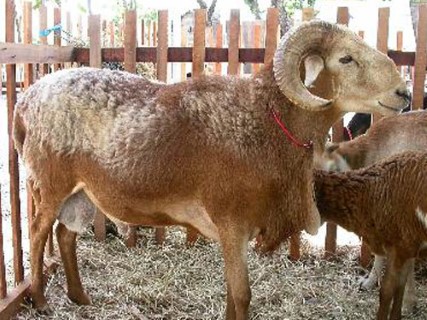
|
The Rabo Largo sheep, aptly named for their distinctive broad tails, are native to northeastern Brazil. Originating from fat-tailed hair breeds introduced from Africa, they were subsequently crossed with the native Crioulo sheep, resulting in the development of the Rabo Largo breed.
These sheep exhibit a range of colorations, including white, pied, or white with a colored head, adding to the visual diversity within the breed. Notably,
...
|
|
 Racka Racka
|
|
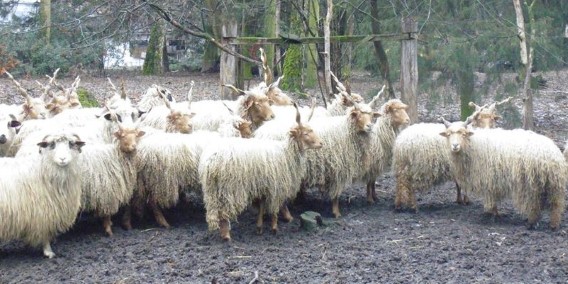
|
Racka sheep are a distinctive breed of Zackel type, originating from Hungary. One of their most striking features is their long, spiral-shaped horns, which are present in both ewes and rams. These unique cork-screw horns protrude almost vertically from the top of the head, with mature males often boasting horns measuring two feet or more, while the minimum standard length is around 50 cm (20 inches) for rams and 30 cm (12-15 inches) for ewes.
|
|
 Raglan Romney Raglan Romney
|
|

|
The Raglan Romney feral sheep were sourced from a bush-
and scrub-covered peninsula jutting into the eastern side of Raglan Harbor in
the Waikato, New Zealand.
The first group of two rams and four ewes was mustered in
April 1976; eight ewes were added in December of that same year. (The peninsula
was subsequently cleared of bush - and sheep - and broken in for farming.)
The descendants of this small flock remained in the
...
|
|
 Rahmany Rahmany
|
|
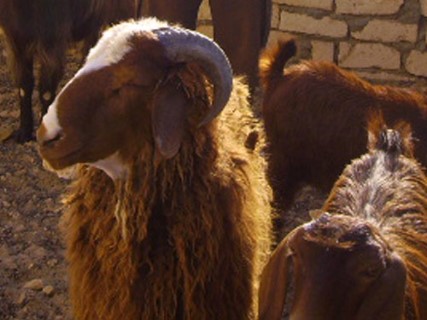
|
Rahmany, or Rahmani, sheep have their origins in northern Syria and northern Turkey, and they were brought into Egypt during the 9th century. The breed derives its name from Rahmania, a village located in the Beheira Governorate of Egypt.
These sheep are noted for their believed resistance to internal parasites and their ability to breed throughout the year, with a relatively high rate of twinning. Among the Egyptian sheep breeds, Rahm
...
|
|
 Rambouillet Rambouillet
|
|

|
Rambouillet are
considered the backbone of the American Sheep Industry, forming the foundation
of most western range flocks and raised throughout the United States.
Rambouillet sheep descend entirely from the Spanish Merino. In fact, they are
the French version of the Merino developed when Louis XVI imported 386 Spanish
Merinos in 1786 for his estate at Rambouillet.
Though named for
the town in France, the breed owes much o
...
|
|
 Red Engadine Red Engadine
|
|
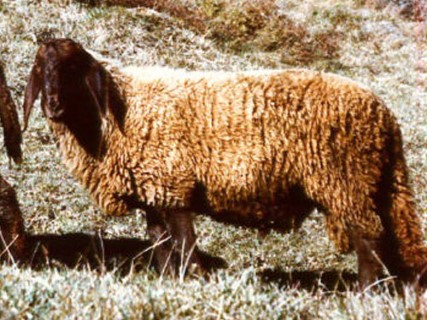
|
Red Engadine sheep originated in Switzerland in Lower
Engadin and in the bordering Tirolian and Bavarian valleys. They originate from
local varieties, from the Stone Sheep, and the Bergamask sheep. They are medium
to large framed and are distinguished by their ram nose and their long, hanging
ears.
They have a dark-brown body and a red-brown, medium to
coarse wool which with increasing age becomes lighter. They are an easy-ca
...
|
|
 Red Maasai Red Maasai
|
|
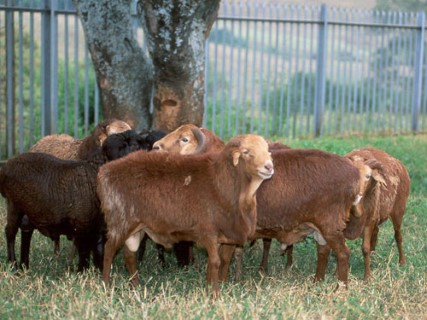
|
The Red Maasai sheep, also referred to as Red Masai, represent a distinct breed of East African origin, characterized by their unique attributes and well-suited for meat production. These sheep are primarily found across the regions of northern Tanzania, south-central Kenya, and Uganda, where they have adapted to the diverse environmental conditions prevalent in these areas.
Red Masai sheep are easily recognizable by their striking red
...
|
|
 Rhoen Rhoen
|
|
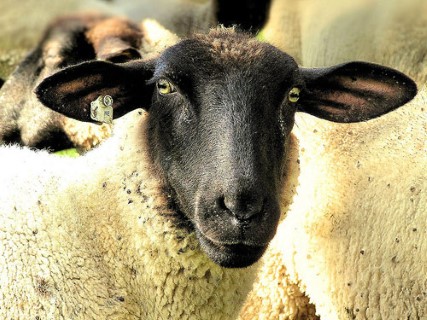
|
Rhoen sheep are one of the oldest landrace
breeds in Germany. They were mentioned in 1844 in the files of the convent of
Fulda: 'The common sheep of the Rhoen farmer is a normal German sheep with
peculiar characteristics, which even in foreign countries is known as Rhoenschaf.
It is yellow-white with a black hornless head and is clothed in coarse,
non-elastic wool, with little crimp. Its body is large, the bones are strong,
and it lends its
...
|
|
 Rideau Arcott Rideau Arcott
|
|
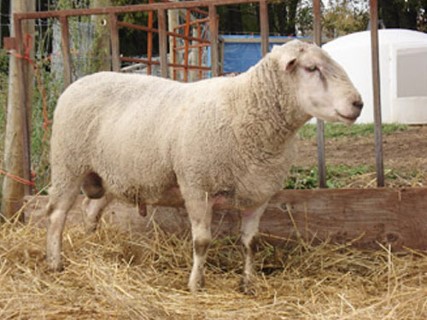
|
Rideau Arcott, or just Rideau, sheep are one of three
Canadian breeds. Their development began in 1968 at Agriculture Canadas Animal
Research Centre in Ottawa when the Centre's Suffolk, Shropshire, and Dorset
sheep were combined with imported breeds: Finnish Landrace and East Friesian.
In 1974, the Rideau was closed to the introduction of new genetic material.
From 1974 to 1977, the numbers within the breed were multiplied
with minima
...
|
|
 Romanov Romanov
|
|
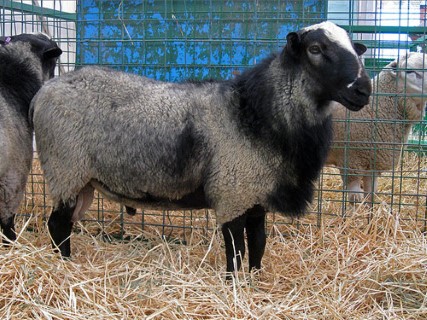
|
Romanov sheep originated in the Volga Valley, northeast of
Moscow. The name Romanov comes from the royal family of Russia. These sheep were first noticed in the 18th century, and were later imported into Germany and then France. In 1980, the Canadian government brought in 14 Romanov ewes and 4 rams for testing and put them into quarantine for 5 years. After that, some were brought to the United States.
Romanov ewes tend to lamb by the lit
...
|
|
 Romney Sheep Romney Sheep
|
|

|
Romney Sheep are a dual purpose breed, used for wool
and meat, that originated in the Romney Marshes of Kent England. They are one
of the world most successful sheep breeds.
They are large
framed and carry a heavy long woolled fleece. They have a broad white face,
sometimes with a small woolly top knot. Both sexes are hornless. Rams
average 250 lbs., ewes average 175-200 lbs. Their fleece on average their fleece
weighs 10-12lbs.<
...
|
|
 Roslag Roslag
|
|
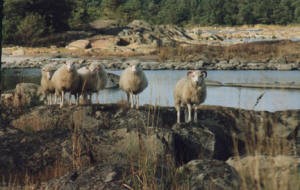
|
Roslag are an
endangered sheep from
Sweden. They originated from the remnant populations of
Swedish landrace breeds that used to be rather common all over the countryside, but are generally believed to have come from Raggaron in
Roslagen, Sweden.
They are small
and generally white or ivory colored (although 10% of the population are black
or white-black bi-colored), they are a short-tailed and are usually used in the product
...
|
|
 Rosset Rosset
|
|

|
Rosset sheep are
a transhumant (magratory) breed found in western Aosta Province, mainly in the
three tributary valleys of the Dora Baltea: Val Grisanche, Val di Rhemes, and
Val Savaranche. A small number of rosset sheep can be found with other breeds
in several valleys of rivers flowing south from Mt Fallere, and in the Val
Pelline. They are kept in small flocks of five to ten heads. They are stall-fed
during the winter at the farmsteads i
...
|
|
 Rouge de l'Ouest Rouge de l'Ouest
|
|

|
The Rouge de l'Ouest sheep, a medium-sized breed, derives its name from its distinctive head coloring, which ranges from pink to deep red. Remarkably, these sheep are hornless, and their heads are adorned with fine hair, contributing to their unique appearance. Similarly, their legs mirror the coloration of the head and are coated in fine hair, adding to their distinctive characteristics.
Renowned for their fleece, Rouge de l'Ouest she
...
|
|
 Rouge du Roussillon Rouge du Roussillon
|
|

|
Rouge du Roussillon are an endangered breed of sheep from
southern France. They are primarily raised in the French Mediterranean
countryside for lamb meat. They are of Algerian descent, and came to France in
the 18th century, and were likely introduced to France via Spain.
They are a medium fine-wool breed. The males typically weigh
75-100 kg and stand 75-90 cm tall, while the ewes normally weigh around 55-65
kg and stand 65-
...
|
|
 Rough Fell Rough Fell
|
|

|
Rough Fell Sheep are distinctive for their horned appearance, characterized by a black head adorned with impressive horns. A notable feature of this breed is the presence of a distinct white patch on their nose, which contrasts with the dark coloring of their head.
In addition to their striking facial markings, Rough Fell Sheep are recognized for their robust and substantial build. Their body is large and elongated, with a broad loin t
...
|
|
 Roussin Roussin
|
|

|
Roussin Sheep, characterized by their medium size, boast a distinctive brown face and legs, distinguishing them from other breeds. The absence of wool on their head and legs adds to their unique appearance, giving them a sleek and streamlined look.
A notable feature of Roussin Sheep is their polled nature, with both males and females lacking horns. This trait contributes to their ease of handling and reduces the risk of injuries during
...
|
|
 Royal White Royal White
|
|
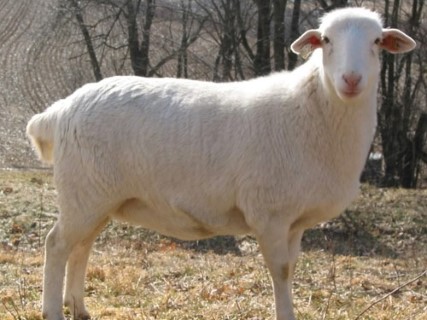
|
The Royal White sheep, a relatively new breed of hair sheep, has been privately funded and developed by William Hoag of Dorpcroix Sheep Farm in Hermeleigh, Texas. This breed is the result of a deliberate crossbreeding program involving Dorper and St. Croix sheep, aimed at combining the favorable traits of both parent breeds.
Distinguished by their pure white coloration, Royal White sheep exhibit a unique characteristic in their seasona
...
|
|
 Ruda Ruda
|
|
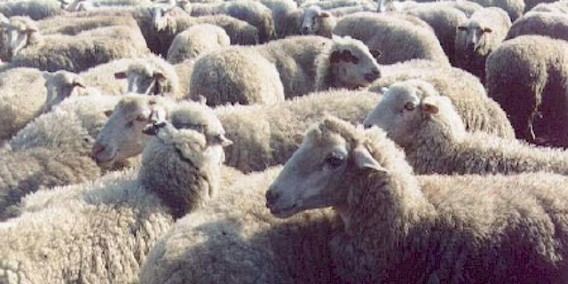
|
Ruda sheep, primarily located in Albania and Croatia, have a rich history intertwined with the cultural and agricultural landscape of the region. These sheep have faced significant challenges in recent years, particularly in Croatia, where they were designated as the most endangered breed in 2009. This classification underscored the urgency of conservation efforts to safeguard the genetic diversity and cultural heritage represented by the Ruda sh
...
|
|
 Rya Rya
|
|
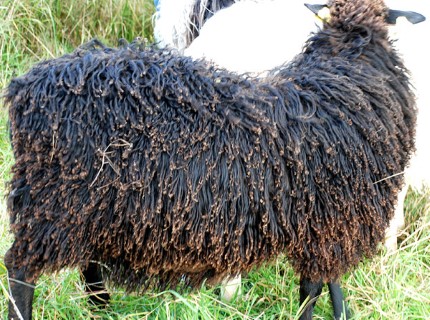
|
Rya sheep are from Sweden, they are also known as Swedish
Carpet Wool Sheep or Ryafar sheep. They originated from Norwegian, Swedish, and
Norwegian Spaelsau sheep. They were raised to produce long, wavy and shiny wool
to produce rya-wool.
Few long wool sheep breeds remained in the province of
Dalarna, leading to the restoration of this sheep breed in the early 20th
century. And there was a stable population of about 2000 Rya shee
...
|
|
 Ryeland Ryeland
|
|

|
Ryeland Sheep are known for their distinct appearance, characterized by faces adorned with ample wool and medium-sized ears that exhibit a slightly dark hue. Notably, Ryelands lack any trace of horns on their heads. Their chests are broad and moderately deep, complemented by a straight, level back that contributes to their sturdy build.
In terms of leg structure, Ryelands boast dull white-colored legs that are generously woolled up to
...
|
|
 Rygja Rygja
|
|
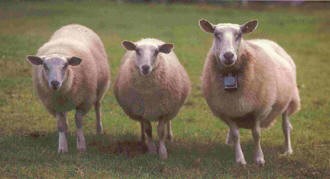
|
Rygja sheep are originally from Rogaland in south west
Norway. In the 18th century the local Norwegian Spael sheep were crossed with
several imported breeds, such as Merino, South Down, and Leicester. After 1860
mostly Cheviot and Sutherland sheep were imported and had also an influence. In
later years further crossings have been made with Texel, Finnsheep, Dala, and
Steigar sheep.
Rygja sheep are now spread throughout Norway and
...
|
|
 Saeftinger Saeftinger
|
|
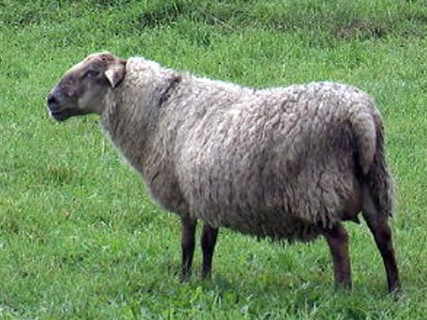
|
The Saeftinger sheep, a relatively recent addition to the agricultural landscape, emerged around 1986 through a deliberate crossbreeding program. The breed's unique genetic composition stems from the union of a Romanov ram with Suffolk ewes, resulting in a distinctive lineage that bears the imprint of both parental breeds. Reflecting its origins, the breed derives its name from the salt meadows where it roams and grazes, embodying a symbiotic rel
...
|
|
 Sakiz Sakiz
|
|
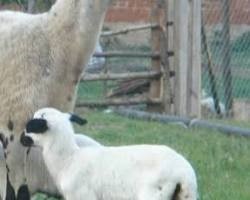
|
Sakiz sheep, prized for their carpet-grade wool, also play a significant role in meat and milk production. Indigenous to the area surrounding Izmir in Turkey, these sheep are renowned for their robust physique and adaptability to the local climate.
With their distinctive appearance, characterized by horns in males, Sakiz sheep are well-suited to the agricultural conditions of their native region. Their sturdy build and resilience make
...
|
|
 Saltasassi Saltasassi
|
|

|
Saltasassi sheep originate from northern Italy, where they are recognized for their medium-small stature, with males typically measuring 60-65 cm and females around 55 cm at the withers. These sheep are primarily bred for meat production, making them an integral part of the agricultural landscape in the region.
Known for their white wool, Saltasassi sheep contribute to the local farming economy through their role in meat production. De
...
|
|
 Sambucana Sambucana
|
|

|
Sambucana, also
known as Demontina, sheep are an indigenous Italian breed, probably descended
from Garessio sheep. They are found in southwestern Cuneo Province (Piedmont),
in the valleys of the rivers Bagni, Stura di Demonte, and, formerly, the Maira.
The elevation of the valleys is from 1.300 to 2.000 metres, with snow on the
ground four to five months of the year.
They have
yellow-white wool: about 8 percent of the breed are d
...
|
|
 Santa Cruz Santa Cruz
|
|
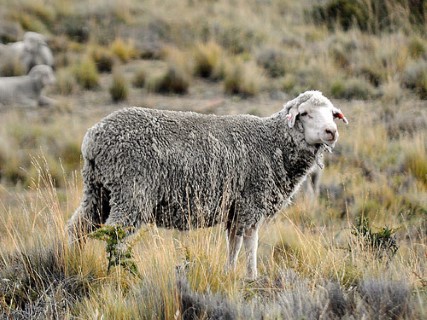
|
Santa Cruz Sheep are from Santa Cruz Island, California,
USA. There is considerable uncertainty as how and when sheep got to Santa Cruz
island. It is believed that Merino, Rambouillet, and perhaps some Churro sheep
are part of their ancestry. However, it is certain that they have been feral
for the last 70 years. The Nature Conservancy acquired 88% of the island during
the 1970's and began an eradication program in 1980.
In 1
...
|
|
 Santa Ines Santa Ines
|
|
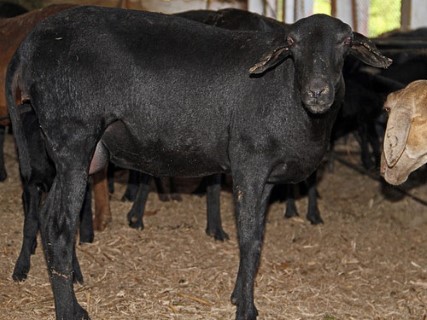
|
The Santa Inês sheep, a distinctive breed hailing from the sun-kissed landscapes of Brazil, stands as a testament to the country's rich agricultural heritage. Evolving from a blend of Morada Nova, Bergamasca, and Crioula ancestry, these resilient creatures embody the culmination of centuries of selective breeding and adaptation to the diverse Brazilian terrain.
Draped in an array of colors ranging from striking reds and blacks to prist
...
|
|
 Sardinian (Sarda) Sardinian (Sarda)
|
|

|
The Sardinian, or Sarda, sheep are native to the island of Sardinia, although they can also be found in central Italy. These sheep have adapted remarkably well to the unique environment of Sardinia, particularly thriving on the island's karst soils.
Known for their white fleece, Sardinian sheep are primarily raised for milk production. Their milk is highly valued and is a key ingredient in the production of Pecorino Sarda cheese, a ren
...
|
|
 Savoiarda Savoiarda
|
|

|
Savoiarda sheep, indigenous to the picturesque Province of Turin in Piedmont, Italy, epitomize the rugged beauty and hardiness of the local landscape. Evolved over generations to thrive in the diverse terrain encompassing plains and hills, Savoiarda sheep embody the resilience and adaptability essential for survival in this dynamic environment.
Distinctive in appearance, Savoiarda sheep are characterized by their striking coloration, w
...
|
|
 Schnalserschaf Schnalserschaf
|
|

|
Originating from the picturesque province of Bolzano in northern Italy, the Schnalserschaf sheep, also known as Ultnerschaf or Val Senales, stand as a testament to the region's rich agricultural heritage. Belonging to the esteemed Alpine meat breed category, these sheep are prized for their dual-purpose nature, excelling in both meat and wool production.
Distinguished by their striking coat colors, Schnalserschaf sheep exhibit a divers
...
|
|
 Scotch Mule Scotch Mule
|
|

|
Scotch Mule sheep are an intentionally produced crossbred
sheep out of Scottish Blackface ewes and sired by Bluefaced Leicester rams. The
term "mule" (when it refers to sheep) is used for an intentionally
produced crossbred sheep that is sired by a Bluefaced Leicester ram. In the
United Kingdom, Mule ewes are the backbone of the commercial sheep industry.
The various types of Mules are the most popular commercial ewes in the UK, and
the Blu
...
|
|
 Scottish Blackface Scottish Blackface
|
|

|
The Scottish Blackface, also known simply as Blackface, sheep are the most numerous of British breeds and can be found across a wide range of hill and marginal terrain throughout Great Britain and Ireland. These sheep are characterized by their horned appearance, with black or black and white faces and legs.
The fleece of the Scottish Blackface varies, ranging from short, fine wool used for carpets and tweeds to a stronger, coarser woo
...
|
|
 Scottish Dunface Scottish Dunface
|
|
|
The Scottish Dunface, also known as Old Scottish Short-wool, Scottish Whiteface, or Scottish Tanface, holds a significant place in the history of sheep breeds, despite its unfortunate extinction. Originating from Scotland, these sheep were part of the Northern European short-tailed sheep group and likely resembled the sheep kept throughout the British Isles during the Iron Age.
During the mid-nineteenth century, the Scottish Dunface fa
...
|
|
 Scottish Greyface Scottish Greyface
|
|
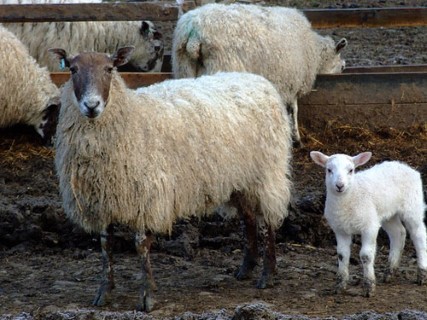
|
The Scottish Greyface sheep, a result of crossing a Border Leicester ram with a Scottish Blackface ewe, exhibits distinctive characteristics that make it a valuable breed in sheep farming.
One notable feature of the Scottish Greyface sheep is its speckled gray face, which adds to its unique appearance. Beyond their facial markings, these sheep are recognized for their well-proportioned bodies characterized by length, robustness, and ev
...
|
|
 Serrai Serrai
|
|
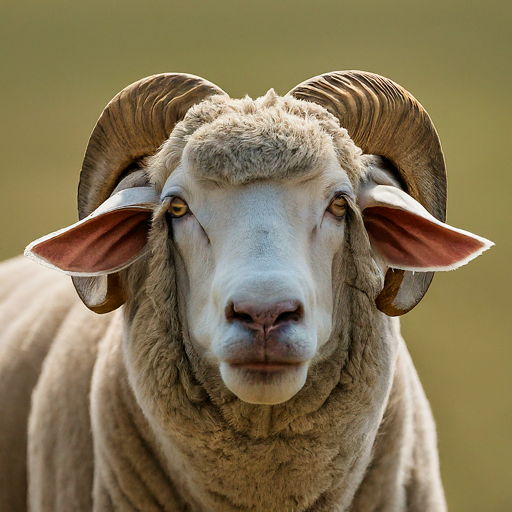
|
Hailing from the rugged landscapes of Greece, Serrai sheep stand as formidable denizens of the pastoral realm, revered for their dual prowess in both meat and milk production. With features reminiscent of ancient Roman nobility, these sheep bear a distinctive Roman nose and a slender tail, epitomizing the timeless allure of their ancestral heritage.
The rams, adorned with majestic horns that command respect, reach a mature weight of 78
...
|
|
 Shetland Shetland
|
|
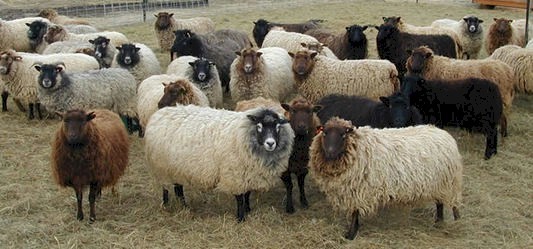
|
Shetland Sheep are one of the smallest of the British sheep.
The ewes are usually hornless, and the rams have nicely-rounded horns, not too
heavy, nor too close together. Their head is well carried, their face is of
medium length with a straight nose and bright eyes, the back is straight and of
medium length.
They originated in the Shetland Isles, but is they are now
kept in many other parts of the world. They are part of the Nor
...
|
|
 Shetland-Cheviot Shetland-Cheviot
|
|
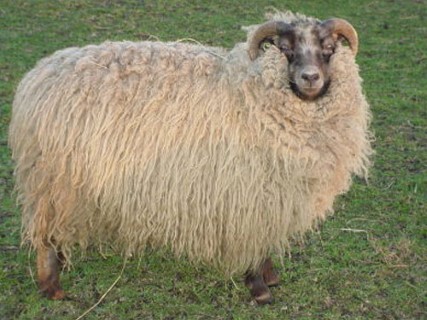
|
Shetland-Cheviot sheep are a robust and versatile breed resulting from the crossbreeding of a North Country Cheviot ram with a Shetland ewe. This intentional mix harnesses the hybrid vigor, ensuring that the Shetland-Cheviot sheep inherit desirable traits from both parent breeds. Known for their hardiness, thriftiness, and milk production, these sheep embody a combination of characteristics from the Shetland and Cheviot breeds, making them well-s
...
|
|
 Shropshire Shropshire
|
|

|
Shropshire Sheep, renowned for their medium size and robust constitution, are prized for their agility, vigilance, and well-proportioned physique. These sheep exhibit distinctive characteristics that make them a sought-after breed in agricultural settings.
A defining feature of Shropshire Sheep is their soft black face, which adds to their striking appearance. This facial coloration is complemented by a covering of wool on the poll, co
...
|
|
 Skudde Skudde
|
|
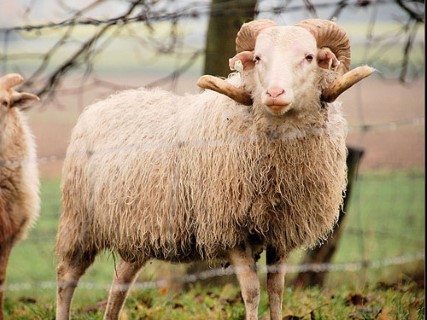
|
Skudde are nordic, short-tailed heather sheep. They originally
were from East Prussia and the Baltic States. However, today only a few small
herds can be found in these areas.
Skudde sheep have an imposing snail horn. The ewes are
hornless or carry horn stumps. In individual cases, it occurs that ewes carry
chamois-like hornlets. They are slender, rams weight between 35 and 50 kg
(77-110 lbs), and ewes weigh from 25 to 40 kg (55-
...
|
|
 Soay Soay
|
|
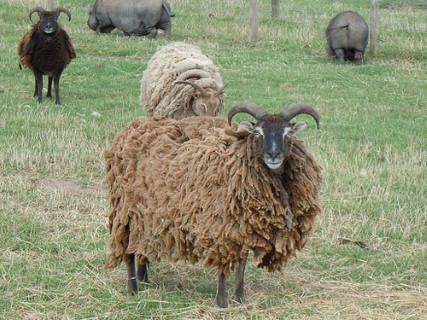
|
Soay sheep are regarded as the sole remaining representatives of the diminutive, ancient sheep that once roamed the British Isles prior to the arrival of the Norsemen and Romans.
Named after the Scottish island of Soay, these sheep were first brought to North America in 1974. They are characterized by their small stature and possess a fleece that ranges in color from light to dark brown, which they naturally shed during the summer mont
...
|
|
 Solognote Solognote
|
|
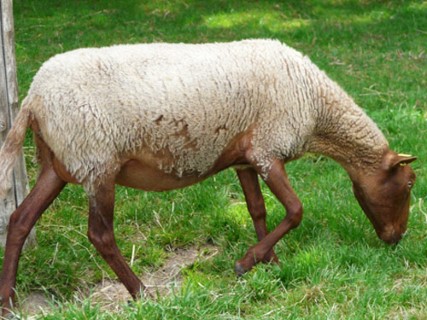
|
Solognote sheep, an ancient breed, owe their name to the region of Sologne in France, where they were meticulously developed during the 15th century.
By the 1850s, Solognote sheep had gained widespread popularity and recognition, leading to their exportation to various countries including Germany, Belgium, the Netherlands, and Morocco. Renowned for their rustic nature, Solognote sheep exhibit remarkable resilience, demonstrating a robu
...
|
|
 Somali Somali
|
|
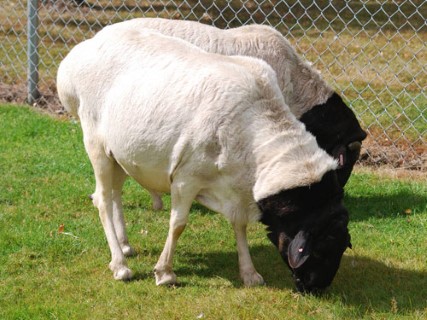
|
Somali sheep, indigenous to the Somali region in Africa, are esteemed for their resilience and suitability for meat production in diverse agricultural settings.
Characterized by their distinct appearance, Somali sheep typically boast a white fleece with a striking black head, a defining feature that sets them apart. Notably, both male and female Somali sheep are naturally polled, contributing to their streamlined and efficient manageme
...
|
|
 Sopravissana Sopravissana
|
|
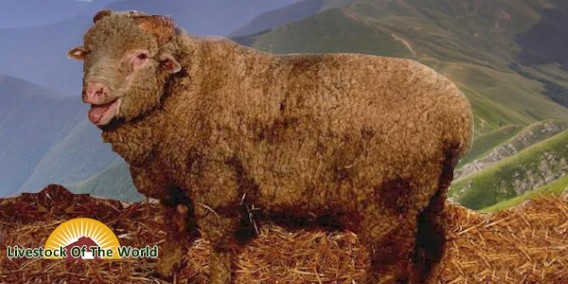
|
Sopravissana sheep, primarily located in the Central Apennines and Latium of central Italy, are renowned for their fine to medium white wool and are raised for both milk and meat production. This breed traces its origins back to the 18th and early 19th centuries when it was developed through crossbreeding of Vissana sheep with Spanish Merino and Rambouillet breeds. Further enhancements to the breed occurred during the early 20th century with the
...
|
|
 South African Meat Merino South African Meat Merino
|
|
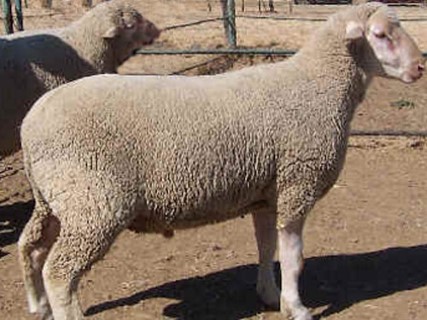
|
South African Meat Merino (SAMM) sheep were imported into
South Africa by the Department of Agriculture from 1936 to 1974 from Germany
where the Deutsche Fliesch Merino is a common meat sheep of Germany, Austria,
and Poland. In South Africa, the name was translated as Duits Vleis Merino and
then into English as German Mutton Merino. In 1974, the South African Breed
Society changed the name to the South African Mutton Merino.
When impo
...
|
|
 South African Mutton Merino South African Mutton Merino
|
|
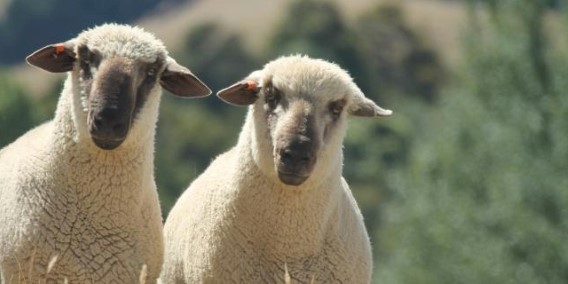
|
South African Mutton Merino (SAMM) sheep were imported into
South Africa by the Department of Agriculture from 1936 to 1974 from Germany
where the Deutsche Fliesch Merino is a common meat sheep of Germany, Austria,
and Poland. In South Africa, the name was translated as Duits Vleis Merino and
then into English as German Mutton Merino. In 1974, the South African Breed
Society changed the name to the South African Mutton Merino.
When im
...
|
|
 South Suffolk South Suffolk
|
|
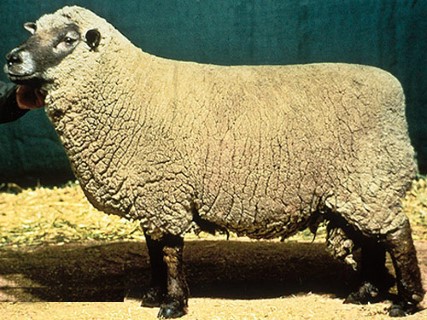
|
South Suffolk sheep are the result of a deliberate crossbreeding program between Suffolk and Southdown sheep. This fixed cross has produced a breed known for its large size and substantial meat production capabilities.
Rams of the South Suffolk breed are primarily used as terminal sires in crossbreeding programs aimed at early prime lamb production. These rams are sought after for their ability to impart desirable meat characteristics
...
|
|
 South Welsh Mountain South Welsh Mountain
|
|

|
South Welsh Mountain sheep have been reared on the harsh
hill pastures of South Wales for centuries. Their ability to thrive where
lesser breeds have failed has ensured their predominance in the area.
They are a dual purpose breed. They are similar in
appearance to other Welsh Mountain breeds, and rams are frequently used to
improve the size and conformation of the other Welsh Mountain breeds.
When crossed wit
...
|
|
 Southdown Southdown
|
|

|
Southdown Sheep are highly versatile and are valued by all types of breeders for their exceptional qualities. They are renowned for their well-fleshed, meaty build, featuring a wide, level back extending to the tail and a sturdy leg at each corner. Their dense, fine-textured wool covers their entire body down to the hocks, with small ears adorned with short wool.
One of the key attributes of Southdown Sheep is their ease of lambing, ma
...
|
|
 Spaelsau Spaelsau
|
|
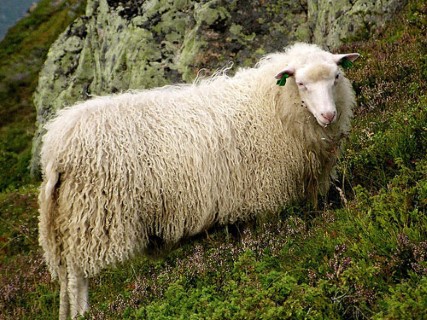
|
Spaelsau, also known as Spael, sheep are from Norway. They
are named for their short, nearly wool-less tail (spaelen). They originate from
old Norwegian landrace sheep. In 1912, two breeding stations were established
to prevent their extinction. Icelandic sheep were crossed onto the Spaelsau
sheep through semen import in the 1960's and 1970's. Finnsheep and Faeroe
Island sheep were also used in the breeding of Spaelsau sheep.
...
|
|
 Speckled-face Speckled-face
|
|
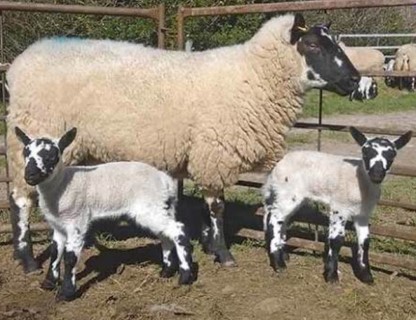
|
Speckled-face sheep have been bred on the hills of Eppynt,
Llanafan, Abergwesyn, and Llanwrtyd Wells for over 100 years, without
introduction of female stock. On the hill, the ewes are normally purebred,
providing flock replacements, finished lambs for the meat trade, or store lambs
for finishing on lowland farms.
Beulah ewes are also idea for crossing with most continental
rams, as well as Suffolk and Down rams to produce high-qualit
...
|
|
 St. Augustine St. Augustine
|
|
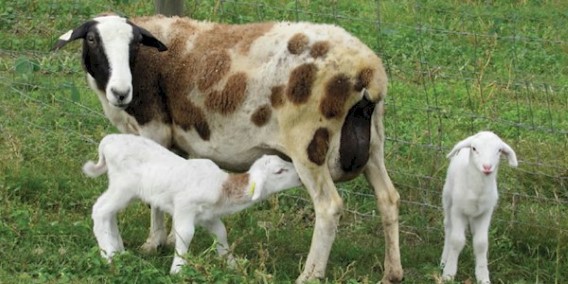
|
St. Augustine sheep are a cross between Dorper and St. Croix sheep. They were developed in
Florida, USA, by Ron Taber in 2000.
St. Croix, sheep have superior mothering abilities, parasite
resistance, and hardiness; while Dorpers are larger and have a heavily-muscled
frame. The result is a meat sheep cross that does well in hot, humid condition.
St. Augustine sheep are medium sized with a medium sized
frame. They are w
...
|
|
 St. Croix St. Croix
|
|
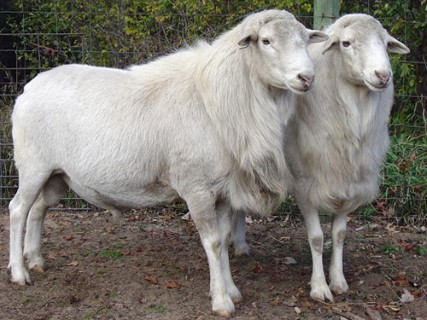
|
The St. Croix sheep, also known as the Virgin Island White, is a distinctive hair sheep breed originating from the Virgin Islands. Its ancestry is thought to trace back to hair sheep breeds of West Africa, although some suggest a possible crossbreeding with Wiltshire Horn and native Criollo sheep. Most St. Croix sheep exhibit a white coat, often accompanied by solid tan, brown, or black coloring, or adorned with brown or black spots.
B
...
|
|
 Steinschaf Steinschaf
|
|

|
Steinschaf sheep are a direct descendent of the now extinct
Zaupelschaf. They have developed characteristics that made them perfect for
life in the high mountains of Eastern Alpine regions. In the beginning of the
20th century the Steinschaf still roamed the meadows of Bavaria, Germany,
especially the areas around Berchtesgaden, Traunstein, and Rosenheim. In
Austria, their range was mainly in the Salzburg area.
The original Steinschaf
...
|
|
 Stewart Island Stewart Island
|
|

|
The rugged and remote landscape of Stewart Island, New Zealand, has witnessed the ebb and flow of sheep farming ventures since the late 19th century. In 1874, the island saw its first large-scale sheep farming endeavor at Scott Burn, albeit on terrain ultimately deemed unsuitable for sustained agricultural activities. However, undeterred by initial setbacks, subsequent sheep runs were established on drier and more favorable land at Island Hill an
...
|
|
 Suffolk Suffolk
|
|
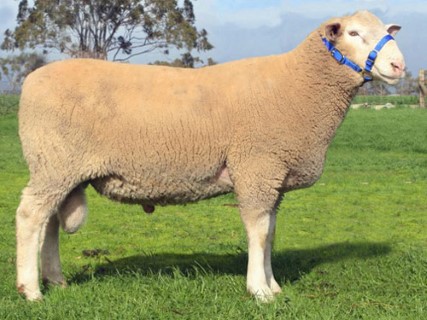
|
In 1977, Dr. Ewan Roberts embarked on a pioneering breeding program at the University of New South Wales in Australia with the ambitious aim of creating a terminal sire breed of sheep that combined the desirable traits of the Suffolk breed with distinct visual characteristics. His vision was to develop a breed with the robust confirmation, structure, and rapid growth of the Suffolk, while introducing a striking white coloration on the head and le
...
|
|
 Suffolk Suffolk
|
|

|
Suffolk Sheep, also known as "The Black Faces," are a breed renowned for their exceptional growth rate, muscular build, and high-quality meat production. Originating from England, Suffolk Sheep were developed in the early 19th century, primarily in the counties of Suffolk and Norfolk.
These sheep are prized for their remarkable adaptability to various climates and management systems, making them popular among farmers and ranchers world
...
|
|
 Swaledale Swaledale
|
|

|
Swaledale Sheep have a fascinating masked face: the upper
part of their face is deep black but a bright silvery white surrounds the nose
and eyes. The hair on their face is short and strong. They grow greyer with
age. Their horns are set low, round and rather wide. Their ears are grey or
silver and of medium length. Their wool is white except at the back of the head
where it is mixed with part black, with a thick deep bed and curly top of
m
...
|
|
 Swifter Swifter
|
|
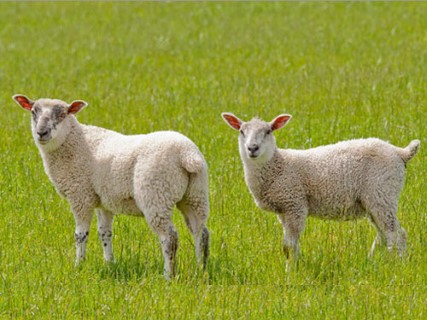
|
The Swifter sheep, a relatively new addition to the agricultural landscape, emerged in the 1970s as a result of strategic breeding efforts by the Agricultural University in Wageningen, the Netherlands. Designed to enhance the productivity and efficiency of Dutch sheep farming, the Swifter breed has quickly gained recognition for its impressive performance in meat production.
The development of the Swifter sheep involved a deliberate cr
...
|
|
 Swiss Black-Brown Mountain Swiss Black-Brown Mountain
|
|
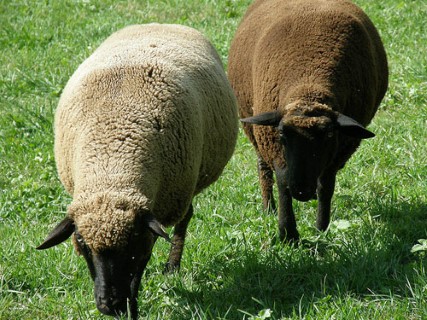
|
Swiss Black-Brown Mountain sheep trace their origins to ancient Swiss breeds, including the Swiss Jura, Simmentaler, Saanen, Frutiger, Roux de Bagnes, and Freiburger sheep. These sheep are classified as medium-sized and are characterized by their polled nature, meaning they lack horns.
The coat of Swiss Black-Brown Mountain sheep exhibits variations in color, ranging from black to chestnut-colored or light brown. Unlike some other bree
...
|
|
 Swiss White Alpine Swiss White Alpine
|
|
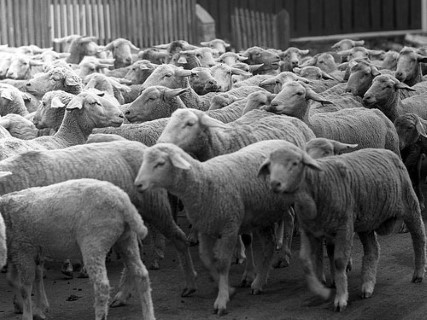
|
Swiss White Alpine sheep, renowned for their short wool and suitability for meat production, trace their origins back to Switzerland in 1936. This breed was developed through a deliberate crossbreeding program that involved mating the Swiss White Mountain with 50 to 75% Ile-de-France sheep.
The deliberate crossing of these two distinct breeds aimed to capitalize on the desirable traits exhibited by each parent breed. The Swiss White Al
...
|
|
 Tacola Tacola
|
|

|
Tacola Sheep, with their pristine white coats, are bred primarily for meat production. They are an indigenous breed, tracing their ancestry back to the Biellese sheep of the Alpine group. Tacola Sheep are primarily raised in the provinces of Cuneo, Biella, and Vercelli within the Piedmont Region of Italy.
This breed's lineage from the Biellese sheep, known for their hardiness and adaptability to mountainous terrain, contributes to the
...
|
|
 Taleshi Taleshi
|
|

|
Taleshi sheep are from Iran, numbering some 400,000 animals
in the north of the country, and distributed in the northern and western parts
of Gilan Province in the mountains between Assalem, Khalkhal, Oshkourat, and
Deilaman. They can can also be found in some areas of the Guilan-Zanjan border.
Their mean adult live weight ed is 35 kg (77 lbs) for rams
and 31 kg (67 lbs) for ewes. Their coat is yellowish-white to pure white, but
...
|
|
 Tan Tan
|
|
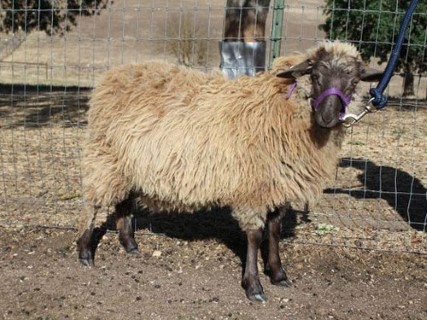
|
Tan sheep are renowned for their luxurious fur, characterized by long, curly hair. Their wool possesses exceptional qualities, being soft, lightweight, and fluffy, with long and uniform fibers. This wool is highly suitable for crafting high-grade blankets, shawls, and scarves of exquisite quality.
Raised in the desert and semi-desert regions of China, Tan sheep thrive in arid environments, where their woolly coats provide insulation ag
...
|
|
 Targhee Targhee
|
|
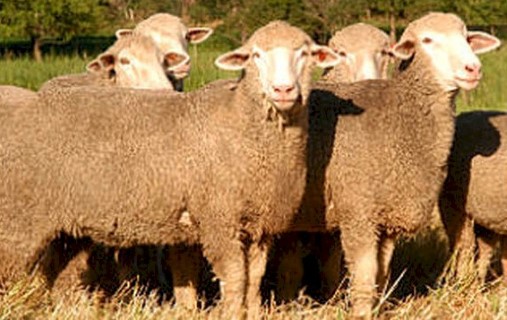
|
Targhee sheep are one of Americas newest breeds. They were
developed in 1926 at the U.S. Sheep Experiment Station in Dubois, Idaho, from
Rambouillet, Columbia, and Corriedale crosses. Targhee sheep derive their name
from the Targhee National Forest on which the experiment station's flock grazes
in the summer. The forest was named for a chief of the Bannock Indians who had
lived in the area in the 1860s.
Targhee are a dual-pur
...
|
|
 Tautersheep Tautersheep
|
|
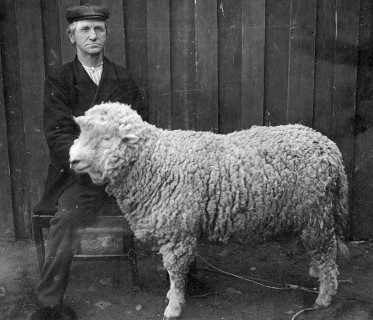
|
Tautersheep, also known as Tautra sheep, are an extinct
breed of sheep from Tautra island in Frosta, Norway. They were a sheep with
fine wool resembling the Spanish merino. The origin of this breed is disputed,
but could possibly be a merino sheep brought to Tautra several hundred years ago,
and afterwards mixed with old Norse sheep, others have claimed that the origin
is from the English Ryeland sheep, which suggest that the Tautersheep was
...
|
|
 Teeswater Teeswater
|
|

|
Teeswater sheep, originating from Teesdale in the County of Durham, Northern England, are renowned for their large size, hornless stature, and exquisite longwool fleece. Bred by farmers in the region for nearly two centuries, the Teeswater breed has gradually gained popularity and is now widely distributed throughout the United Kingdom.
The hallmark of Teeswater sheep is their fine, long-stapled, lustrous wool, which is highly prized i
...
|
|
 TEFRom TEFRom
|
|
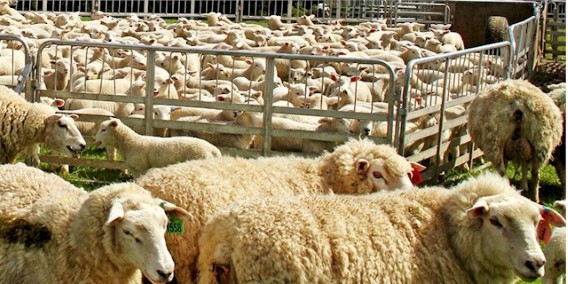
|
TEFRom sheep are a composite breed developed by crossing Texel, East Friesian, and Romney sheep, aiming to enhance lamb growth rates while ensuring efficient ewe performance. This composite sheep breed was strategically developed based on the following proportions:
- 25% Texel: selected for superior muscling, resistance to parasites, and a clean under the tail.
- 25% East Friesian: chosen for its high fertility, with a ba
...
|
|
 Texas Dal Texas Dal
|
|
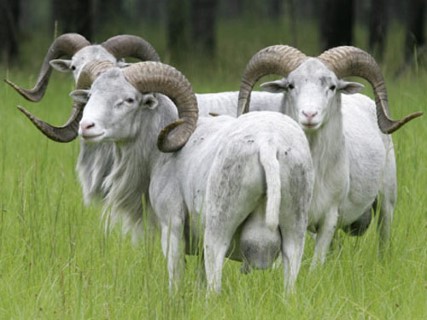
|
The Texas Dall sheep, distinguished from their distant Alaskan Dall relatives, emerge from a unique lineage, a captivating blend of Rambouillet, Barbados Blackbelly, and European Mouflon ancestry. Unlike their Alaskan namesakes, these Texan denizens boast a striking array of colors, ranging from pure white to the subtle hues of blond or pale champagne. Some individuals even sport captivating spotted markings, often reminiscent of fawn-like patter
...
|
|
 Texel Texel
|
|

|
Texel sheep, also known as Blue Texel, have become increasingly popular among commercial sheep farmers, particularly as terminal sires for prime lamb production.
This breed encompasses various types, including Dutch, English, and French Texel sheep. English Texels are typically taller animals, while Dutch Texels are characterized by their short legs and robust muscling. Despite these variations, all Texel sheep share remarkable muscle
...
|
|
 Tiroler Steinschaf Tiroler Steinschaf
|
|

|
Tiroler
Steinschaf, also known as Tyrolean rock sheep or Pecora della Roccia Tirolese,
sheep is found in Tyrol,
Austria and Bolzano, Italy. They are a coarse-wooled breed, belonging to the
Lop-eared Alpine group, which is kept mainly for meat production.
The Tiroler
Steinschaf is one of the forty-two autochthonous local sheep breeds of limited
distribution for which a herdbook is kept by the Associazione Nazionale della
Pastoriz
...
|
|
 Tong Tong
|
|
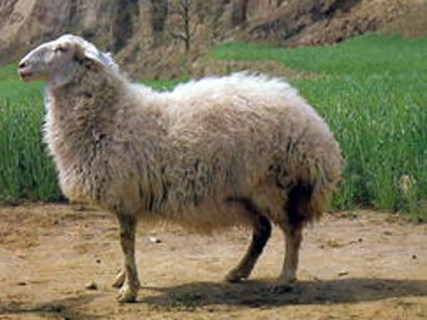
|
The Tong sheep, tracing their origins to the resilient Mongolian stock, embody the rugged spirit of survival amidst the harsh environs of the high plains in the northern Shaanxi Province of China. Thriving in an environment where the average temperature hovers around 13°C and annual precipitation ranges between 520 to 600 mm (20-24 inches), these hardy sheep have adapted to withstand the rigors of their challenging habitat.
Renowned fo
...
|
|
 Torddu Torddu
|
|

|
Torddu, the Welsh name
meaning 'black belly' have distinct black stripes above the eyes and a black
stripe running from under the chin to the belly and continuing underneath to
the end of the tail. The legs are black with a tan stripe. The fleece can be
white, grey or light brown, but preference is given to the lighter shades. The
wool should be firm and medium length (7-10 cm). The Torwen, the Welsh name
meaning 'white belly' show the reve
...
|
|
 Trimeticcia di Segezia Trimeticcia di Segezia
|
|

|
Trimeticcia di Segezia sheep, a newly developed breed originating from Segezia, represent a synthetic breed resulting from careful crossbreeding efforts involving three distinct breeds: the Italian Gentile di Puglia, the French Ile de France, and the German Wurttemberg sheep. These crossbreeding programs were conducted under the auspices of the Experimental Institute for Zootechny located in Segezia, within the province of Foggia, Italy.
|
|
 Tsigai Tsigai
|
|
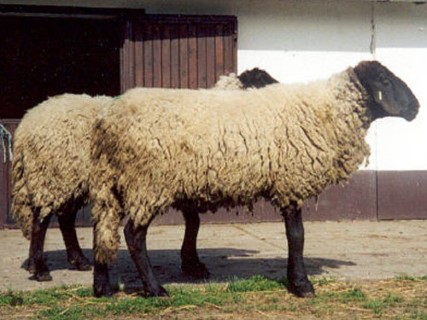
|
Tsigai sheep, originating in Southeast Europe, have been traditionally raised for both meat and milk production. This versatile breed exhibits various variations across different populations.
Throughout their history, Tsigai populations have undergone improvement efforts through crossbreeding with Merino and British meat breeds. These breeding programs aimed to enhance certain desirable traits, such as wool quality, meat yield, and ove
...
|
|
 Tukidale Tukidale
|
|
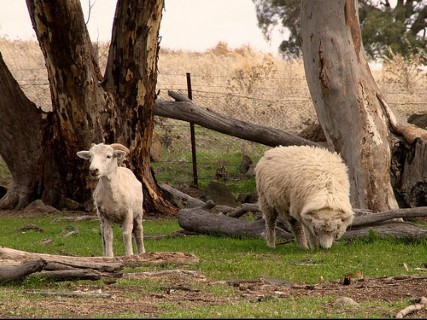
|
Technically, the Tukidale is a not a new breed of sheep, but
rather a Romney sheep carrying the T gene for hair. They originated on M.W.
Coops property in New Zealand from a ram born November 26, 1966. The ram
possessed the T gene, which is dominant. The T gene is responsible not only for
producing the specialty carpet-type fleece, but also the formation of horns in
the in the male and, to a lesser extent in females.
Tukidale
...
|
|
 Tunis Tunis
|
|
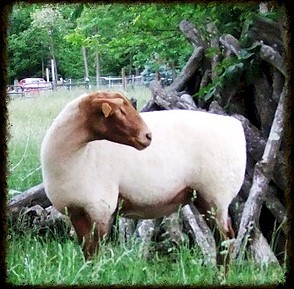
|
Tunis sheep are one of the oldest sheep breeds. It is
believed that they roamed the hills of Tunis and parts of Algeria in North
Africa prior to the Christian era. American Tunis sheep evolved from a number
of importations of fat-tailed sheep from Africa and the Middle East that were
crossed with established European breeds to improve the breed's meat
characteristics.
The earliest documented importation occurred in 1799, a gift
to th
...
|
|
 Turchessa Turchessa
|
|

|
Turchessa sheep are a medium-sized indigenous breed hailing from Campania, Italy, and are classified under the soft wool group. Their origins are speculated to involve crossbreeding with Mediterranean sheep, possibly incorporating characteristics of breeds with a fat tail.
Adorned in a pristine white coat, Turchessa sheep exude a classic elegance. The males of this breed boast impressive spiral-shaped horns, adding to their distinctive
...
|
|
 Turki Turki
|
|
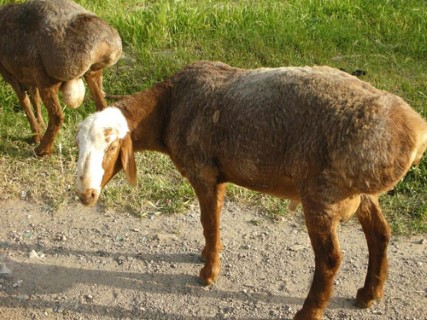
|
Afghanistan's diverse landscape is home to a treasure trove of unique sheep breeds, finely attuned to the rugged terrain and climatic extremes of Central Asia. Among these prized breeds, the Turki sheep stands out as a formidable presence, renowned for its distinctive features and commercial value in the region's pastoral economy.
Distinguished by its imposing stature and characteristic fat-rumped profile, the Turki sheep commands atte
...
|
|
 Tyrol Mountain Tyrol Mountain
|
|
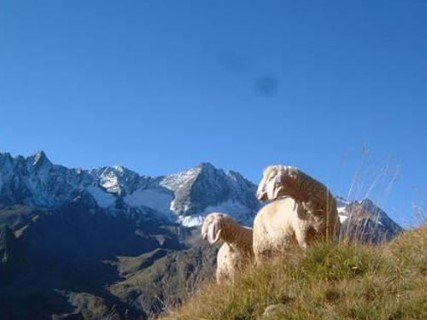
|
Tyrol Mountain Sheep, indigenous to the Tyrol region of Austria and Bolzano in Italy, represent a robust breed within the Lop-eared Alpine group, primarily raised for meat production. These hardy sheep boast coarse wool, distinguishing them from their counterparts in the region.
Compared to Carinthian sheep, Tyrol Mountain sheep exhibit superior wool quality, showcasing a distinct white face and longer ears. While predominantly found i
...
|
|
 Uda Uda
|
|
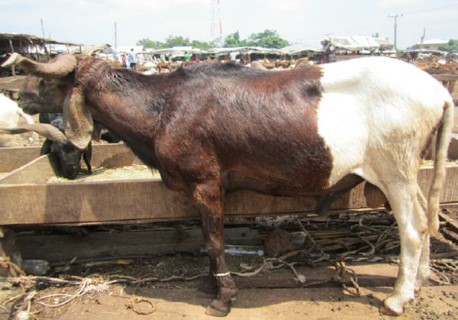
|
Uda sheep are from Africa. They are common in Chand,
Northern Cameroon, Northern Nigeria, and Niger. There are many varieties of Uda
sheep; but usually their back half is white and their front half is brown or
black. They are also known as Pied, Ouda, North Nigerian Fulani, Louda, Houda,
Foulbe, Fellata, Bororo, Bali-Bali, and Oudah bicolore sheep.
They are Sahel-type hair sheep and they are raised mainly
for meat production.
...
|
|
 Ujumqin Ujumqin
|
|
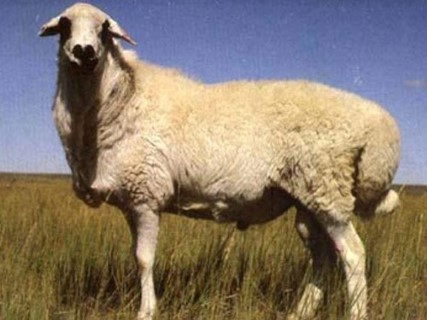
|
Ujumqin sheep are a larger version of the Mongolian breed, are
found in Inner Mongolia, China. They have a fat tail 28 cm (11.2 in) long by 36
cm (14.4 in) wide in the male, and 22 cm long by 28 cm (8.8 in) wide in the
female. When dressed, the tail fat weighs 2 kg (4.4 lbs) or more. Ujumqin sheep
were developed due to the sharp seasonal contrast in plant growth in the
pastoral areas.
The sheep tend to deposit a large amount
...
|
|
 Valachian Valachian
|
|
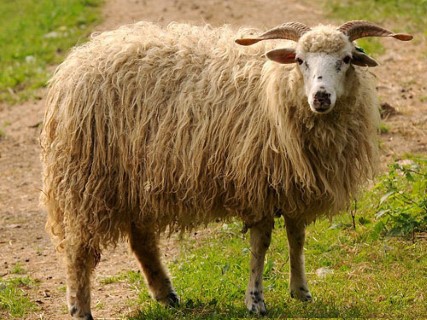
|
Valachian sheep are a highly endangered variety of landrace.
Presently, their only breeding is done in Germany and strictly for preservation.
Valachian sheep are dual-coated with coarse, mostly white wool that reaches the
ground; gray and black are rare.
Valachian rams often have Roman noses and look imposing with
spiraling horns of up to one meter, that stick out sideways. The ewes sometimes
have corkscrew-like, fine horns.
...
|
|
 Valais Blacknose Valais Blacknose
|
|
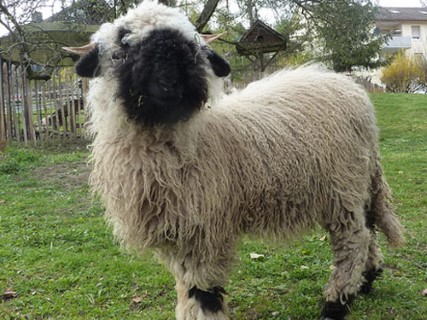
|
The Valais Blacknose sheep, originating from the picturesque Valais region of southern Switzerland, represent a captivating and rare dual-purpose breed renowned for their distinctive appearance and versatile characteristics. This breed is highly valued for its meat and wool production capabilities, making it a prized asset among livestock enthusiasts and breeders alike.
Both rams and ewes of the Valais Blacknose breed are adorned with
...
|
|
 Valle del Belice Valle del Belice
|
|

|
The Valle del Belice sheep, with their pristine white coats and matching heads, epitomize the picturesque landscapes of their namesake region in Sicily, Italy. While the males occasionally sport majestic horns, the females boast a hornless elegance that adds to their distinctive charm. As an indigenous breed hailing from the provinces of Agrigento, Trapani, and Palermo, they embody the rich agricultural heritage of the Valle del Belice.
...
|
|
 Van Rooy Van Rooy
|
|
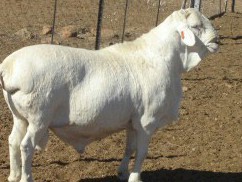
|
In 1906, Senator J. C. van Rooy, hailing from the Koppieskraal farm in the Bethulie district of South Africa, embarked on a pioneering venture aimed at cultivating a new breed of sheep optimized for the production of slaughter lamb. His vision for this breed was guided by three fundamental criteria:
- Strength and Hardiness: The breed had to possess resilience and vigor to withstand the challenges posed by fre
...
|
|
 Varesina Varesina
|
|
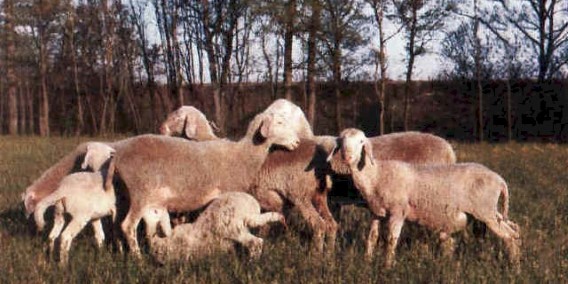
|
Varesina sheep
are a Lop-eared Alpine breed found in the area near Biandronno, Italy.
Originally they were transhumant (migratory), and until the mid-1960's some
Varesa sheep were in flocks that summered in the Alps. All that remain today
are sedentary and are kept in small family flocks of mixed breeds. They are one
of the largest breeds of sheep in Italy, and only slightly smaller than Biella
sheep.
The are white
sheep with a
...
|
|
 Vendeen Vendeen
|
|

|
The Vendeen sheep, known for its distinctive appearance and robust build, embodies the rustic charm and resilience of its native region. Originating from the Vendée region of western France, this breed has become renowned for its unique characteristics and versatile utility in agricultural settings.
One of the most striking features of the Vendeen sheep is its head and legs, which range from pale to dark brown and are lightly fleeced,
...
|
|
 Vicentina Vicentina
|
|

|
Vicentina sheep
are white and raised for meat. They are a variety of LamonSheep. They are found
on the Asiago Plateau (Vicenza Province, Lombardy Region, northern Italy).
Formerly, they were also in the Chiampo Valley. Most sheep in the area are in
family holdings of only three to four head. In the winter they are stall-fed,
but during the summer are put into bands of 700–1.000 sheep to graze in the
mountains above the plateau.
V
...
|
|
 Villnosser Villnosser
|
|

|
Villnosser sheep
(also known as Karntner Brillenschaf, Jesersko- Solcavska, or Brillenschaf)
were developed in the 18th century, from crossbreeding Carinthian Landrace, Bergamask,
and Paduan silk sheep. In Southern Carinthia, the Friaul, and in Slovenia,
Villnosser sheep were very common.
Villnosser sheep
are a strong and medium-sized sheep with a roman and a bare head with lop ears
of medium length. They have black spots around
...
|
|
 Vissanna Vissanna
|
|

|
Vissanna sheep, an indigenous breed hailing from Visso in the province of Macerata, Italy, are esteemed members of the Apennine group. Thriving in high hills, these sheep exhibit remarkable adaptability, efficiently utilizing meager pastures to meet their needs.
Characterized by their medium-small stature, Vissanna sheep typically stand at around 70 centimeters for males and 60 centimeters for females at the withers. Their wool, predom
...
|
|
 Vlaams Schaap Vlaams Schaap
|
|
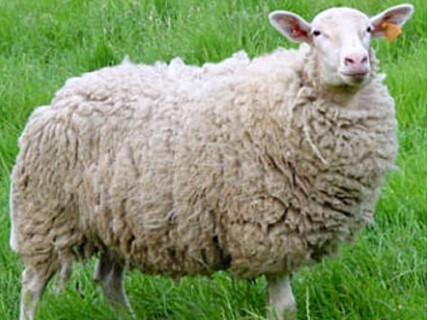
|
Vlaams Schaap, also known as the Flemish Sheep, is a rare and versatile breed with a rich history originating in Belgium during the late Middle Ages. Despite its distinct characteristics, it is sometimes mistaken for the Belgium Milk Sheep due to similarities in appearance.
Historically, the Flemish Sheep population experienced a decline after the Second World War, when all native milk sheep were consolidated into the Belgian Milk Shee
...
|
|
 Voskop Voskop
|
|
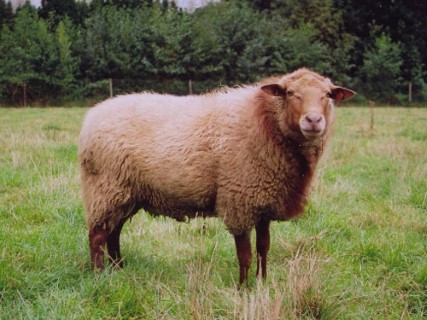
|
The Voskop, also known as Fox Head sheep, shares ancestry with the Ardense sheep, originally brought to the lush Flemish meadows for fattening purposes. These sheep are characterized by their moderate size, with rams typically weighing between 70 and 80 kg (154-176 lbs.) and ewes ranging from 55 to 70 kg (121-154 lbs.).
Ewes of the Voskop breed demonstrate good maternal instincts, weaning an average of 1.7 lambs per birth. Their wool i
...
|
|
 Wallis Country Wallis Country
|
|
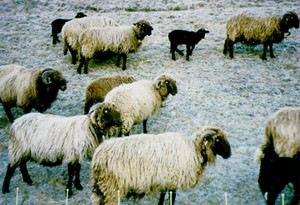
|
Wallis Country Sheep (Roux du Valais) are from Upper Wallis,
where they were once as widespread as the Valais Blacknosed Sheep. It is
believed that they are related to the now extinct Copper Sheep, Pilot Sheep, Roux
de Bagnes.
They are reddish-brown color (roux) and are horned. They have course wool and are used for a
lean meat production. They are noted for their extreme trust in humans and a
particularly strong herd instinct. T
...
|
|
 Waziri Waziri
|
|
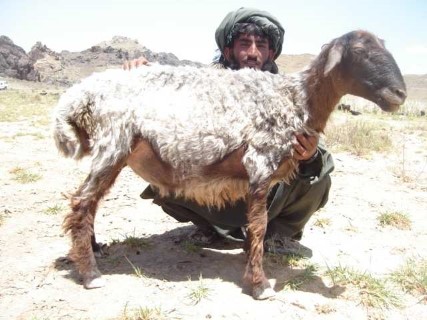
|
The Waziri sheep, native to the rugged terrain of the Waziristan region in Pakistan, as well as the Bannu District in Khyber-Pakhtunkhwa, exemplify resilience and adaptability in challenging environments.
Characterized by their medium-sized stature, Waziri sheep possess a distinctive appearance that sets them apart. Their muscular body, predominantly white in color, exudes strength and vitality, reflecting their adaptation to the harsh
...
|
|
 Welsh Halfbred Welsh Halfbred
|
|

|
Welsh Halfbred, also known as Welsh Mules, are the progeny
of registered Bluefaced Leicester rams crossed with ewes of one of three hardy
hill breeds from Mid and North Wales -- the Welsh Mountain, Welsh Hill Speckled
Face and Bealah -- all having the reputation for being healthy, hardy, good
foragers with exceptional mothering qualities.
The Welsh Halfbred was developed in the 1970's to satisfy
the demand from prime lamb producers fo
...
|
|
 Welsh Hill Speckled Face Welsh Hill Speckled Face
|
|

|
Welsh Hill Speckled Face Sheep are characterized by their striking appearance, featuring black markings on the nose, eyes, ears, knees, and feet, set against a predominantly white body. Ewes of this breed are typically polled, while both horned and polled rams are acceptable. On average, mature ewes weigh between 50 and 55 kilograms, while rams range from 60 to 70 kilograms in weight.
|
|
 Welsh Mountain Welsh Mountain
|
|

|
Welsh Mountain ewes have a white or tan face, they have a strong close textured fleece and a typical ewe clip weighs up to 2kg. The ram is usually, but not always, horned. Average mature ewe weighs 35-40kg on the hill or mountain but can add a further 10kg when drafted onto lowland.
Content and Photo Source: National Sheep Association.
|
|
 Welsh Mountain Welsh Mountain
|
|
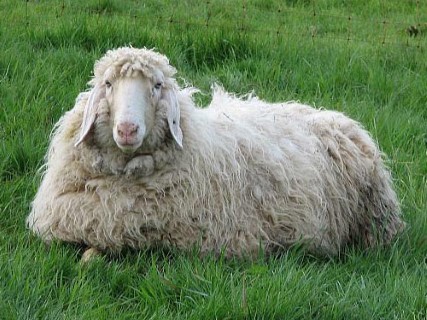
|
Welsh Mountain ewes are renowned for their hardy and resilient characteristics, making them well-suited for upland environments and mountainous terrain. These ewes typically exhibit a distinctive white or tan face, which complements their robust physique.
One of the notable features of Welsh Mountain sheep is their dense and close-textured fleece, prized for its quality and resilience. A typical ewe clip yields up to 2 kilograms of woo
...
|
|
 Wensleydale Wensleydale
|
|

|
Wensleydale sheep are renowned for their imposing size and longwool characteristics. They possess a bold and alert demeanor, emphasized by their broad, level backs, wide quarters, and robust thighs. Their deep blue head and ears, typically clean except for a well-developed forelock of wool known as the 'topping,' give them a distinctive appearance. Additionally, both males and females of this breed are naturally polled. On average, mature ewes we
...
|
|
 West African Dwarfs West African Dwarfs
|
|
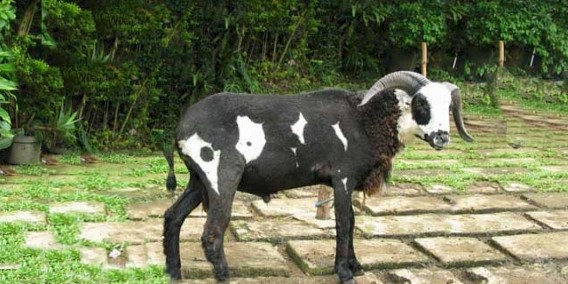
|
West African Dwarfs, also known as Djallonkes, are the predominant sheep breed across southwest to central Africa, ranging from Senegal to Chad, Gabon, Cameroon, and the Republic of the Congo. They are exceptionally well adapted to thrive in a variety of environments, including humid forested areas, sub-humid regions, and savannahs. Primarily raised for meat production, these sheep exhibit distinctive characteristics that make them highly suited
...
|
|
 West African Dwarfs West African Dwarfs
|
|
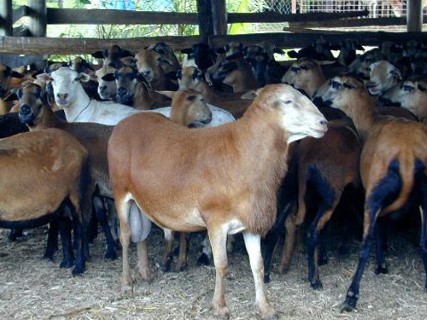
|
West African Dwarfs (also known as Djallonkes) are the
dominant sheep breed from southwest to central Africa. They are found from
Senegal to Chad, Gabon, Cameroon and the Republic of the Congo. They are well
adapted to life in humid forested area, sub-humid areas and savannahs. They are
primarily raised for meat.
West African Dwarfs are generally white or piebald, their
front half is black and their back half is white. However, sk
...
|
|
 White Headed Marsh White Headed Marsh
|
|

|
White Headed Marsh Sheep originated in the north sea marshes
of West Germany. Its beginnings can be traced back to the mid-1800s when North
German Marsh sheep, the local milk sheep, were crossed with imported British
longwool breeds, including the Cotswold.
In Denmark and North Germany the White Headed Marsh live
outside in very wet and cold conditions. They are known for their hardiness,
natural immunity, easy-care and excellent
...
|
|
 White Horned Heath White Horned Heath
|
|
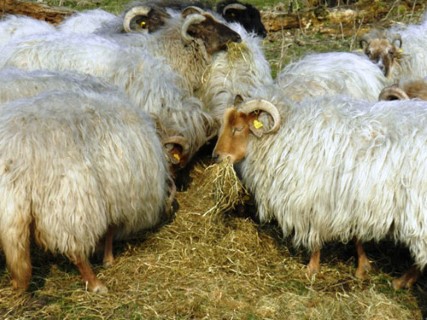
|
White Horned Heath sheep originated from the Grey Horned
Heath Sheep and was first developed as a separate breed at the beginning of the
20th century. The original herds consisted of both horned and polled animals. A
few years later they were divided into two breeds, the polled called White
Polled Heath or Moorschnucke.
Since 1949, the White Horned Heath has been recognized as a
new race. They are a small landrace breed which
...
|
|
 White Polled Heath White Polled Heath
|
|
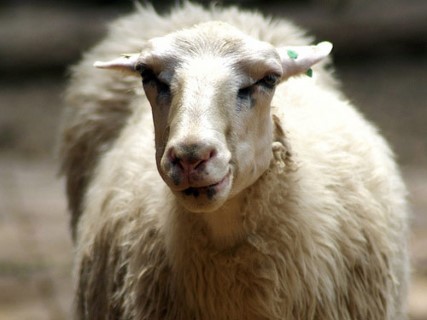
|
The White Polled Heath sheep, hailing from the northern German counties of Diepholz, Nienburg, and Rotenburg, are renowned for their hardiness, frugality, and unique characteristics that make them a valuable part of the region's agricultural heritage.
These sheep are distinguished by their white coloration and dual-coated fleece, which provides insulation and protection against the harsh elements of their native moorland habitat. Despi
...
|
|
 Whiteface Dartmoor Whiteface Dartmoor
|
|

|
Whiteface dartmoor Sheep have a white head and face, the
face of the ewe being free of wool, the ears are short and thick with
occasional black spots on them. They were always horned but this feature has
tended to disappear over the years, particularly amongst the ewes. The body is
deep, broad and of medium length. The wool is white, of good staple and with a
fairly strong crimp. Average mature ewe weighs 54kg, rams 74kg.
Content and
...
|
|
 Whiteface Woodland Whiteface Woodland
|
|
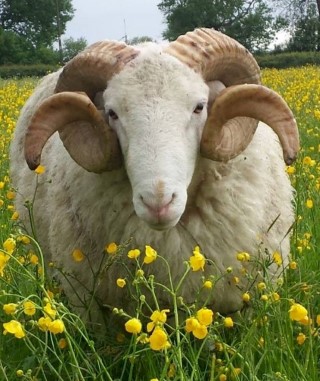
|
The Whiteface Woodland Sheep, a majestic hill breed of substantial stature, presents a commanding presence with its broad, strikingly white face adorned by a delicate pink nose. Their robust frame is accentuated by legs of pure white, unburdened by wool, while their fleece boasts an exquisite quality, reflecting the purity of their upland habitat.
Both males and females of this esteemed breed proudly display their impressive horns, wit
...
|
|
 Wild Wild
|
|

|
Wild sheep or bushies have long been known to occur in the
area around the headwaters of the Waianakarua River, inland from Herbert and
Hampden, in North Otago, NZ. This area is at the southern end of the Kakanui
Mountains and the northern end of the Horse Range. They originated from stragglers
that escaped muster on sheep farms, and although occasionally shot, were
largely left alone. From about the 1970s serious efforts were made to eradic
...
|
|
 Wiltshire Wiltshire
|
|

|
Wiltshire Sheep are a unique and ancient breed known for their distinctive characteristics. These sheep are renowned for their lack of wool, making them stand out among other breeds. Originating from lowland regions, Wiltshire Sheep are typically large in size with white faces, giving them a striking appearance.
Both male and female Wiltshire Sheep are horned, adding to their distinctive features. Unlike traditional wool-producing shee
...
|
|
 Wiltshire Polled Wiltshire Polled
|
|
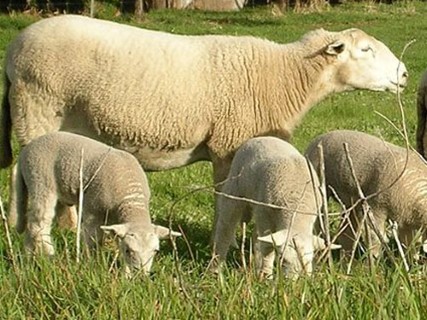
|
Wiltshire Polled, also known as Wiltipoll, Sheep are polled
sheep that were developed in Australia. Development was started with Wiltshire
Horned ewes and expanded with Border Leicester, Perendale, Poll Dorset, and
Poll Merino genetics.
Wiltshire Polled Sheep are large (they weigh up to 125 kg -276
lb), are very hardy, and can survive on rough, scrubby feed. They are primarily
raised for meat.
Wiltshire Polled Sheep sh
...
|
|
 Woodstock Woodstock
|
|

|
Woodstock Station, situated in the picturesque Waimakariri River valley west of Oxford in Canterbury, New Zealand, is home to one of the country's lesser-known flocks of feral sheep. Initially overlooked during surveys conducted in the 1970s, these sheep were deemed of little significance and were earmarked for eradication by the Department of Conservation. However, recent recognition of the potential genetic value of feral flocks with early orig
...
|
|
 Wrzosowka Wrzosowka
|
|
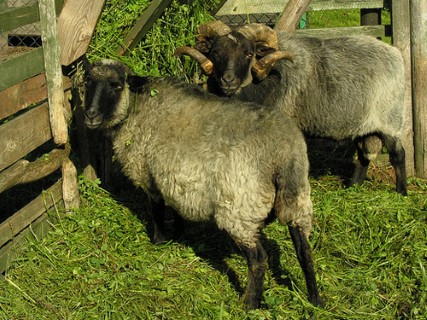
|
Wrzosowka sheep belong to the Northern type of short-tailed
sheep which have been kept for centuries in different regions of Europe,
including Northeastern parts of Poland. They are unique among Polish sheep
breeds, since they are extremely adaptable to difficult conditions,
disease-resistant, and prolific. They are able to reproduce all year round.
They are rather thin and small, proportionally built. Their
fleece is usually
...
|
|
 Xinjiang Finewool Xinjiang Finewool
|
|
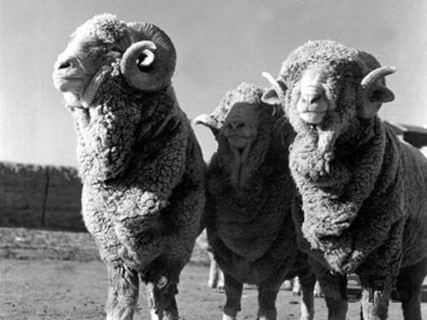
|
Xinjiang Finewool sheep were among the first of the Chinese
breeds and they played a part in the establishment of other breeds. The
original crosses were between Russian Merino rams, probably of the Caucasian,
Precoce, and Stravrapol types, with local breeds of ewe. The most important of
these breeds was the Kazakh, but some Mongolian ewes were also used.
There followed a program of backcrossing to the Merino
parent, with som
...
|
|
 Zerasca Zerasca
|
|
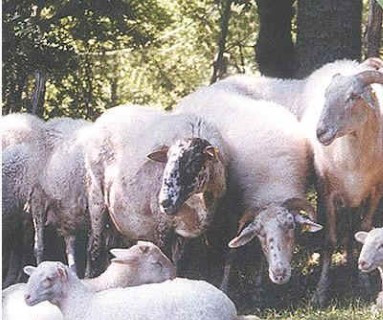
|
The Zerasca sheep, hailing from the picturesque landscapes of Zeri in Tuscany, Italy, stands as a testament to the resilience of local ovine breeds in the face of evolving agricultural practices and market demands. Amidst the shifting tides of modern farming, the Zerasca breed has endured, cherished by farmers for its robust nature and remarkable ability to thrive in rustic conditions.
Medium-sized and clad in pristine white wool, Zera
...
|
|
 Zulu Zulu
|
|
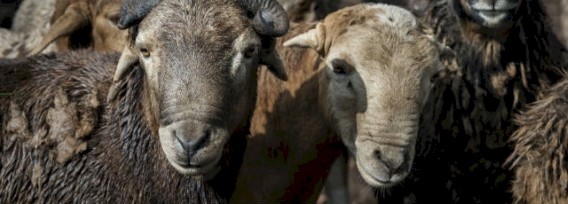
|
Zulu sheep are native to South Africa and are predominantly
raised by rural farmers in the province of KwaZulu-Natal. They are raised primarily
for meat. They belong to the Nguni type of sheep.
Zulu sheep are small, multicolored sheep that are well
suited to the harsh conditions and very tolerate to diseases. In addition they
can walk long distances and have good foraging ability.
Nevertheless, their existence is threat
...
|
|
 Zwartbles Zwartbles
|
|

|
Zwartbles sheep are
from the Friesland region of the north Netherlands. They are primarily used for
the production of sheep milk as well as lamb and mutton. They are known for
being docile and friendly, and they are also prolific milkers and are excellent
mothers.
Zwartble sheep
have a distinct appearance; they have a black/brown fleece, a white blaze on
the face, 2 - 4 white socks, and a white tail tip (which is traditionally le
...
|

© 2007 - 2024 Copyright Global Grange inc. All Rights Reserved.
|

